




















































































































In2024, the Estonian film landscape has already seen several developments that have not only secured the success of our films but also brought global recognition to our industry. One such highlight is the premiere of Anna Hint’s and Tushar’s short film Sauna Day as a special screening at the Critics’ Week programme in Cannes. This is a testament to the international appeal of our filmmakers and their ability to captivate audiences worldwide.
A crucial figure in Estonia’s success story is Ants Tammik, the award-winning cinematographer whose remarkable work for the documentary Smoke Sauna Sisterhood helped it reach a wider audience and win the hearts of critics.
VFX wizard Heiki Luts has likewise made significant contributions to both Estonian as well as major international projects. His input in creating visual effects has brought new, innovative, and captivating experiences to our national cinema.
Our film industry is not just about one genre or style. It’s a rich tapestry of diverse stories and artistic expression. Kelly. Someone Else’s Dream by Leana Jalukse and Helen Lõhmus, and other Estonian documentaries continue to soar. Their efforts have garnered recognition both domestically and internationally, showcasing the breadth of our cinematic landscape and inviting audiences to explore more of our films.
The phenomenon of Alien II, a new film by the talented Rasmus Merivoo, has left the critics somewhat sceptical, but has quickly found its way into the hearts of the public, attracting more than 75,000 viewers in just two weeks. This is an astonishing number that demonstrates the domestic audience’s appreciation of diversity and bold approaches.
In addition to the local Estonian Film and TV Awards (EFTA), both nominations and prizes were brought home from the national film awards of other countries, inspiring us all to continue pushing the boundaries of Estonian cinema.
Estonia’s second largest town Tartu is the European Capital of Culture this year. The Tartu24 film programme, but more broadly, the entire programme of the capital of culture, has been an essential platform for introducing Estonian cinema. These events provide opportunities for both local and international filmmakers, and enrich the European cultural landscape with new fascinating films. So stay tuned in to Estonian Cinema!
Edith Sepp, CEO of Estonian Film Institute4 NEWS Estonian Film & TV Awards
6 NEWS Frank in Post-Production
8 DOCS Kelly. Someone Else’s Dream by Leana Jalukse & Helen Lõhmus
14 NEWS The Award Season Is in Full Swing
16
20
TALENT Ants Tammik
Putting the Possible into Impossible
NEWS Mo Papa in Post-Production
22 COVER STORY Sharing Success. Anna Hints’ & Tushar Prakash’
28
Sauna Day in Cannes
TALENT Heiki Luts Master of Effects
32 ANIMATION Sander Joon
All Geared Up
33 NEWS Awards from Abroad
34 IN FOCUS Collaboration with Nature. On Weary Wings Go By by Anu-Laura Tuttelberg
38 EVENT PÖFF Fresh Horizons for Filmmakers
42
EVENT Art as a Tool for Survival. Tartu24
44 EXTRA Life is an Adventure, F**k Yeah! Alien II
FUNDS How to Find Money in Estonia
REVIEW Dark Paradise
REVIEW The Invisible Fight
56 NEW FILMS The Overview of the Latest Estonian Films

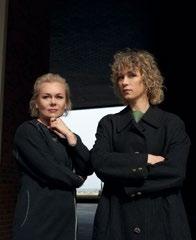
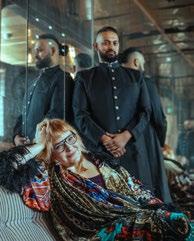
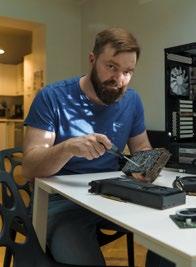
Estonian Film is published three times per year by Estonian Film Institute
Estonian Film Institute Uus 3, 10111, Tallinn, Estonia
Phone: +372 627 6060 I E-mail: film@filmi.ee I filmi.ee
Editor in Chief: Eda Koppel
Contributing Editor: Leana Jalukse
Contributors: Andrei Liimets, Emilie Toomela, Aurelia Aasa, Tristan Priimägi, Mirjam Mikk
Translation: Tristan Priimägi
Linguistic Editing: Paul Emmet
Design & Layout: Profimeedia
Printed by Reflekt
Cover: Anna Hints & Tushar Prakash
Photo by Riina Varol MUAH by Marii Lotta
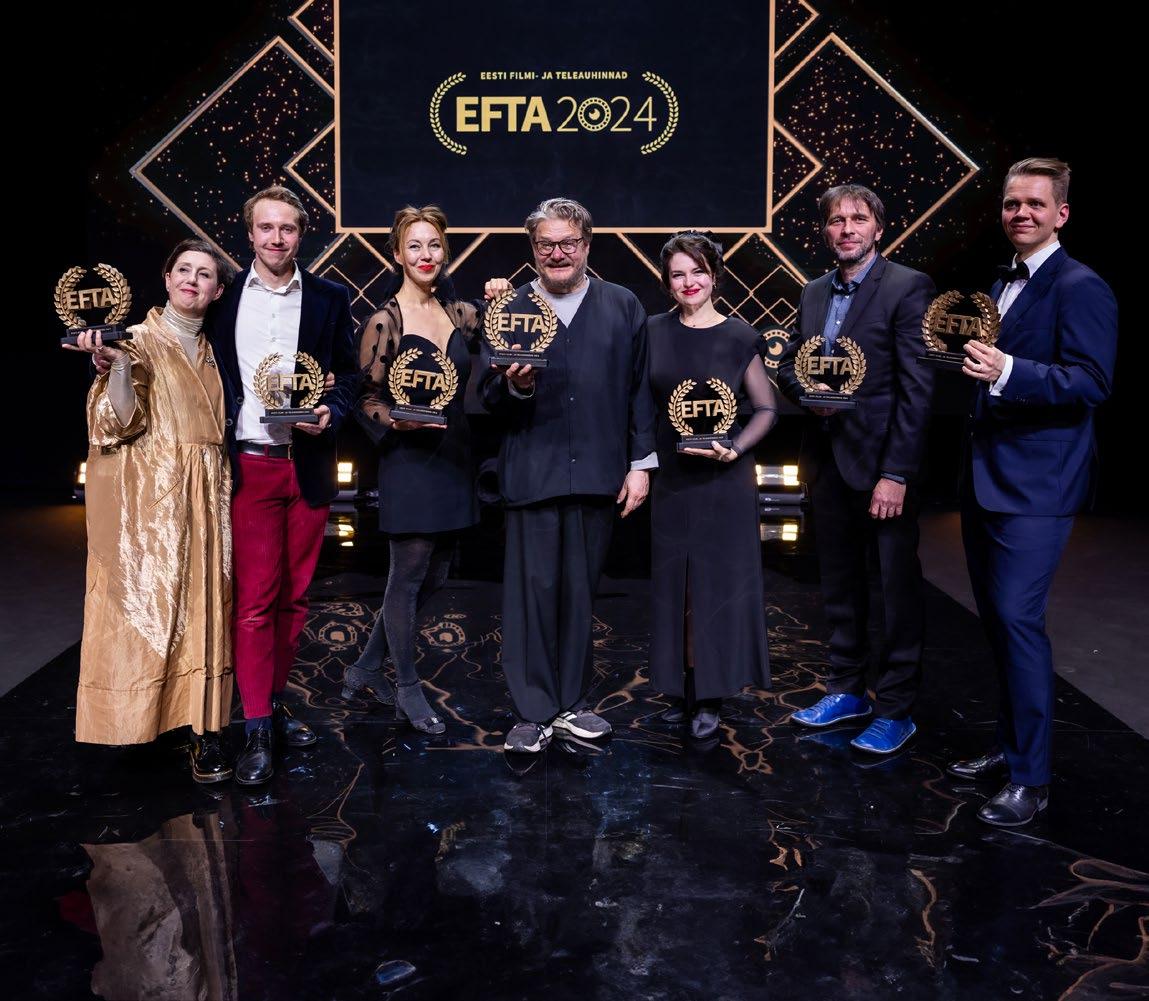
The list of film laureates at the 2024 Estonian Film and Television Awards is the shortest ever, as Rainer Sarnet’s latest masterpiece garnered a record-breaking nine awards.
By Leana Jalukse Photos by Erlend ŠtaubBest Actress and Best Actor were won for the roles in The Invisible Fight – by Ester Kuntu and Ursel Tilk accordingly. The film’s art depart-
ment also collected all three available awards – Jaagup Roomet was deemed Best Production Designer, Jaanus Vahtra Best Costume Designer, and Anu Konze Best Make-
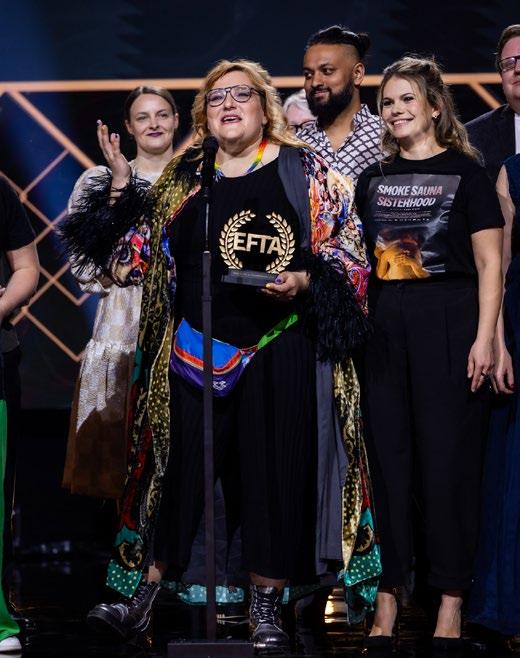
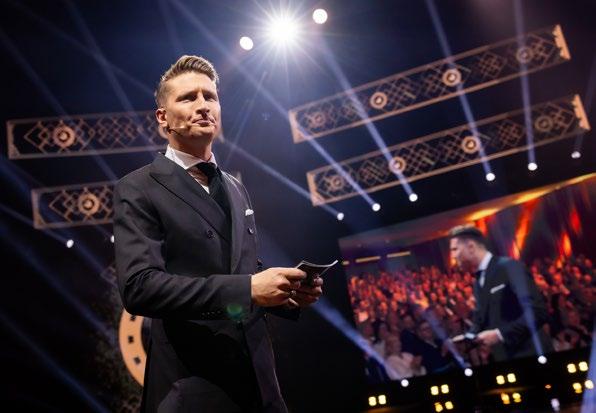
Karl-Erik Taukar was the host of the gala.

up Artist. Two awards went abroad – Best Film Editor award went to Jussi Rautaniemi from Finland, and Best Composer to Hino Koshiro from Japan. Director Rainer Sarnet personally won Best Screenplay, and the entire team headed by himself and producer Katrin Kissa from Homeless Bob Production walked to the stage for Best Feature Film. The Invisible Fight had been nominated in eleven categories.
Smoke Sauna Sisterhood, which already won Anna Hints the Best Director award at Sundance Film Festival 2023, received the same prize at the EFTAs. Capturing the visuals and designing the sound of the film won Best Cinematographer and Best Sound Designer awards for Ants Tammik and Huldar Freyr Arnarson (Iceland). Unsurprisingly, the film also won Best Documentary, meaning a clean sweep in all four categories nominated. Smoke Sauna Sister-
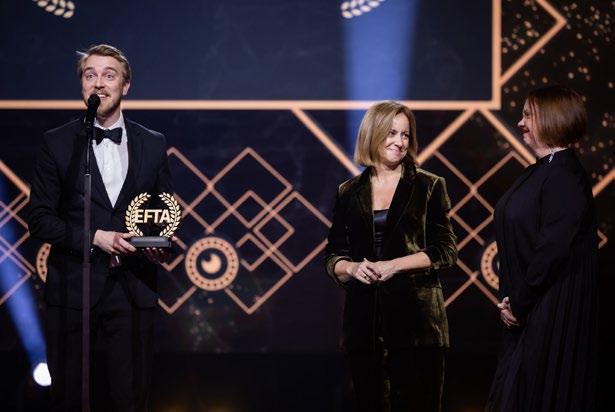
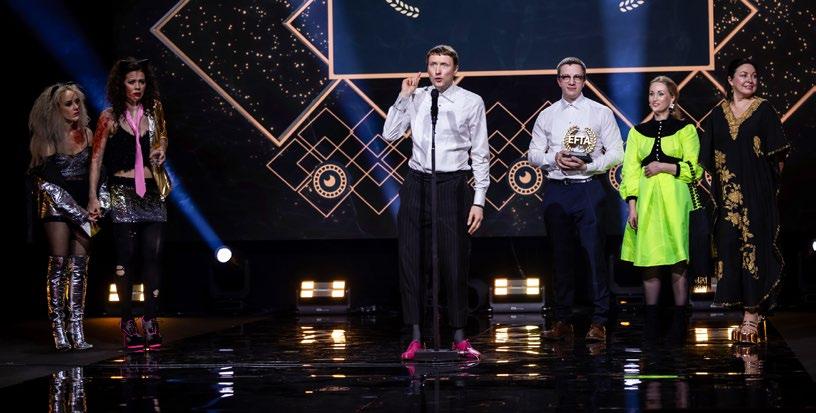
hood is produced by Marianne Ostrat from Alexandra Film.
Best Animation went to The Mystery of the Missing Socks by Oskar Lehemaa, who has been on a months-long festival circuit with the film, and has already collected a number of awards. The socks turned up in the director’s pocket. The film is produced by Kristel Tõldsepp from A Film Eesti.
Indrek Spungin’s documentary L is for Love, inspired by the director’s personal struggles, won Best Short Film. The film is produced by Anu Veermäe-Kaldra, from Menufilmid.
Lifetime Achievement award for contribution to the Estonian film industry was given to film editor Kersti Miilen, whose career started in the 1970s, when films were still cut and glued physically. Miilen has edited over 70 films in the course of her career. EF
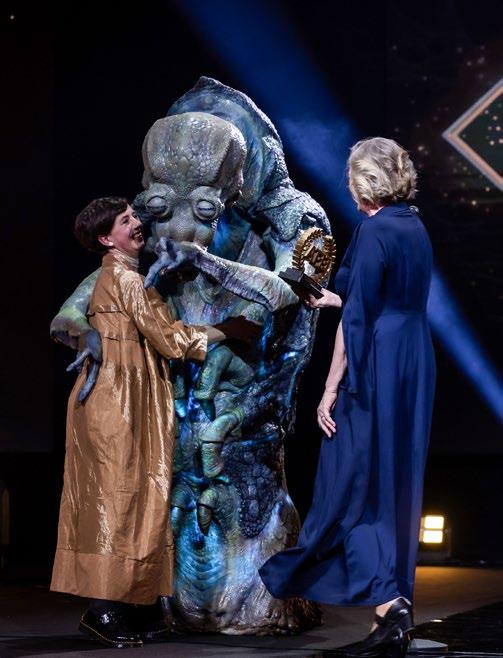 Indrek Spungin and L for Love team accept the award for Best Short Film.
Kersti Miilen received the Lifetime Achievement award.
Oskar Lehemaa accepts the award for Best Animation.
The award to Anu Konze was handed over by actress Liina Tennosaar and Kri-In-Poulsen, a character from The Black Hole
Indrek Spungin and L for Love team accept the award for Best Short Film.
Kersti Miilen received the Lifetime Achievement award.
Oskar Lehemaa accepts the award for Best Animation.
The award to Anu Konze was handed over by actress Liina Tennosaar and Kri-In-Poulsen, a character from The Black Hole
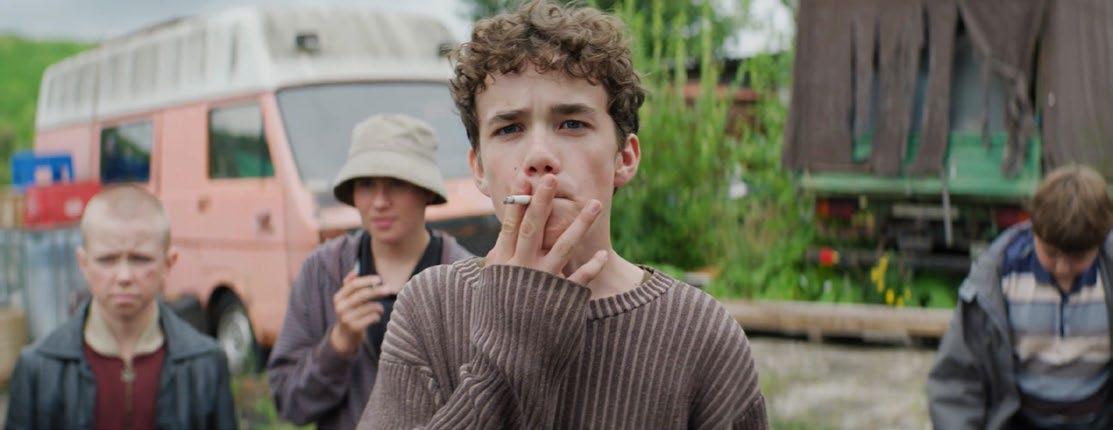
Tõnis Pill, whose debut short Blue made its premiere at PÖFF Shorts, went on to win awards at the European Independent Film Festival, and collect multiple nominations at the Estonian Film and TV Awards; is now in the editing room with his feature debut Frank
By Leana Jalukse Photos by Markus Muide, Ivo Felt and AllfilmRenowned producer Ivo Felt (Tangerines, Truth and Justice, The Fencer) invited Pill to make his debut feature at Allfilm after noticing the talent in his student films, and witnessing his dedication as an AD on the sets of the studio’s previous productions, including national blockbusters Kalev and Truth and Justice as well as Christopher Nolan’s Tenet.
Frank unfolds against the backdrop of a teenager’s summer, a boy whose formative years were marred by a violent upbringing. Finding himself in the unfamiliar confines of a small town, he makes a string of bad decisions, but has a chance at redemption on meeting the right peo -


ple. Ivo Felt was captivated by the narrative’s warmth and humanity, courageously tackling themes of domestic violence, bullying, and the absence of love. The director’s vision transcends stereotypes, aiming to show that even bullies are fundamentally human, shaped by the burdens of their past.
The storyline pivots on crucial moments where choices hold the power to alter destinies. Despite the grittiness of the subject matter, the narrative is fuelled by unwavering faith and hope for a brighter future, emphasising that love remains both possible and prevalent. Felt underscores the film’s societal relevance, suggesting its inclusion in school curricula as a means to provoke essential conversations on pressing social issues.
The film boasts a crew featuring several emerging talents, making their first or second feature film in a new role. The director of photography, Peter Kollanyi, the production designer, Kaia Tungal, and the sound designer, Aleksandra Koel, are all making their second film, while the line producer, Andrea Uibo, and the 1st assistant director, Matilde Matvere, make their debuts in these crucial roles.
Felt admits that they went knowingly against the advice of every production textbook, and did not surround the director, making his feature debut, with a bunch of seasoned professionals, but wanted to inject fresh energy into the project instead – and the risk paid off.
He adds that the shooting period was intense, but had a good vibe – even though

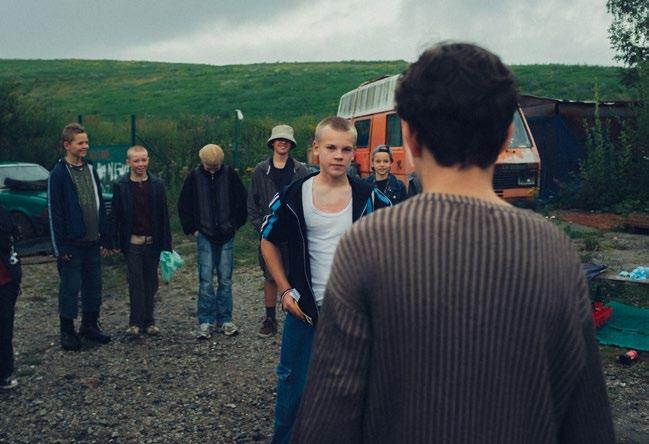
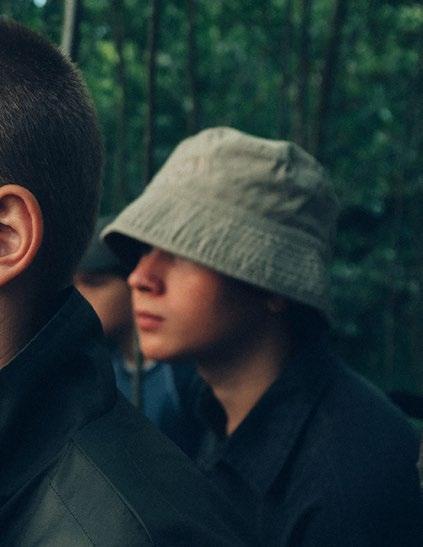

the constraints of the budget did not allow for as many shooting days as would have been ideal for a project involving young actors. He especially praises the assistant directors – Matilde Matvere and Rauno Laikjõe, but also the casting director Heli Jürisson – for withstanding the pressure of working with such a crazy bunch of nine boys.
The casting already began during the financing stage, when a pilot film was made. The process was long and thorough, and the eventual actors were found from all corners of the country. Even though it took a year until production started, no one had to be replaced. Director Tõnis Pill was especially happy about finding Derek Leheste, who fit the character in his screenplay perfectly.
The post-production is now at around the half-way mark, but producer Felt is not hurrying the young director – he aims to bring the film to the silver screens in early 2025. EF
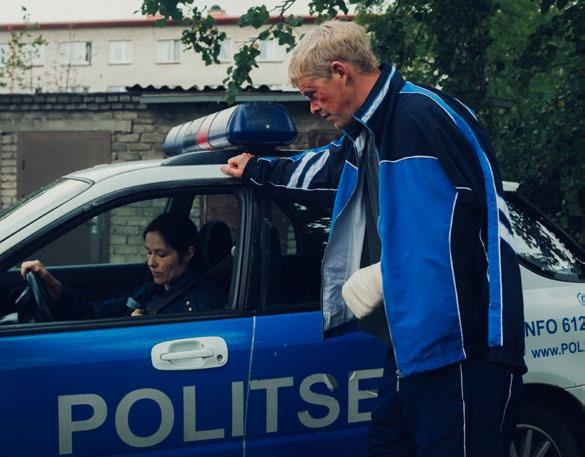
Director Tõnis Pill
Director of photography Peter Kollanyi
Production designer Kaia Tungal
Costume designer Liis Plato
Make-up artist Liisi Põllumaa
Editor Moonika Põdersalu
Sound director Aleksandra Koel
Composer Markus Robam
The film is produced by Ivo Felt and Johanna Trass, with co-producers
Rain Rannu, Tõnu Hiielaid, Alvar Kõue, and Henri Savitski
Derek Leheste, Oskar Seeman, Tõru Kannimäe, Märt Pius, Priit Võigemast, Tiina Tauraite, Katariina Tamm, Oliver Kõvask, Jekaterina Linnamäe, Märt Avandi, and others.

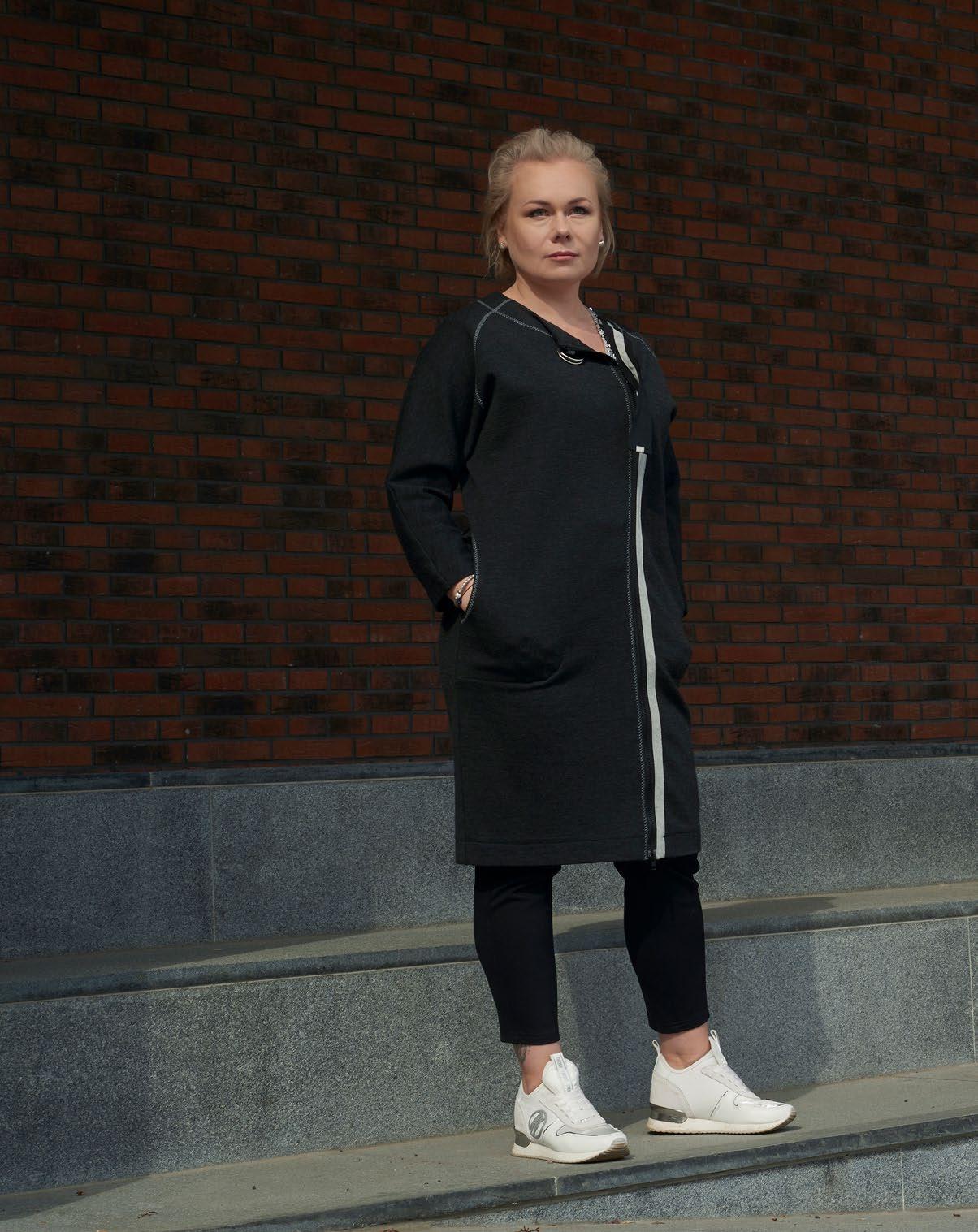

Estonian documentary Kelly. Someone Else’s Dream premieres in May at Hot Docs in Toronto, the most coveted and largest documentary film festival in North America. Estonian directors Helen Lõhmus and Leana Jalukse share behind the scenes of the film on Kelly Sildaru, freestyle skiing prodigy, whose riveting story isn’t easy to hear and has shocked fans internationally.
By Emilie Toomelayou asked an Estonian, what comes to mind when hearing the name Kelly Sildaru a few years ago, their eyes would’ve lit up – Kelly is an amazing athlete and we’re so proud of her. If you ask them now, you could get a mixed bag of opinions. Kelly is amazing, Kelly is a traitor, Kelly is not a good daughter to her father, Kelly is a victim of abuse. So what’s the real story? Let’s talk with the directors of the documentary Kelly. Someone Else’s Dream, Helen Lõhmus and Leana Jalukse.
Photos by Virge Viertek and stills from the film
UNVEILING A PRODIGY
The creators behind this film have followed Kelly for more than seven years. Freestyle skier Kelly Sildaru started skiing at the age of two, and got into freestyle skiing when she was about five years old. It wasn’t long before her innate talent caught the attention of coaches and spectators alike, setting her on a path towards freestyle skiing stardom.
The original plan was to depict the life of a child prodigy and her family in an uplifting youth sports documentary. Loads of awesome tricks and jumps were filmed on snowy mountains all over the world. Fast editing, Red Bull logos flashing, and head spinning frames of Kelly swooshing across the ramp in the French Alps. Many heartfelt talks with Kelly and her family were recorded in the process. Until at some point the filmmakers started getting an eerie feeling: something feels fundamentally off with this family.
Kelly’s documentary began as a French-Estonian co-production, with William Mermoud and Matthias Azoulay as the directors. Once it emerged that this was not only a tale of going to the Olympics and winning medals, Estonian directors Helen Lõhmus and Leana Jalukse took over. The French filmmakers’ material was used as much as possible, yet a lot of the most painful interviews with Kelly, her family, and team, were captured by the Estonian directors.
When you started the film, what did you think the ending would be, I ask the two directors. “The origin of the story is curious to say the least,” says Helen Lõhmus.
“If a feature film begins with writing a script, a documentary is created vice versa: first you film the material and then see where the storyline takes you. However, the French filmmakers’ material raised a lot of questions, which no one knew how to answer,” shares Lõhmus on the film’s beginnings. “It was said in a subtle tone that Tõnis Sildaru’s (Kelly’s father) training methods might be too pushy. I contacted Tõnis for an interview, but he directed me towards Kelly instead.”
At the same time, news started to come out that Kelly is not continuing to train with her father. Rumours of physical and mental abuse began circling. “Kelly had doubts about making the film. But, in the end, she still wanted to tell her story herself,” explained Lõhmus.
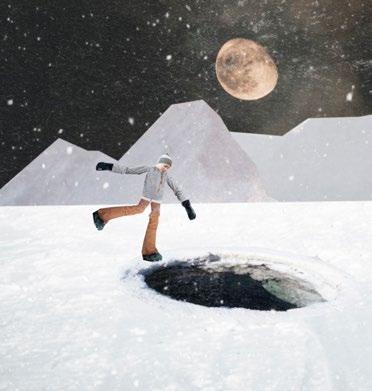
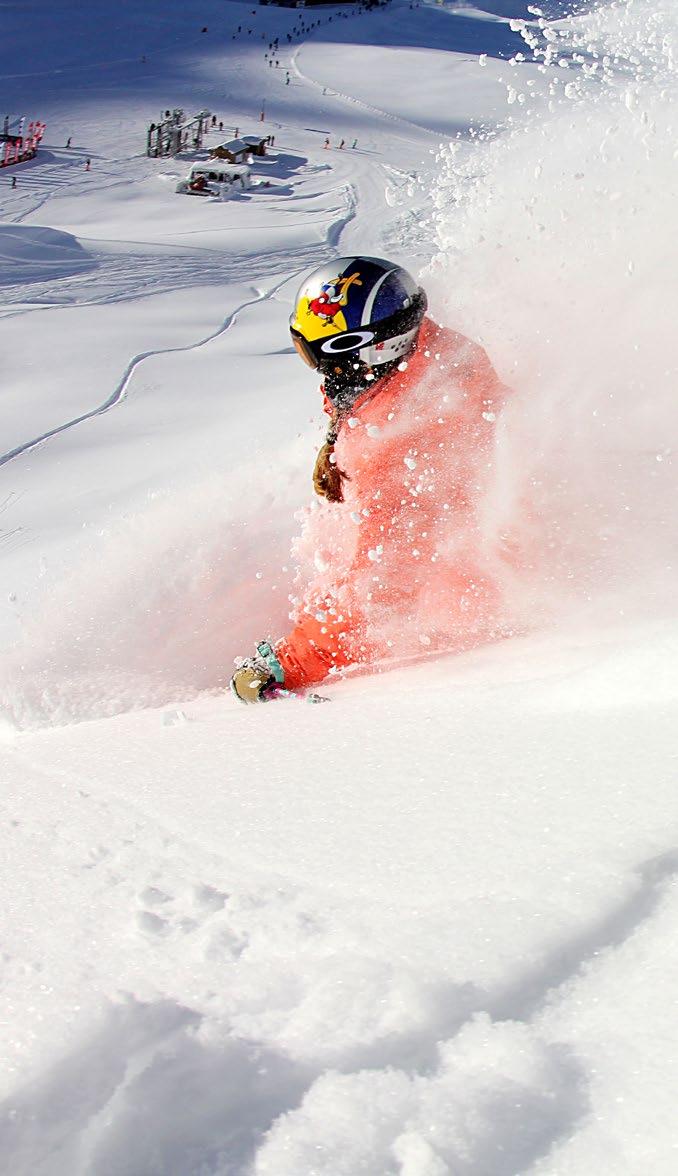
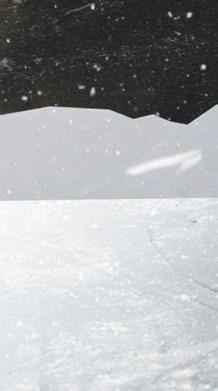
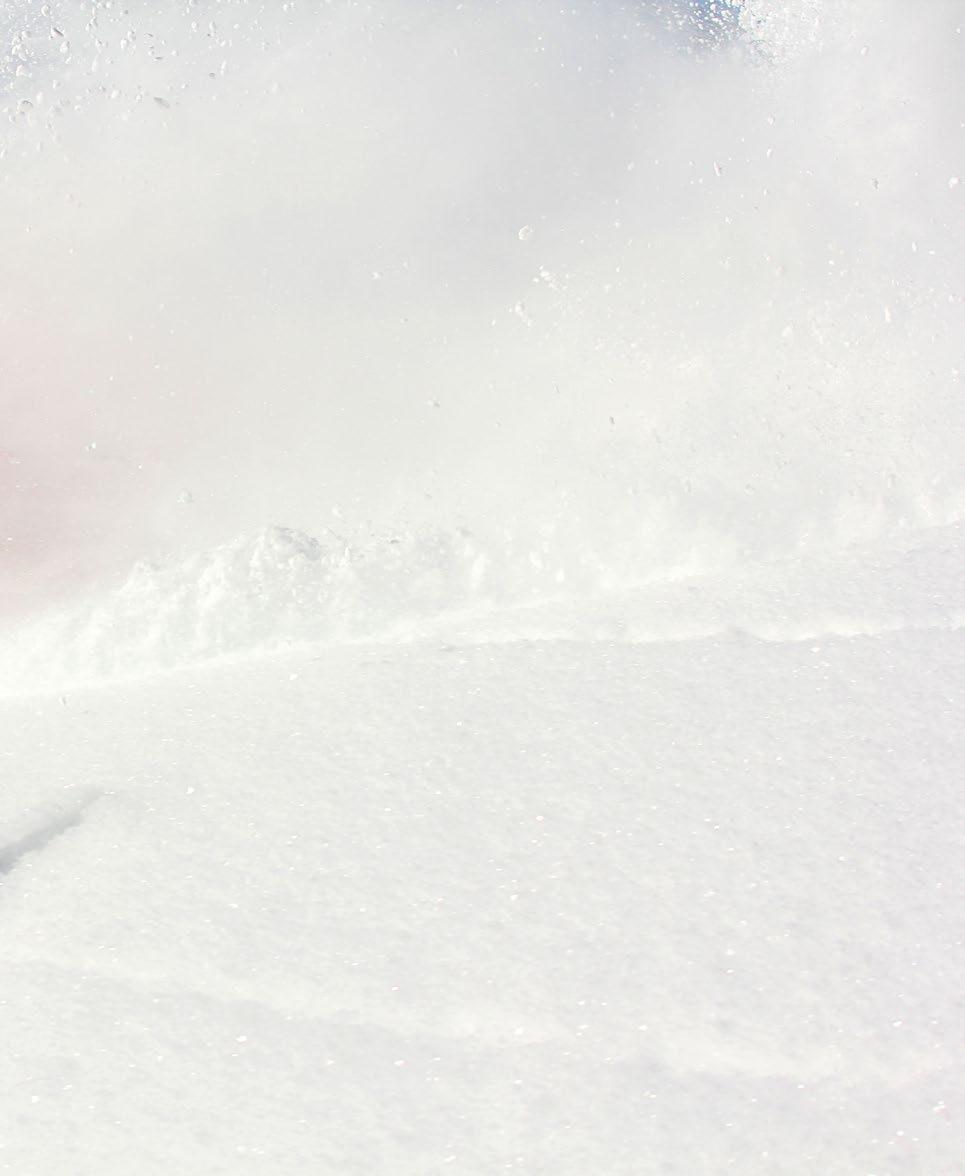
The film reveals a true story behind the success of a child prodigy – freestyle skier Kelly Sildaru.
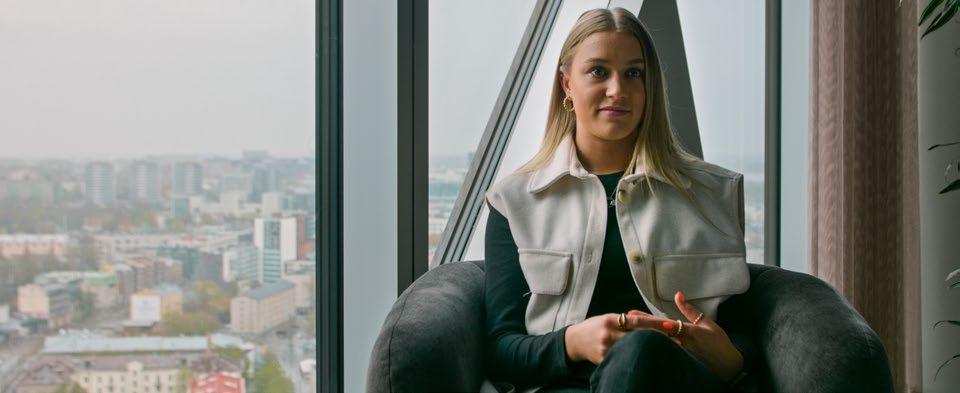
Estonia, with its flat terrain and modest elevation, with a maximum of just 318 metres, might not be the first place that comes to mind when one thinks of freestyle skiing. Yet, Kelly Sildaru defied expectations, putting her homeland on the map of the freestyle skiing world. You’ve got to have true grit to make it in a sport at this level. From navigating the challenges of training in less-than-ideal circumstances, to overcoming several injuries and setbacks, Kelly has faced numerous obstacles along the way.
Renowned Canadian journalist and author Malcolm Gladwell theorises that at times the underdog actually has the advantage, just like David against Goliath. David outsmarted Goliath with an accurately slung stone; however, in sports, you must be smarter, faster, and overcome yourself not just once, but over and over again.
The documentary was made in collaboration with Kelly. “I’m in awe of Kelly, that she was able to speak about such a traumatic experience so freshly after it happened,” comments the film’s other director Leana Jalukse. “You could see that the trauma was still raw – neither Kelly nor her mother could make summaries or draw conclusions yet. When speaking with Kelly I realised she herself didn’t understand the extent of the pressure she had been under. It was as if she recognised what had happened to her while the camera was rolling.” Kelly was barely 18 years old during the first interviews.
The documentary features Kelly, her mother, manager, other athletes, doctors, and psychologists. The ones who are missing are her father Tõnis Sildaru, who did not wish to be interviewed once the storyline changed, and brother Henry Sildaru, who was a minor, so the film’s producers decided not to include him. Not to mention, there were last-minute interview cancellations. “We were in constant fear of whether people would even show up to the interview, and if so, would they speak openly. There were also interviews where the interviewee ended up giving superficial answers and seemed wary of sharing their real thoughts,” is how Lõhmus explained the interviewing process.
“We felt that Kelly couldn’t be left accountable alone, so we gathered as many people as possible to
bring out different points of view. Kelly speaks very quickly, the quicker the more traumatic the incident. She is actually a shy person, and not many people know that,” tells Jalukse. “Sharing her story was a huge challenge for her. Social media shows a media-trained child. That was actually an issue while making the film – whenever the camera started rolling, Kelly automatically put on a fake happy face. Her dad even had a saying “nägu maasikasse” (“happy face on”), that he repeated to Kelly whenever his daughter was about to face the cameras,” explains Jalukse. It was difficult to break through the learned positivity, and remind Kelly that in these interviews she didn’t need to act anymore. While the filmmakers were conducting interviews with Kelly, there was an active narrative in the media that Kelly is an ungrateful child and a liar.
Behind every great athlete stands a mentor. For Kelly, this figure was her father Tõnis Sildaru, who was by her side every step of the way – until he wasn’t, as we later find out. From the early days of learning to ski, to the heights of competitive success, he has served as her coach and supporter. Dad was not only dad, but also a coach, trainer, teacher, and potentially the abuser.
As Kelly’s star continued to rise, so did the scrutiny surrounding her journey. The documentary delves into the intricacies of her relationship with her father. Yet amidst the complexities are resilience and determination, highlighting Kelly’s resolve to carve her path in the world of freestyle skiing.
In the making of Kelly’s documentary, collaboration played a pivotal role, bringing together talents from diverse backgrounds to weave her narrative into a compelling tale. “Kelly didn’t trust men right after feeling betrayed by her dad,” observed Lõhmus. “I believe that to be the reason why the original French directors didn’t manage to get the real story behind the happy family facade.” When putting together the Estonian film crew to cover the investigative parts of the storyline, directors reached out to female filmmakers whenever possible, to create a safe environment for Kelly to speak her mind. A great number of women
have contributed to the making of this film and empowered each other. Among others, Piret Tibbo-Hudgins was the Head of Production of the Estonian Film Institute’s side, which funded the film and played a big role in supporting and encouraging the film’s directors. With a budget of 318,000 euros, the film is a rather high budget production in Estonian documentary terms.
Of course, not only women contributed, one of the important team members is Dmitry Natalevich, who is a genius in terms of sound. The skiing shots were filmed without sound and Natalevich recreated the sounds, so the shots could be used in the documentary with sound. This turned out to be the first time when the sound engineer skied – he needed the right sounds to add to the film’s sound design.
Another tricky part was creating a comprehensive entirety of the investigative storyline and sports documentary. Not only bringing together the ideas of two directors. Editor Mirjam Jegorov was up for the task, but according to Jalukse she found it one of the hardest projects she has worked on. “Jegorov felt a huge responsibility and burden to include all the crucial details.”
According to Jalukse, people often don’t know what abuse and manipulation look like in sports. “Younger and younger kids are allowed to compete in both am-
Producerdirector Helen Lõhmus and writer-director Leana Jalukse spent more than two years editing the film.
ateur and professional competitions, and it’s a growing trend,” says the director. “We see 13-year-old girls getting surgery for sports injuries that were in past years done on women in their thirties. There are athletes who end their career before reaching adulthood.”
Both Leana Jalukse and Helen Lõhmus say that numerous people, who heard this film was being made, have reached out to tell their stories about the dark side of kids in sports. “Youth sports obviously is fun, and has many benefits – teamwork, kids getting outdoors and moving, also cases of teen pregnancies being lower in girls who actively participate in sports,” elaborates Lõhmus on the pros and cons of youth sports.
Estonian documentaries are on a roll, with Smoke Sauna Sisterhood by Anna Hints winning Best Documentary at the European Film Awards last year, and now Kelly. Someone Else’s Dream being premiered at Hot Docs in Toronto. “Estonian documentaries are mostly poetic and thoughtful, ours is a classic investigative film,” reflects Jalukse on the general context of documentaries in Estonia.
“We did our best to handle the topic delicately, and not hurt the victim or become tabloid-like in the storytelling,” says Jalukse. “Hot Docs is a revered festival and we’re proud to be premiered there, but there is a tragic story behind it.”. EF
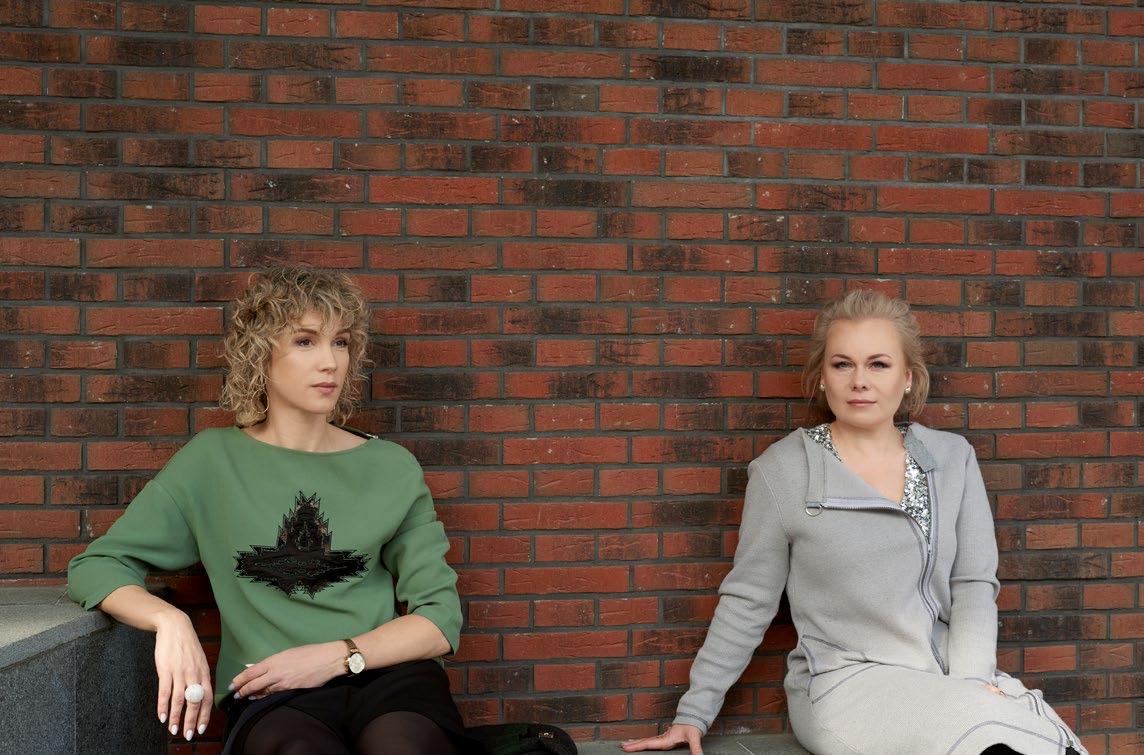
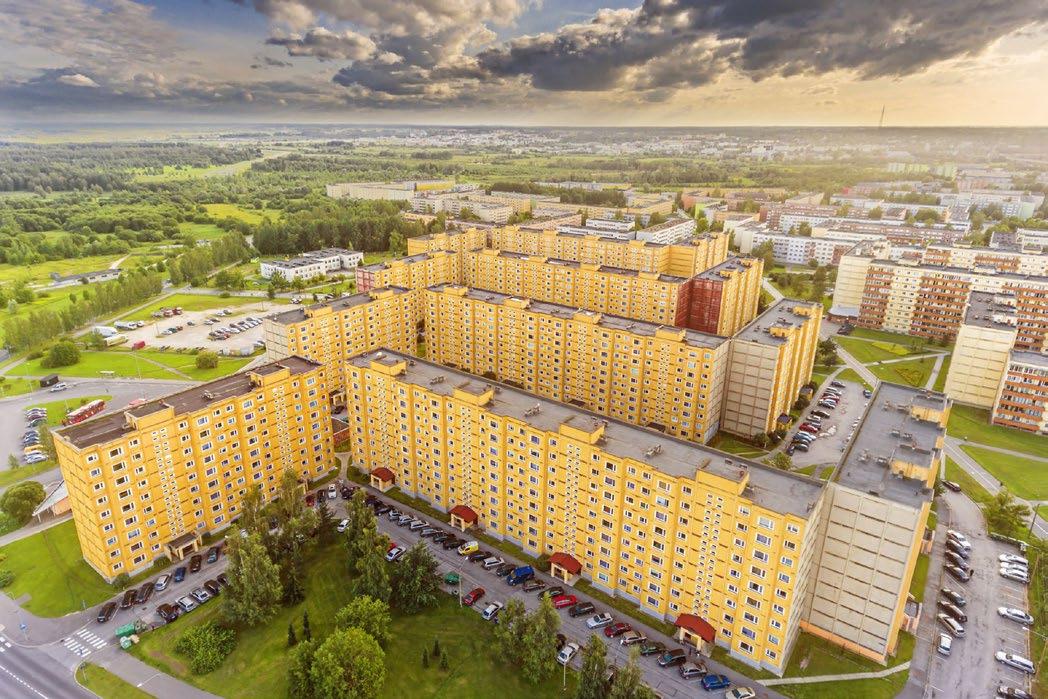

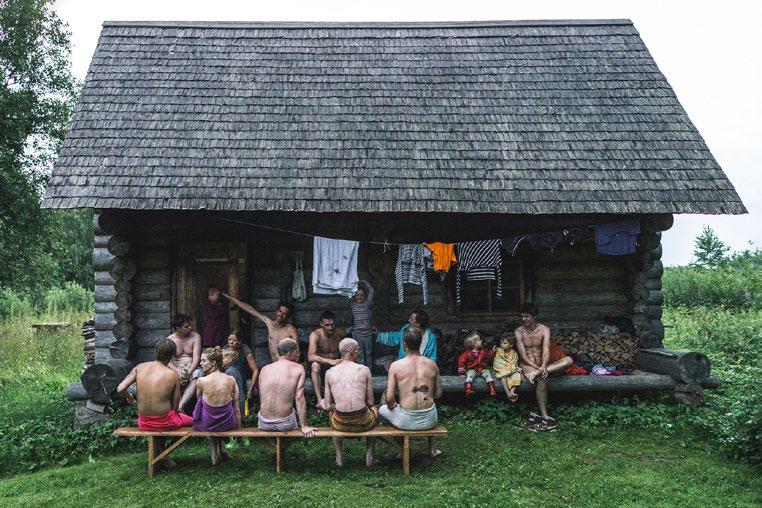
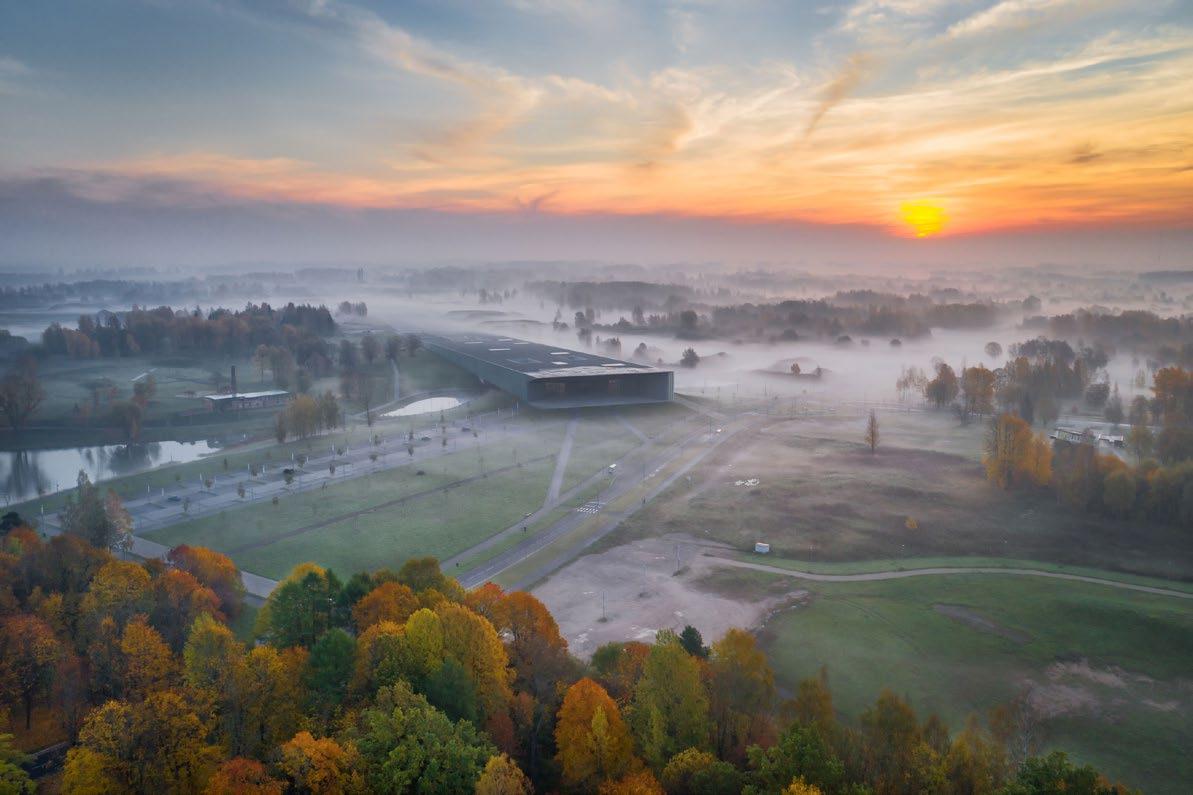

The Estonian Film Journalists’ Association kicked off the award season on January 3, announcing the winners of the 31st Neitsi Maali award in three categories – the Best Estonian Film, the Best Distributed Film, and the Film Journalist of the Year.
The best film of 2023 is Anna Hints’ trailblazing success Smoke Sauna Sisterhood, a feature documentary exposing a string of confessions in the intimate tearand sweat-inducing atmosphere of the smoke sauna – included in UNESCO’s list of Intangible Cultural Heritage of Humanity.
Andrei Liimets, chairman of the Estonian Film Journalists’ Association said: “Although the Oscar hunt was unfortunately shorter than expected for the Savvusanna sisters, it is hopefully alleviated by

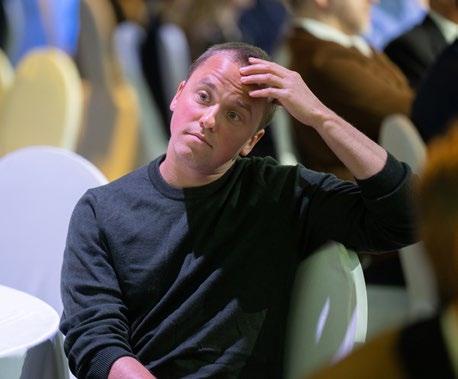
the continued warm support in its homeland. Anna Hints and the other participants deserve recognition for creating a safe space in a film that unites people and has brought Estonian culture to silver screens around the world.” The Neitsi Maali award is complemented by a prize of 2500 euros.
Johannes Lõhmus was awarded the Film Journalist of the Year award for his thorough and in-depth pursuit of film criticism, and highlighting film heritage.
Smoke Sauna Sisterhood also earned its makers, director Anna Hints and producer
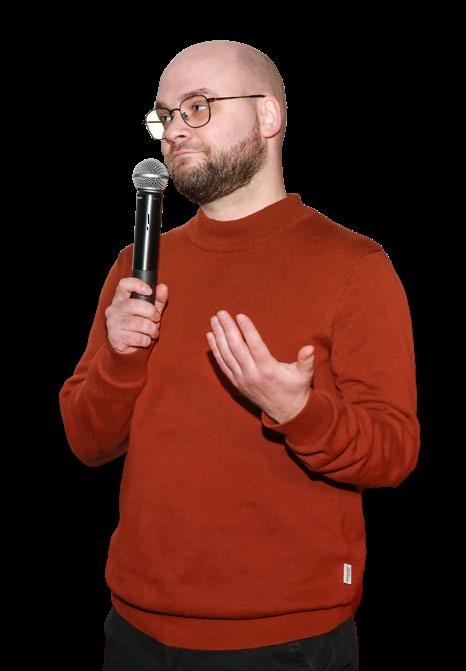
Marianne Ostrat, the Annual Award of the Cultural Endowment of Estonia. In addition, Ants Tammik won the Cinematographer of the Year award for the film.
Rainer Sarnet’s The Invisible Fight also brought home several awards – the director received the Feature Film of the Year, lead actor Ursel Tilk the Actor of the Year, and Jaagup Roomet the Production Designer of the Year, for the kung fu cult film contender.
Eeva Mägi’s Mo Mamma won an equal number of nods – the Debut of the Year for a director, and Actress of the Year for both Eva Koldits and Helena Lotman.
The Documentary of the


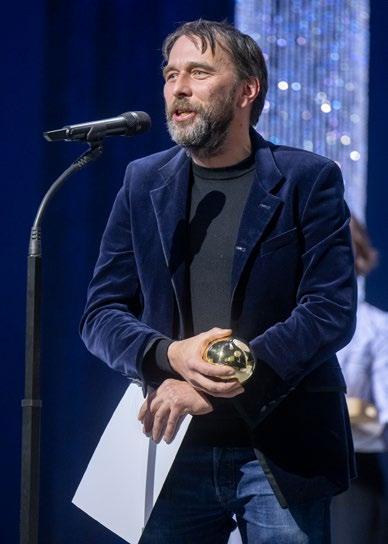
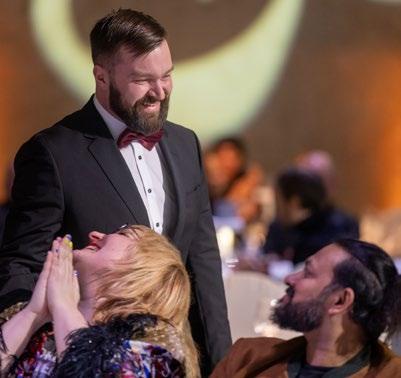
Year was Sundial by Liis Nimik and Edina Csüllög; the Animation of the Year, Eeva by Lucija Mrzljak and Morten Tšinakov; special mentions went to Raimo Jõerand and Meelis Arulepp for the documentary The Cartoonist; and Heiki Luts, Marko Post and Andres Kluge from Frost Film for their long-term fruitful work in the field of VFX.
Heidy Purga, the Minister of Culture, noted that “The Cultural Endowment is above all a stamp of quality – it shows that an event or a creator has been noticed by colleagues who know their field most intimately. Today’s awards are therefore a sign of the highest quality, with which the endowment funds in various fields evaluate the contribution of the laureates both in an annual perspective, but certainly also in view of the creation of a longer term.” EF
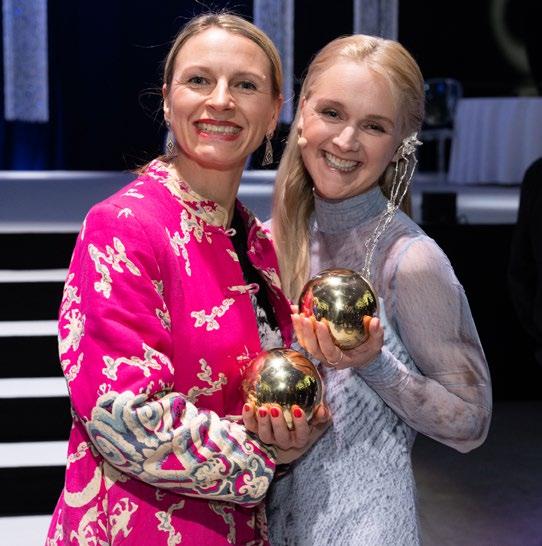
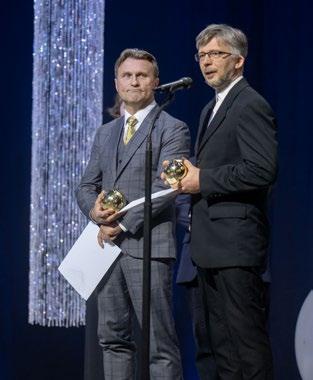

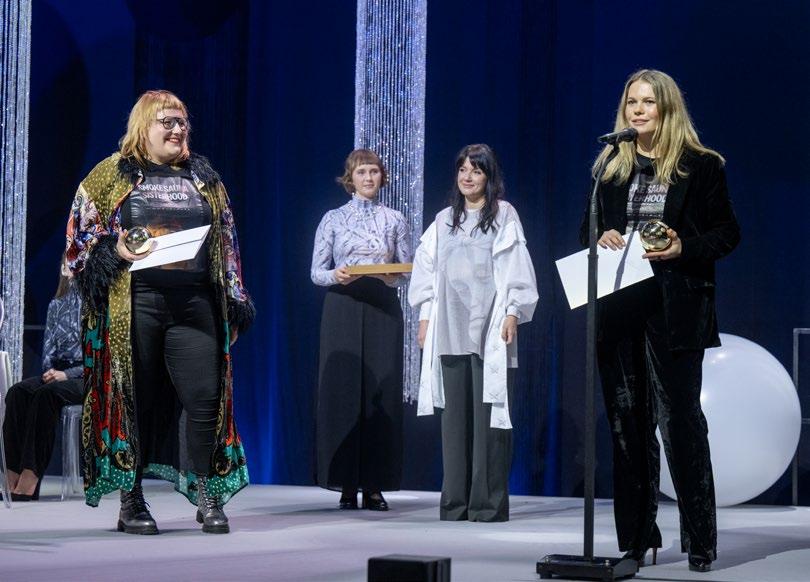 Heiki Luts
Edina Cüllog accepts the award for Sundial.
Jaagup Roomet –the Production Designer of the Year.
The winning duo from Eeva Mägi’s Mo Mamma.
Meelis Arulepp and Raimo Jõerand
Lucija Mrzljak and Morten Tšinakov accept the award for Eeva
Smoke Sauna Sisterhood picked up both Neitsi Maali and the Annual Award of the Cultural Endowment.
Heiki Luts
Edina Cüllog accepts the award for Sundial.
Jaagup Roomet –the Production Designer of the Year.
The winning duo from Eeva Mägi’s Mo Mamma.
Meelis Arulepp and Raimo Jõerand
Lucija Mrzljak and Morten Tšinakov accept the award for Eeva
Smoke Sauna Sisterhood picked up both Neitsi Maali and the Annual Award of the Cultural Endowment.
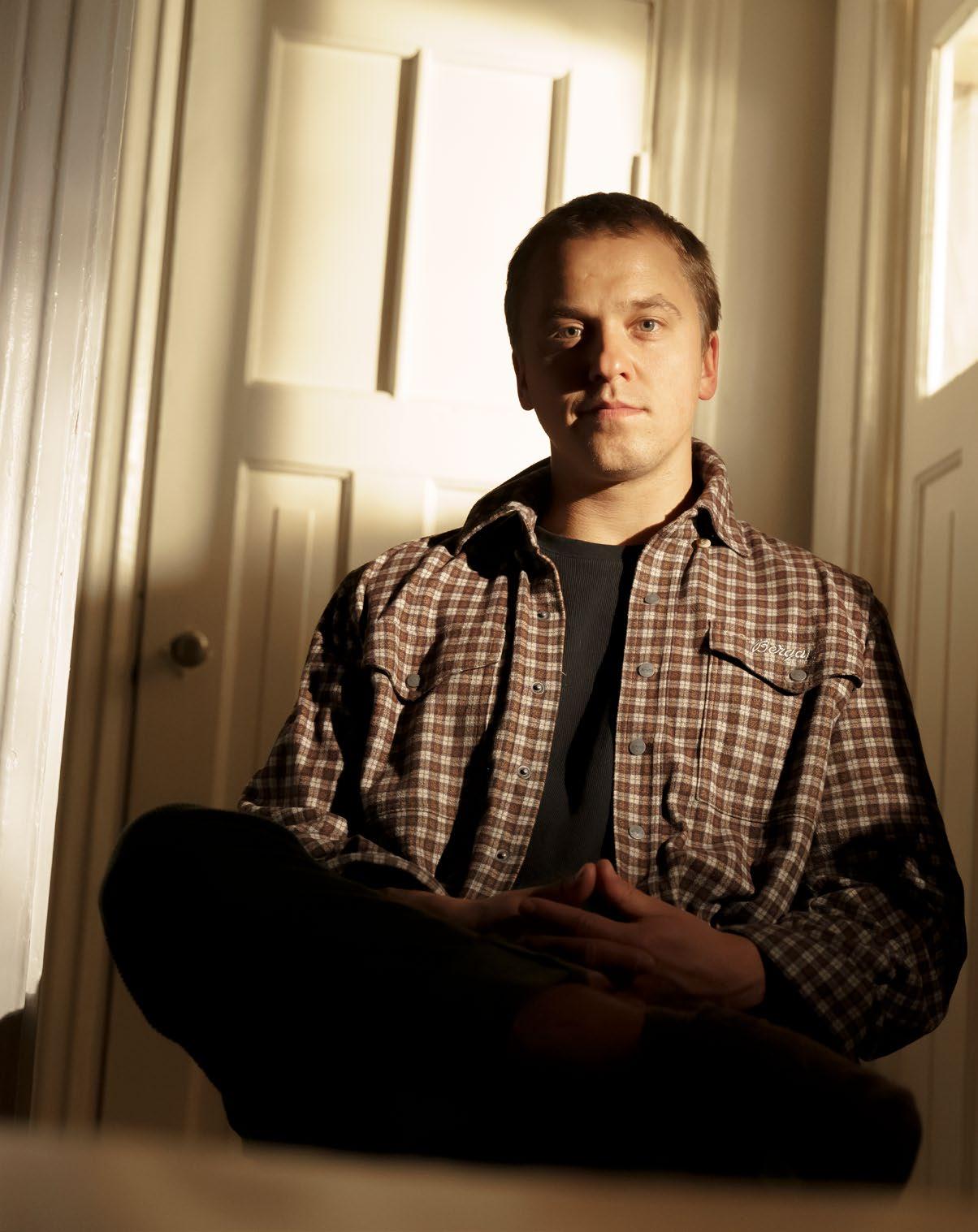
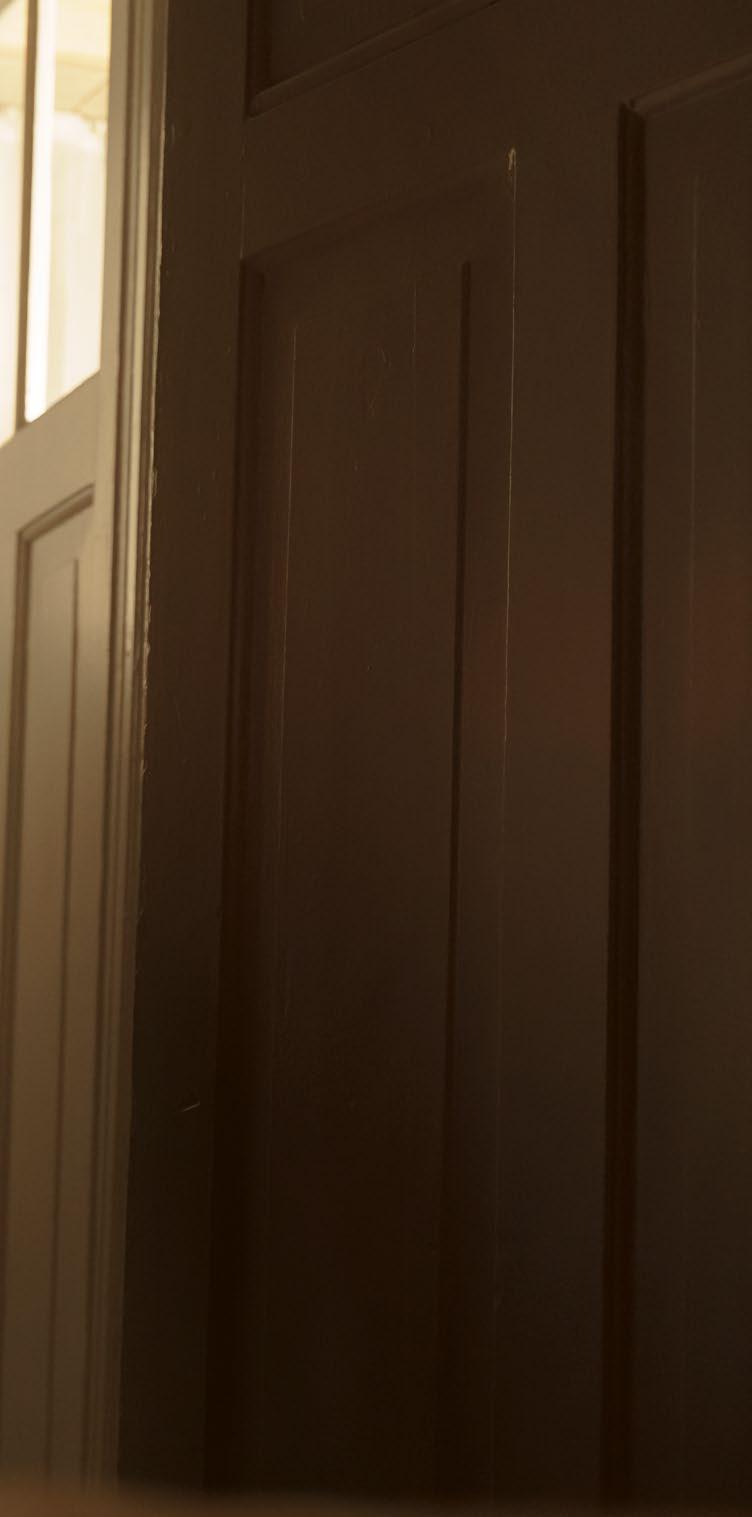
Director of Photography Ants Tammik has been internationally recognised for his work on Smoke Sauna Sisterhood. Now heading to Cannes with Sauna Day, he tells how he made the hot smoke sauna his playground.
By Andrei Liimets Photos by Viktor KoshkinWas there a specific moment it dawned on you how successful Smoke Sauna Sisterhood would become?
I had a strong gut feeling, not so much in terms of recognition, but of it turning out to be something special. I have a very loud inner critic, but this time I actually dared to tell people that something different is starting to form. I was quite confident it would work. And magic happened during the editing as well.
Director Anna Hints has spoken about how multiple DoPs told her the film could only be shot in a lukewarm sauna, because a real smoke sauna would be too hostile for cameras. Do you remember your initial reaction to the idea?
I didn’t hesitate for a moment as to if it could be done technically. Taking good care of the cameras has never been my best suite, to be honest. I take a lot of risks, cost-wise as well. I remember I had just been filming in a national park. I went to shoot alone and had a working camera on my sled. Then, at one point, I discovered the camera had fallen off, but I had walked on for 20–30 minutes, with half a metre of snow around me. So I went back and found the camera buried in snow, but still working. Then it dawned on me it would work in extreme conditions, and I knew it would work in a sauna as well.
But you improvised the cooling systems? Yes. The biggest obstacle wasn’t so much the camera working, but noise coming from the ventilation.
That’s why we brought ice in plastic bags to cool the camera down. And going in and out had a strict protocol, because of condensation with big hikes and drops in temperature, so we had to take it slow.
What was the largest obstacle for you in terms of both planning and realising your vision?
Probably the fact that it was basically one small room. Of course, we had four different saunas, but it’s basically still just a black box with a small window. Visually you must create something from nothing, there are very few elements to play with – how light falls and so on. There were times I was scratching my head on how to keep myself fresh as well, keep it loose, keep it interesting.
My attitude towards my work has changed a lot as well. Previously, I always had to prove myself all the time. After my daughter was born, my work Is still important to me, but I worry a lot less and my inner confidence comes from elsewhere. I don’t really work with storyboards and plan in detail, I like to keep myself in the moment, work around the material.
So there’s both a lot of art and a lot of luck involved. Did you ever hesitate that the film might become too repetitive visually?
Of course! Luckily Anna and producer Marianne Ostrat were very happy with the first material we went through. Then some outside viewers were very surprised as well, so our confidence grew step by step.
I see a lot of young DoPs put a lot of effort into analysis and preparation, but I really believe in flexibility.

There’s a sort of inner maturity so I enjoy my work , enjoy the recognition, enjoy the respect, but also try to forget it and keep improving myself.
You might have a perfect game plan, only to watch it going up the chimney from the second shot. A production designer’s assistant might have forgotten some things and you have to improvise in a whole different way.
The film is about women, produced and directed by women, shot around naked women. As a man, a bit of an outsider, was it a difficult challenge? We were discussing the male gaze element with Anna a lot. We tried to figure out how to shoot parts of a female body without this traditional male view, which did come along with the first test shooting. I felt a bit of discomfort then, but suddenly it all
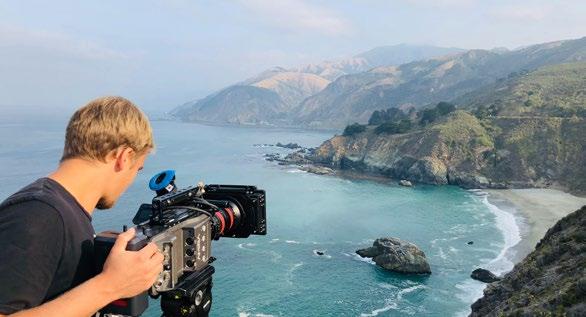
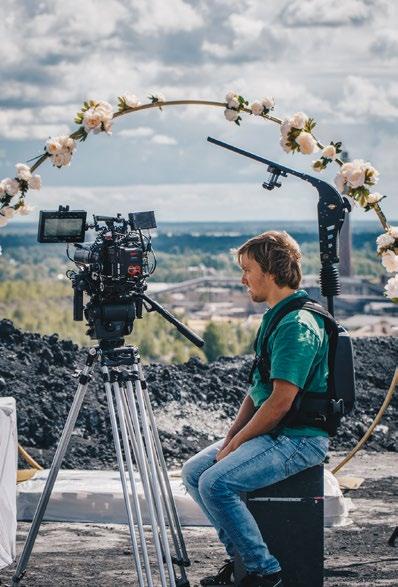
clicked: we started finding new angles for shooting a body, presenting a new view. I started feeling myself looser, focusing on my work rather than the naked bodies themselves.
Anna had already prepared everyone that I would be there, and we kept the communication very open. Everyone knew they could voice all concerns at any moment and could step out whenever there was any discomfort, or ask me to step out. My own tactic was at first focusing on Kadi Kivilo, who was the main protagonist, so her confidence would sway the others as well.
Do you feel becoming the father of a daughter changed your perspective on the themes of the film in any way?
Definitely! I felt a new level of maturity, clarity, tenderness. I spent a lot of time with my partner’s family and relatives, mostly women. It gave me a lot of empathy towards the stories, not all of which made it into the final cut of the movie. There were moments during filming I just listened to the stories, pretty much forgetting the camera. I don’t think I would have been able to be so present when I was younger.
Smoke Sauna Sisterhood has received numerous awards. You have also been recognised personally. How important are these recognitions for you? I have thought about it a bit. I have won awards for
Photo by Rain Rannu Ants Tammik, Anna Hints and Tushar Prakash on the set of Sauna Day The shooting of Chasing Unicorns in California.
nature photography previously, but I’ve been so critical of myself as to always belittle recognition. Now I can take it in and gain more confidence from it. There’s a sort of inner maturity so I enjoy my work, enjoy the recognition, enjoy the respect, but also try to forget it and keep improving myself. I especially like it when people respect my time and don’t see me as a tool, but a co-author, a professional, an artist. My ambitions are growing and I try to think larger.
Have there been any international proposals?
I have worked a lot in Arabia since 2016. I have some experience from that and I’ve found out that the more I focus abroad, the more things are left hanging
On the set of Free Money.
here in Estonia. But I do want to live here so I try to choose projects which allow me to remain here, in my little corner of Western Estonia as much as possible. Periodically it’s cool to be elsewhere, but I’m not planning to take my career abroad. I don’t glamorise outward success and attention.
You’ve worked with Tallifornia a lot, shooting multiple comedies. Is there a genre or a visual language you prefer?
Tallifornia and its founder Rain Rannu put a lot of trust into young authors. I’m not so young anymore, but I have such a deep respect for that. I love their sets. The films might not be high art, but I’m very proud of them. I also do documentaries, photography, they all give me different experiences. It’s mostly about people, I like it when I’m given the possibility to be mobile, keep searching, sometimes gamble. It must be fun as well.
Is there a DoP you really look up to?
Emmanuel Lubezki is mystical. The use of natural light, the improvisation, the courage. Estonian DoPs are also very good. Mart Taniel is a sensation, Sten-Johan Lill has this huge inner potential, Meelis Veeremets. There’s a generational change with wonderful young DoPs getting more and more opportunities. EF
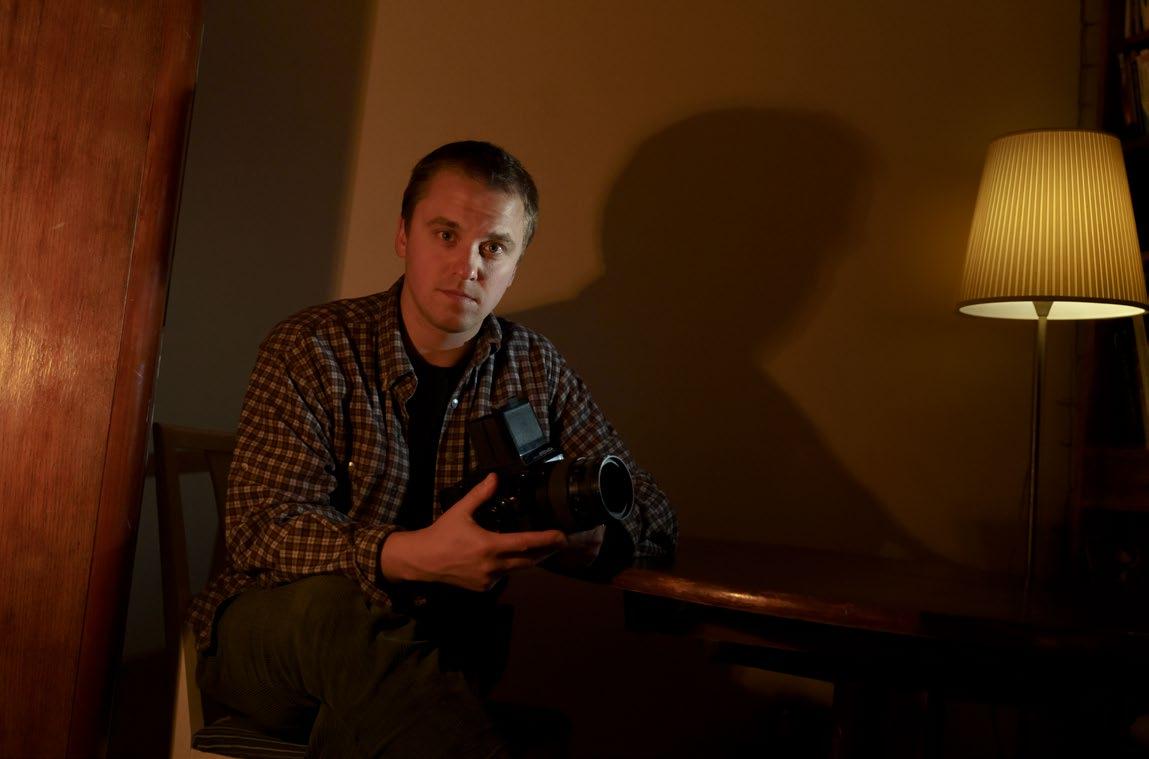
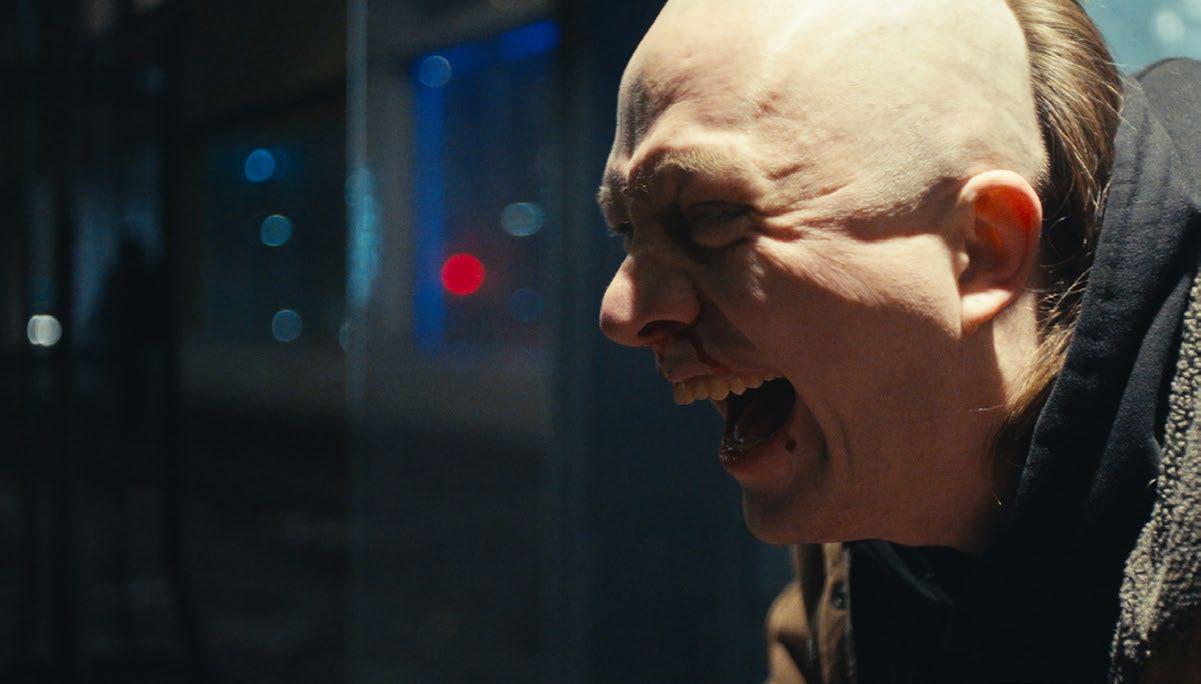
Eeva Mägi’s newest film, Mo Papa, the second of a trilogy, is now in post-production and will be presented in the PÖFF Goes to Cannes programme at Marche du Film. The film is produced by Eeva herself, and the film’s director of photography Sten Johan Lill, at the production company Kinosaurus Film.
By EFI Photos by Sten Johan LillMo Papa follows 28-yearold Eugen, as he is released from prison. He has nobody in the world, except his father Helmar, who abandoned him at birth, and two friends from the orphanage - Stina and Riko. Eugen attempts to start his life anew and contacts his father, but the unresolved trauma from his past dooms him to an endless cycle of violence.
According to Eeva, Mo Papa was created without a written screenplay. The film was inspired by real-life stories, and the story structure evolved
during the discussions and rehearsals with actors. The research largely stems from Eeva’s stint working at a psychiatric clinic, providing free legal aid to those in need at the child protection bureau, and the story of a random acquaintance whose father was a member of a mafia group, and whose mother took her own life.
“I like to create from an idea or story in my head. I know the feeling that I want to bring to the screen, but I give complete freedom to how it unfolds. I put myself in this uncomfortable, bare place, where there is no hope for anything but pure creativity,” Eeva explains.
Sten Johan Lill adds: “Mo Papa was largely shot in January 2024. The production budget of 15 000 Euros was covered by self-financing and the contribution of some private sponsors. Today we also have post-production support from the Cultural Endowment of Estonia. The style of the film was technically minimalistic and documentary-like. The crew only consisted of the director, the director of photography (myself), the sound engineer, and the actors. Such simplicity made it possible for Eeva and I to organise everything ourselves in terms of production - we did not see the need to go to a large production company.”
The first part of Eeva Mägi’s trilogy, Mo Mamma, premiered at Tallinn Black Nights Film Festival, garnering the Special Jury Prize in the First Feature Competition. The third film, Mo Amor, is currently in development. All three talk about the human need to be loved and understood, but the inability to accept oneself and life itself, often lead to the wrong path.


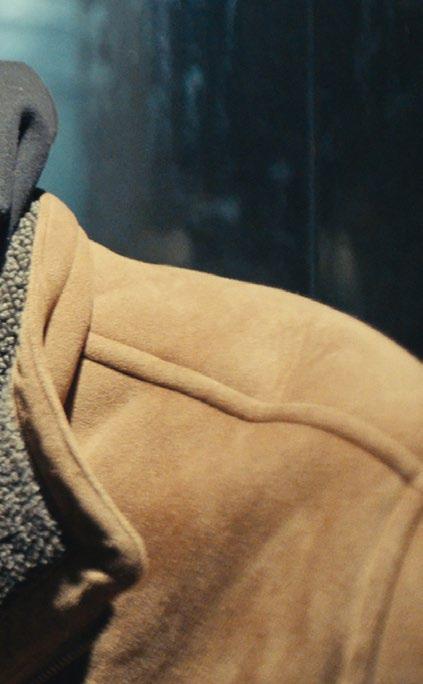
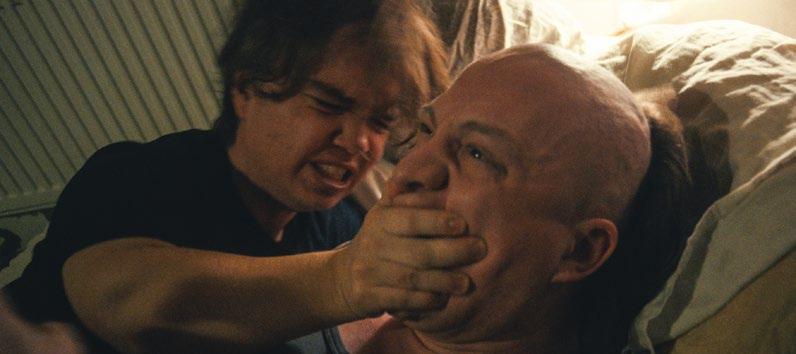
The films are lifelike and painful, raise important questions, and reflect socially complex topics.
Eeva Mägi (b. 1987) is an Estonian writer-director based in Tallinn, who’s active in the field of fiction films and documentaries. She graduated from the Baltic Film and Media School as a documentary director in 2015. She has since directed a string of successful shorts such as Lembri Uudu (2017), The Weight of All the Beauty (2019), and 3rd Octave F (2022). Her first feature documentary, Who Am I Smiling For, premiered at Giffoni IFF (2023) and was the opening film
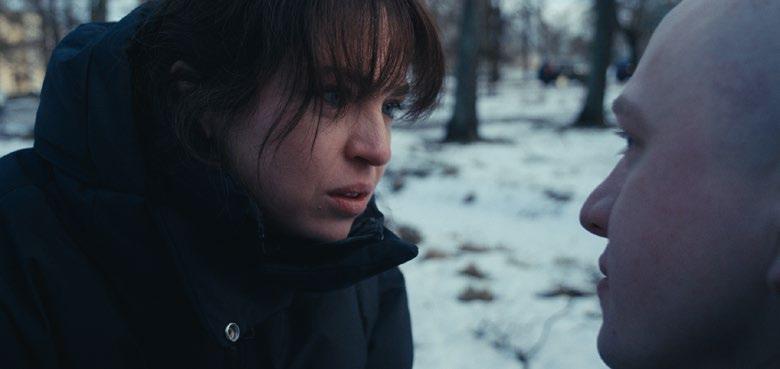

of PÖFF Just Film (2023). Eeva received the Young Filmmaker Award by the Cultural Endowment of Estonia in 2018, and the DocPoint Tallinn Young Filmmaker Award in 2019. Her first feature Mo Mamma (2023) received the Special Jury Prize at Tallinn Black Nights Film Festival’s first feature competition in 2023. EF
90 minutes, feature
Cast
Son, Eugen Lumi: Jarmo Reha
Father, Helmar Lumi: Rednar Annus
Stina: Ester Kuntu
Riko: Paul Abiline
Crew
Director, Screenwriter, Producer: Eeva
Mägi
Director of Photography, Producer, Editor: Sten-Johan Lill
Production Designer: Allan Appelberg
Costume Designer: Ulvi Tiit
Makeup Artist: Liisi Põllumaa
Production Company: Kinosaurus Film
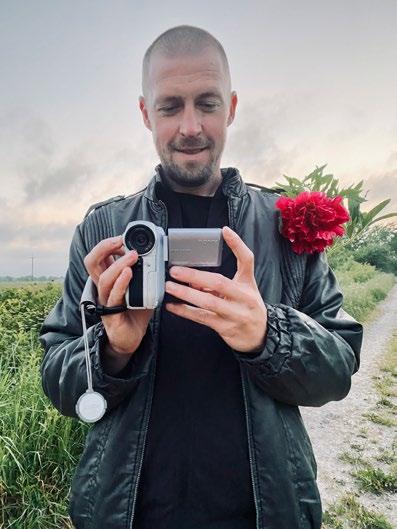

After celebrating the success of Smoke Sauna Sisterhood, partners in life and art, Anna Hints and Tushar Prakash, are returning to the smoke sauna with the short Sauna Day, set to premiere at Cannes.
By Andrei Liimets Photos by Riina VarolCongratulations! Premiering at Cannes is a director’s dream. What were your initial reactions to the news?
Tushar Prakash: It hasn’t really set in yet. I first went to Cannes nine years ago for a screenwriting workshop and am now heading back with a movie, which feels very special. It is a crazy, massive festival of cinema. We have a word in India called “bazaar” – it’s the bazaar of cinema.
We tried to experiment in this movie, trying something new for us. It was interesting to see how it worked on the programmers – they wrote back to us and we had a real wow-moment, because we understood that our experiments worked!
Anna Hints: I’ve been so happy. Before we went to Sundance with Smoke Sauna Sisterhood, it seemed to be an unreachable world for me. I thought it was just through politics that one can get to the A-list festivals, but actually what matters is just a strong film that somehow stands out, you don’t need to know the people before to get selected. We just submitted our film to Sundance, and they loved it. It’s the same this time around. We were able to make something that resonates and gets noticed. I loved the Critics Week approach to us – the fact they called the producer Johanna Maria Paulson and gave their feedback in person. I’ve also understood that you build a relationship with a festival. There are human beings and you create a connection with them after you have been lucky to be selected. It doesn’t mean your work will be accepted next time, but you can communicate, talk about the film directly with them.
Sauna Day is a very Estonian and very male story. What resonated for the programmers at Cannes?
AH: They found it to be beautifully poetic and intimate, yet also tense. We were filming it last summer as a short film, but when I watched the material, I saw potential for


a long film and wasn’t sure there was a short film there. Then it started tickling me from the inside. I tasked myself with creating a short that is not a wannabe long film like many short films tend to be, but really cut down the material we had filmed and find the poem inside the much longer material. Then it clicked, and now I am very proud of the result.
I am also intrigued to use the other material we have and film more to create a long film too. I just wrote to all the main actors that most of the material we filmed last summer is not in the film as I see it in a longer film, and that the short film we have now is really much shorter than planned. Everyone supported my decision and are ready to experiment further for a long one too.
TP: What I find interesting is that the real emotion and the theme is never in the dialogues, never evident outside, never shown through the tools you usually use to narrate a story. Everything is in the “unsaid.” The audience must feel it. That’s why it was also difficult to write the script. It’s quite unconventional, and it’s also kind of anthropological filmmaking. Many people, all the non-actors and even one of the professional actors are from the valley where the film takes place. We even filmed in the house of one of our leading actors.
How different is it premiering a short film when compared to a full-length feature? Especially now you have the experience of Smoke Sauna Sisterhood under your belts.
AH: This is an interesting aspect of the film industry. When Smoke Sauna Sisterhood won the European film award and there was a press conference, the most burning question was: Anna, when is your next film? When is your next real film? And they meant a full-
length fiction film. Of course, there is more visibility and more opportunities for full-length features, which is weird in a way, because we all live in a constant deficit of time. The short format can be amazing!
Despite this, the whole industry is still focused on long format and especially fiction, even though documentaries are doing so well. I have a theory this has happened because in documentaries there is more creative freedom, there is less money, more risks are taken. The big question for me is how to take all the freedom I love in documentaries and take it into fiction films as well. I’m doing my master’s degree in the Estonian Theatre Academy and seeing how theatre is born – there is always a relationship to the reality you are creating, and you are not stuck with the concept you’ve had before, in the script or otherwise.
Art has to be alive and many things in the indus-
 Photo by Gabriela Urm
Photo by Gabriela Urm
try are killing that life. The biggest task is to keep everything alive on the set as well, not stuck in an Excel sheet. For example, I’m so happy with our producers Johanna Maria Paulson and Evelin Penttilä, because it’s not usual that we are shooting a short film, then the director says that this seems to actually be a long one, so let’s make the short really short, cut a lot of things out, and also let’s basically make a long one from the short as well.
I think making Smoke Sauna Sisterhood gave the impulse, which we started to follow. I didn’t want to buckle under outside pressure on what to do next. Every time we start making something, we are standing in the middle of a creative forest, but we have only gotten there with the help from many other artists. And there you can either choose to follow a path someone has paved, or take a dive into the unknown. I feel the need to head for the unknown, to tread my own path.
Estonians are used to going to the sauna often. Tushar, as an outsider in a sense, why do you think the sauna setting attracts international attention?
TP: I remember going to the smoke sauna for the first time, and it was actually the same smoke sauna where Sauna Day was shot. It was the summer of 2016, right after St. John’s Day, and it was a very mystical space. The dark ambience, the warmth, the sound and the acoustics, the vibes of the space. It touched a new side of my personality, and I felt a connection to this country, this culture, this region.
There are no saunas in India. In India, we don’t like stagnant-wet places, because the climate is such that the water has to be flowing and fresh. In the setting of Estonia, the sauna works and functions in a different way, creating intimacy, conversations, and a pure space of cleaning, giving birth, and also performing death rituals.
But the space of cleaning is common in every culture, in every tribe, in every religion. Even with Smoke Sauna Sisterhood, as one of the editors of the movie, I

Art has to be alive and many things in the industry are killing that life.
thought that we should first establish the smoke sauna as a place for cleaning and washing, because I understood that it resonates with every culture, even mine. It’s the same with Sauna Day – people finish their work and then go to wash everything off. That’s the bridge between cultures.
Sauna Day was shot in summer 2023.
Anna Hints and Tushar Prakash with the main actors of the film on the photo in the middle.

AH: I’ve seen different sauna communities around the world, which is like a freedom movement. There are many who have told me about connections to Native Americans or Maoris in New Zealand, but what really resonates is this intimacy. You can have a sauna without the nakedness of souls, but we do have it here, which is a real treasure. It doesn’t mean every Estonian has the same mindset and starts fully opening up in a sauna, but thanks to the sauna culture we have this possibility for intimacy. It’s the opposite of social media, where we present ourselves with our best clothes.
In a smoke sauna, you take everything off, and it doesn’t stop with clothing, but metaphorical, metaphysical clothes. You create a connection with yourself as well, and I think we are really yearning for that as a society. There is polarisation everywhere, people
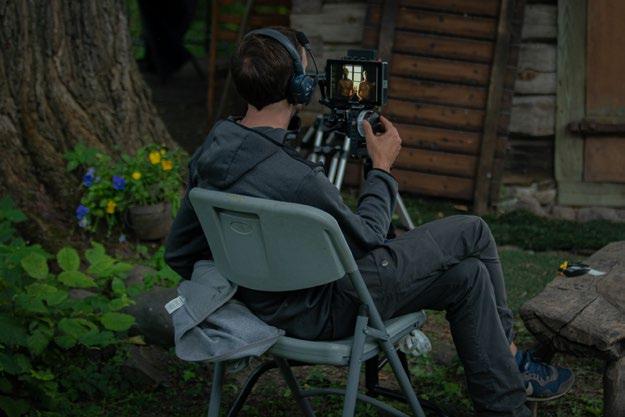
are in their bubbles. The sauna space allows you to really see and hear each other. It doesn’t mean you have to agree on everything, but you give space to connect, build intimacy, hear each other out.
Between Smoke Sauna Sisterhood and Sauna Day you released Estonian Man, the short documentary about Tushar’s acclimatisation in Estonia. What do you find particular about the Estonian view of what a man should be like?
TP: Where I come from, you choose your path and then dedicate yourself to excelling in that path. The social structure is made in a way, where if you’re an architect, a journalist, a filmmaker, that is your Dharma, your duty, your destiny. You have to do that properly, with full awareness and responsibility. Let the carpenter make the chairs, let the tailor make the clothes, that is their Dharma. There are even gods for all these professions.
In Estonia, you’re supposed to do everything yourself. The real man is a renaissance man who builds the house, repairs things, raises chicken, while also directing films. I find this difficult to adapt to, because there is this celebration of being self-reliant, doing it yourself, being good in everything or at least being able to do everything. There’s this pride in being a man that builds a house for years and years and years.
What I wanted to understand is where this comes from. It’s also a lineage of fathers and grandfathers and going back to Tammsaare’s characters (Anton Hansen Tammsaare, the author of Truth and Justice, also made into a hugely successful film – AL) or even Kalevipoeg (the Estonian folk hero – AL). There’s a mythologising of men who did everything, but it’s also a great weight, and men become victims of this mythologisation. The stories are exactly that – stories. The grandfathers were also human beings, but we imagine them as these rounded strong men, who could lift hundreds of kilos. These stories are filled with work, work, work, but there is no intimacy, no emotional connection. The men are seen as heroes, there is no space for any weakness. I want to clarify, I don’t fully agree with the Indian system either, the abuse of that can lead to the caste system mentality.
Estonian men are known for being emotionally closed off, which is equated with strength. What should men learn about intimacy?
AH: I think it’s not about gender, but we all need to learn that real strength lies in the courage to be vulnerable. We can fear connection with others, but we do want it. If we are scared to open ourselves, it may lead to violence. I’ve been encouraging people to be okay with the uncomfortableness of emotional vulnerability. The only ability to connect is through that.
It’s not only individual, it’s about society in general as well. Do we create safe spaces where we can open up? If we are traumatised, everything freezes within us. It’s important to remember that this ice in us can melt as well, but for this to happen, we need a warm and safe space. If a society is highly polarised and
every opening up gets labelled as weak, then it’s very difficult to show the real you. That is why we need, at least on a community level, spaces where we wouldn’t be afraid of vulnerability and differences.
If we don’t talk about things, we create monsters. The question is how to learn to really listen and see, and not be afraid of each other. That’s not weakness, but huge inner strength and freedom.
TP: Shame is something men suffer from – they just don’t feel adequate enough. Men should learn to feel comfortable with themselves, that’s also something I must come to terms with within myself. That’s something I want to tell in my films as well – “you are not alone; I’m going through the same process as you.”
We’re not beautiful clay sculptures made by Michelangelo, we are not perfect, we should understand
Please describe how Sauna Day has been developing.
The initial screenplay of Sauna Day had far more material than the film we have today.
We wanted to create a wholesome film that really is short, length-wise, but the shooting period was so fruitful that Anna and Tushar picked up on the idea for a full-length fiction film. We experimented with different edits and found a completely new narrative that still works as we had intended at first. The rest of the material is waiting for its time.

From the producer’s perspective, what do you think drew the programmers at Cannes to it?
Critics Week is looking for fresh, high quality films from around the world, but the short film itself is an unforgiving format that has to demonstrate the author’s vision inside very restrictive frames. For Sauna Day it was Anna and Tushar’s strong and thoroughly composed vision that led us through the unconventional post production process. I feel that you are able to experiment far more freely if you know in your heart what you are after, as you do not have to cling onto the material in the fear of losing something important. But even after giving your everything, you still cannot predict what the festival thinks.
Short films are difficult to distribute to wider audiences. What are your plans with Sauna Day?
After receiving the wonderful news, most of our attention has gone towards finishing the post production and preparing for the premiere. We are hoping to partner up with a strong sales agent very soon to guarantee a wide international distribution for the film. We cannot share any news yet, but there are already other great festivals who have shown interest in the film; and we ourselves look forward to screening the film for Estonian audiences as well, especially in Southern Estonia.


and embrace imperfection. Instead men often escape to work or fame or money, but there will never be enough, you still feel empty, because it’s about a fundamental feeling of emptiness. Men also get really good at escaping from authentic relationships.
AH: The trouble is in the mindset, which goes beyond gender. Women have internalised a lot of this judgmental gaze towards themselves and others as well. What interests me is where did we get the idea that suppressing what we feel is strength? When did this happen in our history? I think it’s a reaction to trauma, and the trauma keeps getting passed on.
You work together and you’re a couple as well, you travel a lot, you have different cultural backgrounds. All of this puts quite a strain on a relationship. How do you make it all work?
AH: This is such an important question. We are still in that process and it’s super-challenging. It’s about finding a healthy balance between work and personal life. I have a tendency to become super-focused and workaholic. Then I have to consciously come back and create spaces, where there is no work. We can talk about films, culture, politics, but not about work tasks.
When I travel, I can only do that because I have people at home who support me – Tushar, my daughter Leele, and other close people, family and friends. They see what is behind the glamour and the shine of the awards, the real cost of success. The sad thing is they get the worst of me, which is unfair. That puts a responsibility on me to not leave my closest ones with a deficit of attention.
We can’t talk about relationships with others without talking about the relationships with ourselves. I have to find ways to be able to give the best of myself, because that’s what our close ones deserve.
TP: Creating together is beautiful, it gives you courage, partnership. It can be such a lonely journey otherwise. It can also be challenging and can take over your whole life, so you have to create boundaries between work and personal life. It’s important to recognise that one person’s success is everyone’s success, resulting from contributions by many. Success is not a zero-sum game. Embracing and being inspired by this is crucial, not just for individuals or teams, but for entire families and countries. EF


Wherever there are great special effects in an Estonian film, there is probably Frost Films behind them. Producer and supervisor Heiki Luts shares his secrets on how to get the best bang for your buck.
By Andrei Liimets Photos by Viktor KoshkinThinking of special effects, the first things that come to mind are probably Hollywood blockbusters. The Estonian industry is far from being that size, so how did such a company come into being here? Pretty much everyone working here has come to a point during their lives where they’ve developed a passion for special effects. No one has really studied it anywhere; people have come from different fields. Personally, I discovered this passion in ninth grade, in 1999. I had this wow-moment that whatever I would do in my life, it would be tied to creating effects in some way. It’s an opportunity to create your own worlds – not only static, but moving images, with imagination being the only limit. I felt right away this would never exhaust itself – one will never reach a point where one has mastered everything. Every challenge is different.
Whenever a new project comes in, there’s always a moment of okay, how will we manage this, how will we accomplish it as a team. We need to set up a deadline, and a budget, without much more certain knowledge beyond what we’ve managed before. It’s always a step into the unknown, and this keeps the passion alive. Every new film is an adventure.
Is there a particular project you remember as being an especially daunting task?
It’s difficult to choose. All the bigger ones include an “oh boy” moment. The last really difficult one was the
TV series Estonia, due to the volume of the effects and the expectations in quality. We hadn’t done anything similar before, and I think we really set a new bar for ourselves in terms of quality and continuation of high-quality effects.
It’s one thing to create a single very high-quality shot, but a whole other ballgame to create 300 more, with all of them fitting together.
Estonia has received a lot of recognition, including for the special effects. In animation, water is considered among the most difficult things to do. What was the most difficult with Estonia?
There were two key challenges. Firstly, the ship is at sea – it’s perhaps five seconds, but we polished it for about half a year. We had maybe 60-65 different versions, which we discussed with the director and the director of photography. The ship was careening in water and we wanted the shots to be from further away. So where do we put the camera, what’s the perspective? Where would the DoP shoot if from – from an island, from a helicopter, from another ship, with a drone?
We can do pretty much anything, but the shot will only work if the creators know where the camera is supposed to be. For example, in real life you couldn’t film such an instance from a kilometre and a half away during night, there is just no visibility. With special effects, we needed to create the shot from exactly such a distance, while also making it appear there was very little visibility due to the weather.
Who is usually the main partner for you in the film crew – is it the director or the DoP?
It’s different with every film. With Estonia, we had a strong bond with the DoP, JP Passi, who was very hands-on, and available 24/7 during post-production. With some projects, the DoP goes on to other projects and the director will be the one available. It depends on peoples’ schedules during editing. With Estonia, we were lucky.

You are very hands-on yourself. How do you plan your work?
At the start, the screenplay is sent to us, with either the effect shots underlined, or our advice expected on where special effects might come in handy. I always propose help on deciding, because it’s also a choice between either doing something on set or in post-production, or combining the two.
After going over the screenplay, I create a spreadsheet, where I mark down everything in terms of the scope, hours needed, and budget. It’s very important to prioritise. We divide the effects into “must have” –these are the ones the story itself will not survive without – and “nice to have” – which might be done on set, and don’t fundamentally affect the story. And then
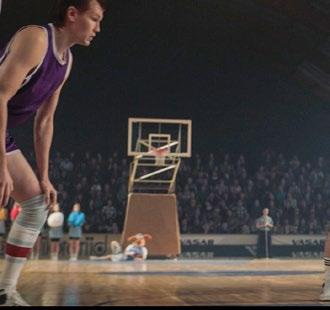
there’s a third category, which are not essential to the story, but will make the film look better. And from there, everything boils down to the budget.
Many filmmakers can only dream of proper special effects, because it’s expensive to do. What’s your advice to filmmakers?
Most importantly, don’t be afraid to come in early, even if you don’t have a finalised screenplay. We can just discuss the ideas, and see what might work best to achieve the goals. Sometimes we see easy solutions, which don’t involve long working hours and huge costs but are highly beneficial to the film. There are many different techniques. Personally, I love reading scripts and thinking along.
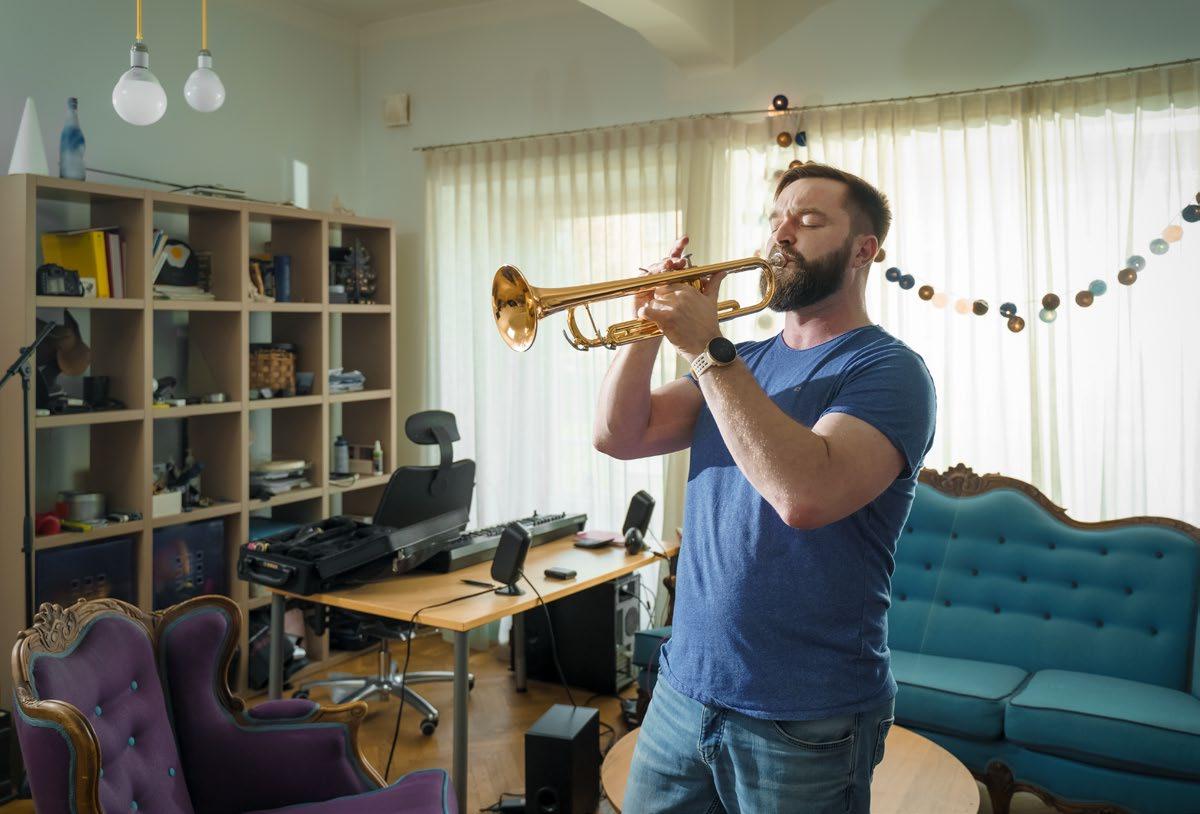 Creating crowds in Kalev
Heiki Luts making musical magic in his office.
Creating crowds in Kalev
Heiki Luts making musical magic in his office.
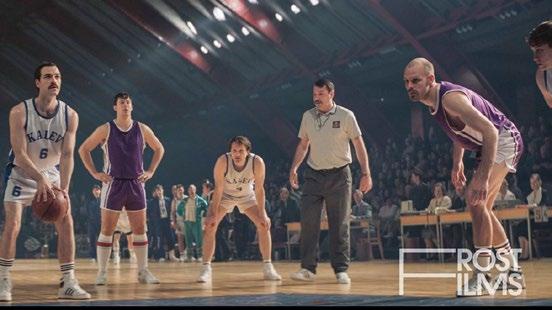
It seems to me that crowd effects are often done badly, with the copies of people easy to spot. You did a great job on Kalev with the atmosphere at the basketball games. How did you achieve that?
The film was supposed to be shot at the original old sports hall, but due to COVID-19 everything had to be rescheduled, and we couldn’t do it there anymore. We had to film in a larger venue instead, which gave us new opportunities. We were able to put the stands a bit further from the court to create a larger contrast between the two.
We lidar-scanned the original hall and built a detailed model, virtually placing it in the larger hall. Based on that, we were able to put everything where it was supposed to be. There was no blue or green screen, it was a black box. Then we sent all 300 shots to India where they cut the people out one by one, then sent them back to us to digitally add people into the model we had created. In the end, it’s a combination of a 3D-crowd and some groups of people filmed on green screen, and the mixture creates an illusion of everyone being real.
The key is lighting. We had the lidar scan, we were able to fixate the lights in the same places while shooting the scenes. This made it possible to blend the digital and the real, which makes everything look natural.
Has there recently been a film where you’ve been amazed at how such effects were achieved?
Pretty much all large Hollywood blockbusters! That’s an altogether different league. They just have so many people working on effects. We’re a boutique compared to that – 10 people plus additional personnel based on projects. Avatar is created by hundreds or even thousands of people. We are able to achieve the same quality, but not in the same time – quality comes from having as many versions as are needed to get exactly what you want. And you need time to discuss every version. That is why special effects are so expensive – quality takes time.
Marvel movies have received criticism from animators due to short deadlines and bad planning, while it seems to me the audiences have grown weary of all-consuming digitalisation. Are special effects being counted on too much?
To be honest, I am personally not drawn to films based solely on special effects. I like it when an effect is used in a deeper way, as a tool to better tell a meaningful story.
To be honest, I am personally not drawn to films based solely on special effects.
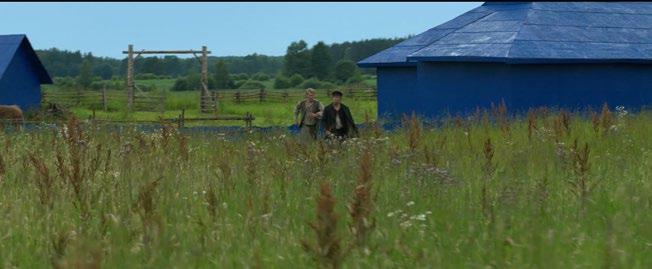
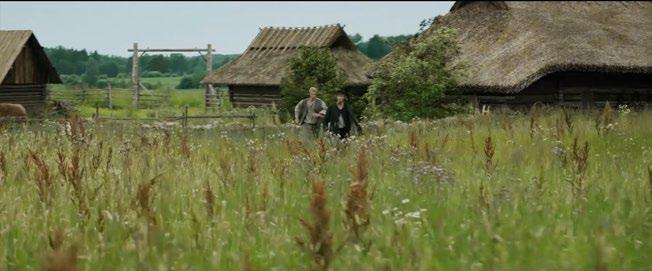
Frost Films magic working in Truth and Justice.
The most Hollywood-like Estonian film is probably Truth and Justice. Was it your largest work?
Kalev was actually three times as big in terms of effects. Truth and Justice was big as well, it had even more effects, but many of them were not as difficult to do. One of the most interesting challenges was how to create snow – you can create different emotions, both a sense of calm or storm through it.
You’ve also worked on American films – for example, One Night In Miami… How did those reach you?
We did a bit of sales through acquaintances – we did go to Hollywood as well and met a few people. There was a great VFX supervisor, whom we knew from before, and who needed help. We were already working on Kalev, and were able to use the audiences for One Night in Miami…, while also improving the effects for Kalev.
What is the advantage of Frost Film ahead of other competitors?
Flexibility. We try to find solutions for everyone who comes in the door; independent of their budget. You can come with a student film – let’s talk and see if we can help. EF
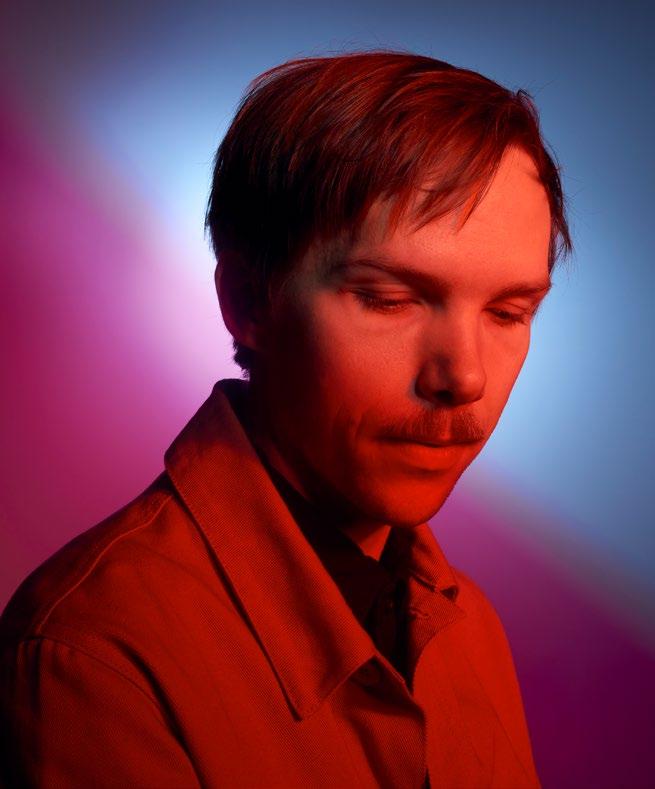
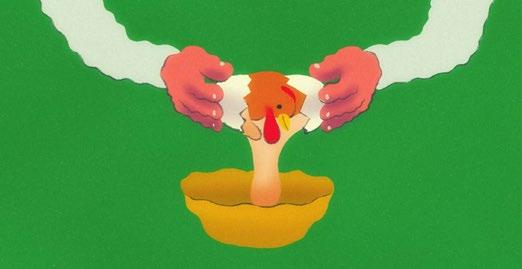
An entire chicken appears from an egg in the absurd pancake-making clip for Hulu.
Estonian director and animator, Sander Joon, perhaps best known for his most-recent festival darling Sierra (2022), is forging a path as a creative tour de force in the international animation circuit. This year his name is behind two short animations selected to screen at Annecy international animation festival, the largest of its kind in the world.
Joon created both the signature graphics and an official love-themed trailer featuring kissing frogs, butterflies, and flies for the 14th Kosovo International Animation Festival Anibar, that took place last July. Previously, the trailer has also reached the prestigious Ottawa Animation Festival, where it received the top prize in its category. For Hulu, a streaming platform owned by Disney+, he directed a clip in-between cooking shows that focused on making a pancake in a surreal sauce. Both films will be screened in the Commissioned Films competition programme and show his characteristic humorous touch and vibrant aesthetics.
“For these commissioned works, the clients approached me because of my specific style. They gave me
considerable creative freedom, allowing me to experiment and explore various visual ideas, as if I were working on my personal film. It’s wonderful to see that such collaborations can also find their way to the largest international animation festival.” comment-
Butterflies, frogs and flies are looking for love in the Anibar trailer.
ed the director, whose previous international collaborative projects include, amongst others, the series Rick & Morty and Reebok. However, it’s not the first time his works can be seen in the line-up, as two of his previous animated films Velodrool (2015) and Sounds Good (2018) have also screened at Annecy.
Bountiful in artistic ambition, Joon is currently in the process of making his first feature animation with the working title Seagulls of Eden. Drawing inspiration from a former industrial neighbourhood in Tallinn, Kopli, it takes a bird’seye look at the locals navigating the growing pains of leaving the nest and starting an independent life. The perspective is given by a seagull, a very characteristic inhabitant of the area.
Sander Joon, laureate of the President’s Young Cultural Figure Award, is an Estonian film director whose films have travelled to top festivals such as Clermont-Ferrand, AFI Fest, Palm Springs Shortfest, Annecy, San Francisco IFF, Odense, Ottawa, Zagreb, DOK. Leipzig, etc. The film Sierra (2022) has so far been selected for more than 200 festival programmes and won more than 50 awards. EF
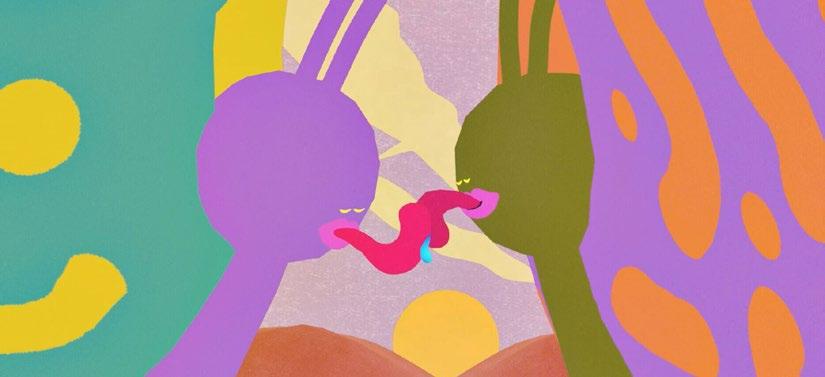
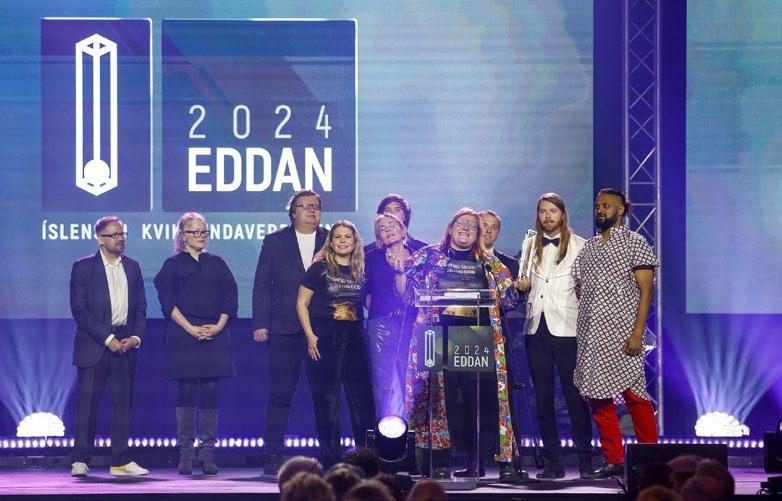
Spring is a time for summarising and awarding prizes, not only in Estonia but also worldwide. Estonian films have shone brightly on the international stage this year, bringing home prestigious awards and nominations.
At the Icelandic Film Awards, Edda, Smoke Sauna Sisterhood garnered yet another award for Best Documentary. The film was nominated in six categories: Best Director – Anna Hints, Best Cinematographer – Ants Tammik, Best Editor – Hendrik Mägar, Tushar Prakash, Qutaiba Barhamji, Martin Männik and Anna Hints, Best Composer – Eðvarð Egilsson and EETER, Best Sound Design – Huldar Freyr Arnarson, and Best Documentary – producers Marianne Ostrat, Hlín Jóhannesdóttir, and Juliette Cazanave. The collaboration between Estonia, Iceland, and France demonstrates the power of international cooperation in filmmaking. With its six nominations, Smoke Sauna Sisterhood was the most nominated minority co-production in the history of the Icelandic Film Awards.
The Icelandic feature film Driving Mum, an Icelandic-Estonian co-production, was nominated in ten categories and won nine Edda Awards, including the award for Best Music by the brilliant Estonian composer Tõnu Kõrvits. In addition, Matis Rei was nominated for the Best Film Sound award, showcasing the high standard of our film industry.
Smoke Sauna Sisterhood was
also nominated for the European Parliament’s Lux Prize, which is a significant achievement proving the depth and relevance of the film’s storytelling on a broader scale.
In the US, the film received yet another nomination. Marianne Ostrat, its producer, was considered for Outstanding Producer of Documentary Motion Pictures by the Producer’s Guild of America.
The feature film The Invisible Fight by Rainer Sarnet, another wonderful example of the diversity and collaborative spirit of the Estonian film industry (a co-production with Latvia, Greece, and Finland), was nominated for the Latvian National Film Awards (Lielajs Kristaps) in two categories.
Jaanus Vahtra and Berta Vilipsone won the prize for Best Costume Design.The film is also considered for the Hellenic Film Awards in the category of minority Greek co-productions.
Estonian filmmakers were also recognised at the Finnish National Film Awards, Jussi. Külliki Pert was nominated for the Best Make-up Artist Award, and Neoon Must for the Best Costume Design Award for Inari Niemi’s feature film Light Light Light. These achievements reflect the dedication and creativity of Estonia’s filmmaking community, and pave the way for future successes.
By EFI
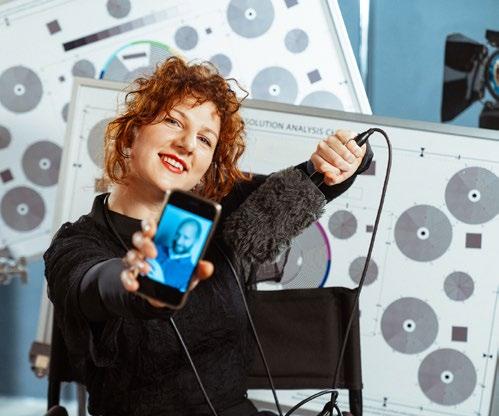
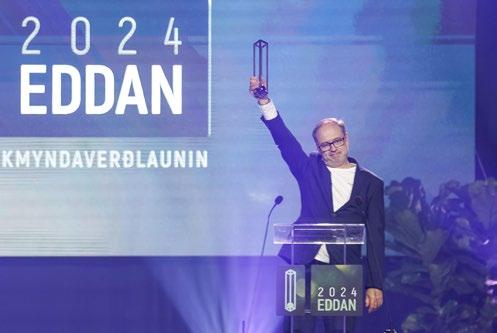

“When I am filming in nature, I’m only one of the directors, nature is the other one,” says animation director and puppet maker Anu-Laura Tuttelberg, who has just wrapped up the second film in her trilogy of the seasons, On Weary Wings Go By. It’s a poetic ten-minute stop-motion film about winter. Anu-Laura shares her five-year journey of making the film.
By Aurelia Aasa Photos by Virge ViertekYou have only recently completed the sequel to your puppet animation Winter in the Rainforest (2019, produced by Nukufilm).
While that was shot in the jungle, the new film On Weary Wings Go By (produced by Fork Film) is set by the wintry Baltic and Norwegian Sea. It is not so common to shoot puppet animation outside. Can you describe your process?
When I was making my first film Fly Mill (2012), I didn’t see daylight for half a year. I was always in the dark studio and had no idea what was going on outside –whether it was day or night, winter or summer. It seemed like a wrong approach to life. As we work for a large portion of our lives, the work needs to be moved into an environment you want to be in. It started with the film On the Other Side of the Woods (2014), a film that I shot in the previous studio of Estonian artist Ants Laikmaa that had windows on both sides of the room. During making Winter in the Rainforest and On Weary Wings Go By, I moved outdoors to film. It was a radical step because if you work with sunlight indoors you still have quite firm control over the environment. Natural light has its intricacies but at least it’s warm, it doesn’t rain on your head and the bugs don’t bite.
I saw a photo from the shoot of On Weary Wings Go By on social media, where you pulled cameras and other gear to the seaside on a plastic sledge.
(Laughter). Yes, but it wasn’t a plastic kids’ sledge, but a sledge used by the ice fishermen, perfect tools I discovered during that shoot. I went to fishing and hunting stores to look for equipment for times where one must stay outside, and in the same spot for long periods. Filming outside is no race. You rather resemble a fisherman by the ice hole, toes frozen blue. That’s why the ice fishers’ sledges were ideal. Film equipment is very heavy – camera, computer, stands, puppets, all kinds of clothes, a thermos with soup. I couldn’t have carried it all through the snow. A sledge makes it easy – you just load everything on there, cover it up to protect the baggage from snow and get going.
Shooting conditions in the jungle and in wintry Estonia are completely different. Did they differ emotionally as well?
Yes, those films have a very different atmosphere. Filming in the jungle feels like the film Winter in the Rainforest – lush and abundant. The process is totally chaotic: unbearable heat, mosquitos, bouts of rain, flooding rivers. I’d say that in
some ways it was harder to film there than in Estonian winter, because unless you go out in sleet, you can never get completely wet in winter. Being in the jungle is quite different from the idea of the jungle. It seems so pleasant, warm and colourful in the photos, but the real experience involves many more things. The crickets chirp like car alarms at night, not a moment’s silence. Your body is sticky and sweaty from humidity all the time.
Seems like On Weary Wings Go By is a sort of counter reaction to that.
Completely. Shooting outside in winter, you must take extreme cold into account and survive that, but the weather is constant, and not changing too much. Only on some days we experienced a snowstorm in the middle of the day that whirled our stuff away into the woods, so we had to look for our things in the storm.
Did the film take several winters to complete?
Yes, the first winter was spent on preparation and tweaking the work rhythm. Wake up in the morning, pack, put clothes on, warm some soup, and then off to the woods or to the sea. I animated everything, Marianne drove us around, warmed the soup and held everything together. Some shots were completed, a

large part was not. Most of the shooting took place in the second winter in Karepa village on the Northern coast of Estonia. A very kind friend let our film team stay in his summer house for three months in the winter. The summerhouse is very close to the beach so it was easy to go to work every morning. I could live at the location throughout the winter and shoot the whole film efficiently.
How did you and Marianne Ostrat (who also produced the acclaimed feature documentary Smoke Sauna Sisterhood by Anna Hints) find each other?
When Winter in the Rainforest was in development, I was convinced to submit the project to the Baltic Pitching Forum. I wanted to keep working on my own and the idea of a public pitch didn’t seem very appealing. But I submitted the project and ended up getting selected. On arriving in Vilnius, I found out I would be sharing a hotel room with Marianne Ostrat. That’s how we got acquainted and when I started a new project, I contacted Marianne. She is a producer by trade, but an artist at heart.
Both Winter in the Rainforest and On Weary Wings Go By are made in collaboration with the Lithuanian studio ArtShot. How does international co-production work in the case of puppet animation?
Our collaboration with ArtShot saved Winter in the Rainforest. We had met with the producer Agnė Adomėnė at the Baltic Pitching Forum and when Winter in the Rainforest was nearing completion, I contacted her. The film was essentially ready but there was no money for post-production. Agnė liked the film and we got funding from Lithuania. We


On top of a mountain in Lofoten, capturing the movement of the sun on the horizon all day long.

worked so well together with the Lithuanian post-production team that continuing with them for On Weary Wings Go By was only natural.
On Weary Wings Go By was partly filmed in Northern Norway, at the residency on the island of Senja?
The first time I was at Kråkeslottet Art Residency was during the polar night. There was no daylight at all from November to January, just dusk for a couple of hours a day. I had brought ceramic puppets along but there was no light to photograph them. When I tried to set my puppets up on a snowy beach, I understood the intriguing contrast. That’s where the idea for On Weary Wings Go By came from. When we started to make the film with Marianne, we planned to return to Norway. It’s a magical place. The residency – now unfortunately forced out from its original location – was situated in a 19th Century fisherman’s house. There was a glass wall on one side of the building, with a clear view of only the ocean. Some rooms had holes in the floor where you can see the splashing water underneath. Orcas swim by the island, even blue whales have been spotted there. On the other side of the house there is a turquoise bay with white sand. The second time we were there was in November. As the film depicts late autumn – the time when the sun sinks lower, the birds fly away and the winter starts – I wanted to capture the moment on the island when the sun is very low.
The more I listen to you, the more I hear the animation documentarist in you.
Films made in nature are all documentaries in some way. First, they talk about nature and its rhythms, and second, I
am just one of the directors, nature itself is the other. When I take my puppets out into the nature for filming, I can move the puppets but everything around them is out of my control. It’s an inevitability or a bonus, depending on the situation. Sometimes when you are in the jungle or by the sea, you just keep fighting because nothing seems to go your way. Other times it’s the opposite: you set things up, start filming, and nature amplifies everything – the light appears at the right moment, the wind turns in a favourable direction, or it starts snowing. On those rare moments you are in harmony with nature and feel like it’s exactly the right spot to make a film.
You shoot on film. Why?
For me, film is one of the means of expression. Beginning to paint, one must decide if it’s going to be on canvas or cardboard, oil or acrylic. The same with film – you must choose if it is coloured or black and white, grainy or so smooth that you can detect no texture. Film stock is a much better conduit for atmosphere, it has its own vibe. As the material of the puppets is crucial in my films, as well as the way these materials behave, it seems only logical that the film itself is also material, tangible.
You have remained true to porcelain in your last films. For me, porcelain is a crisp but luxurious material. What meaning does it have for you?
Materials express the character of the puppets in my films. I have always been drawn to the old porcelain dolls, but it’s a complicated material to work with. Heavy, fragile, time-consuming. That’s why it’s quite rare in puppet animation. In my first films, I didn’t even use porce -
lain, but I designed my puppets to look like they were made of porcelain. Later, at a film festival in Mexico, I ended up in a small village where a local eccentric patron of the arts had constructed a garden of surreal sculptures. Four-storey high concrete buildings that had become one with nature. I thought about my porcelain puppets and how the same effect could be applied to them. I decided then that I want to experiment with porcelain in my next films, despite the challenges. Winter in the Rainforest took five years to complete, On Weary Wings Go By took another five.
I’ve always thought of animation as an exercise in patience. Are you a patient person?
Patience and suffering are side by side and sometimes filmmaking is mostly suffering. The trick is to find a working method that you enjoy – for me, it’s out in nature. When I must suffer anyway, I’d rather do it in a pleasant environment. Sometimes in winter you are shaking outside from the cold, -15 oC, you cannot take your gloves off because your hands will freeze, and you can’t do anything with the gloves on either because the tiny puppets need to be moved, or you must push the button on the camera… In other words – it’s all very uncomfortable and cold, the frames don’t come out right, everything is difficult, but you realise in hindsight what a privilege it is to be able to work outside, on the picturesque beach. I have never been on the beach as much as during the last shooting period. So, the suffering is sweet for me, and achieving set goals gives me pleasure. The work would be dull without difficulties. Every film has to surpass the previous ones, otherwise there’s no challenge. EF

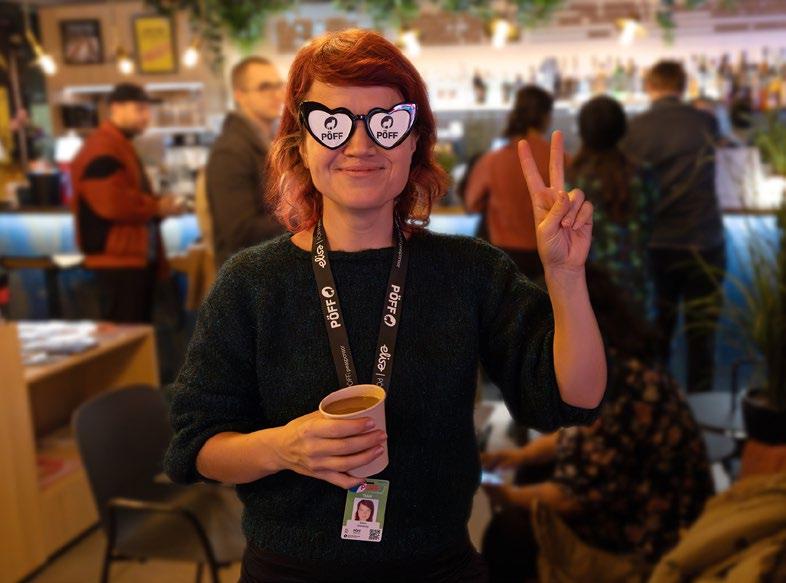
The 28th edition of Tallinn Black Nights Film Festival (PÖFF) welcomes fresh perspectives while emphasising the growing overlap between the sub-festivals (Youth and Children Film Festival Just Film and PÖFF Shorts) and the festival’s industry arm, Industry@Tallinn & Baltic Event.
By PÖFF Photos by Greta Sauter and Janis KokkPÖFF 2024 takes place November 8-24, whereas the key ideas have already been shouted out. For instance, to support autonomous filmmakers, PÖFF selected Georgian independent cinema for 2024’s spotlight. According to PÖFF founder and director Tiina Lokk, PÖFF always stands with independent filmmakers. “It’s not just dictatorships
like Belarus trying to muzzle their filmmakers – the ambition of politicians in power to control who makes films, and what they are about, is increasingly evident everywhere. We must draw attention to this, and support all filmmakers who stand up for their independence,” she said. Therefore, support for independent filmmakers is also a part of the Industry@Tallinn & Baltic Event pro -
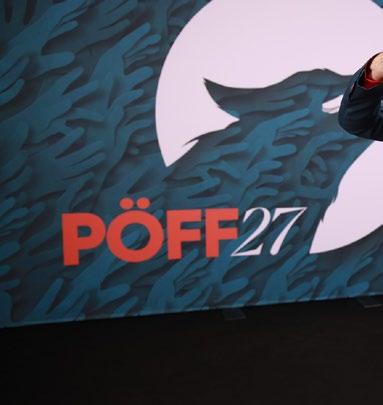

gramme. For example, a panel discussion on the creation of the Belarusian Independent Film Academy was held in 2023.
As the preparations for the next Industry@Tallinn& Baltic Event are in full swing, there are a few exciting developments to share. One of the highlights of ITBE has always been the Baltic Event Co-Production Market, held since 2005 with hundreds of film projects under its belt. For the coming years, the market aims to foster even more fruitful meetings and is welcoming back the Eurimages Co-production Development Award for 2024–2026, The award includes a non-reimbursable subsidy of €20,000 for feature-length fiction, animation, and documentary films, which must be used exclusively to cover the development expenses of the co-production project. The call for submissions is open until mid-August.
In addition to feature films, ITBE has kept a close eye on the drama series market and trends. In 2024, TV Beats Forum, the strand focusing on the drama series
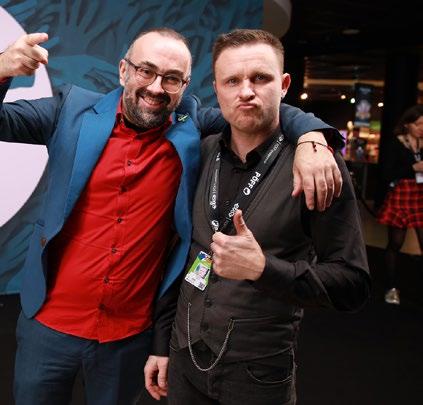

We’re excited to expand our film education programme for Estonian teachers, aiming to integrate film and filmmaking into the fabric of schools and student life.
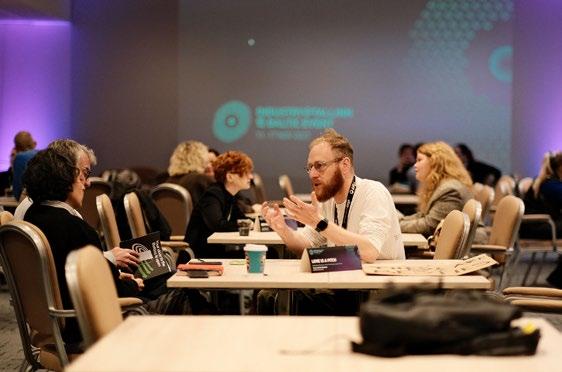
market, comes with fresh insights, as the programme will be curated by Petri Kemppinen; a seasoned expert in international film and TV content with a track record of more than 25 years in the industry.
TV Beats Co-Financing Market, established in 2021, has focused on presenting a series of projects with international sales and distribution potential. This year, the motivation to take part in the market activities takes a huge leap forward, as the Co-Financing market presents the Series Co-Production Development Award, worth 50,000 euros, intended to foster creative collaborations in series co-production and empower independent producers.”
The award forms a part of the Pilot Programme for Series Co-Productions, an initiative of the Council of Europe, home of Eurimages. “The call for projects has been opened already,” said Liiske. industry.poff.ee
JUST FILM AND JUST FILM INDUSTRY DAYS RIDE A YOUTHFUL WAVE!
The last edition saw the Youth and Children’s Film Festival Just Film go interna-
tional with the #youngfilmmaker programme that aimed at bringing more international films by young creators to the festival. “Now, we’re eager to keep that momentum going with an eye toward international and educational expansion,” said Kärt Väinola, the coordinator of Just Film Industry Days.
Young filmmakers are encouraged to submit their projects to the international #youngfilmmaker programme, with pre -
mieres scheduled for select screenings during Just Film in November. Submissions are also open for other programmes, including competition programmes, with the grand prix of Just Film standing at 3000 euros.
Just Film Industry Days will be back on November 21–22 for a two-day programme aimed at industry professionals, and is a golden opportunity for up-andcoming filmmakers and educators alike, with dedicated programmes. Väinola adds: “We’re excited to expand our film education programme for Estonian teachers, aiming to integrate film and filmmaking into the fabric of schools and student life.”
She adds: “We are also thrilled that our friendship with KIDS Regio has officially grown into a three-year-long partnership to create a ground for new networking opportunities, and find ways to bring children’s and youth film makers together. The plan is to kick off by sharing the results of Europe-wide research, “Keeping up with children as an audience,” providing authentic insights into the viewing habits of kids aged 7–11. We will also try
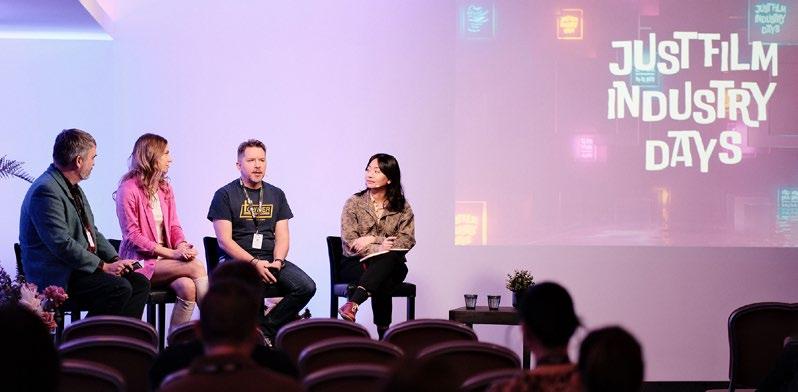
out the newest evening event format, “The Fuck Up Night”, where failures meet solutions, emphasising the importance of learning from mistakes and moving forward wiser. Because what connects people more than seeing others fail, too!”
Just Film Industry Days covers technology and AI developments, talks about changing film formats, with plenty of networking opportunities, and the chance to enjoy high-quality films for children and youth in our modern cinema halls. The organisers are proud that at Just Film and Just Film Industry Days, innovation meets tradition, and youth takes centre stage.
In 2023, PÖFF Shorts joined forces with the festival’s industry strand. While celebrating the art of the short film in and of itself, and being there to champion the unique nature of the medium, PÖFF Shorts also recognises that short films are the beginning of a cinematic journey that will lead to feature films for many young filmmakers. The Go Long initiative aims to nurture a select number of filmmakers whose shorts have screened in competition at PÖFF Shorts. Taking filmmakers who are at the very beginning of their journey into the world of feature films, Go Long will offer the participants advice on their ideas via informal networking with a panel of industry professionals. The participants will then be able to better negotiate the feature film world with invaluable tips and feedback for their feature proposals.
PÖFF Shorts Live Action Shorts Programmer and Head of Industry, Tara Karajica, first became acquainted with PÖFF a decade ago when she attended

the festival as a film critic/journalist, and she never looked back. “The festival has always felt like home,” she shares.
Karajica wishes to turn PÖFF Shorts into an even more stimulating, inspiring and thought-provoking platform for talent building; with industry events that follow current trends in (short) film, strengthen the ties between the Baltic and international short film communities, and meet the needs of the global short film industry. “My hopes and dreams for PÖFF Shorts, and therefore my goals, are to help it reach new heights by making it the unmissable and coolest event on the circuit, as well as a place of exchange between like-minded people, a place where the quality of selected films continues to inspire, a place of connection, of learning and discovery,” Karajica says. She adds: “With its industry programme that includes initiatives such as Go Long, PÖFF Shorts is in a unique position that bridges the gap between shorts and features, and in doing so strengthens its ties to PÖFF.” EF

Discovery Campus, a continuing education arm of Industry@Tallinn & Baltic Event, calls for new participants! With its prestigious international partners, the programme has hosted hundreds of talented film professionals and acted as a springboard for success stories over the years.
Young film professionals can attend four sub-programmes: Script Pool project competition (teams of directors, writers and producers), Music Meets Film (talents in film music), Black Room (art department), and the newest strand Frame within a Frame (cinematographers). During the 4-day programme, participants will have an amazing opportunity to attend masterclasses by renowned experts, as well as workshops and events to upgrade and update their knowledge, while also building a network among film professionals!
Call for submissions is open until 15 August 2024! Learn more at industry.poff.ee
“Script Pool Tallinn was integral to our journey. The mentorship we experienced provided invaluable creative feedback, as well as the chance to refine our approach to sales and distribution. We are grateful for the opportunity Tallinn has provided our team.”
Jalta Siddartha, the director and writer of Script Pool 2020 participant In the Belly of the Tiger. The film premiered at the 74th Berlinale Competition.
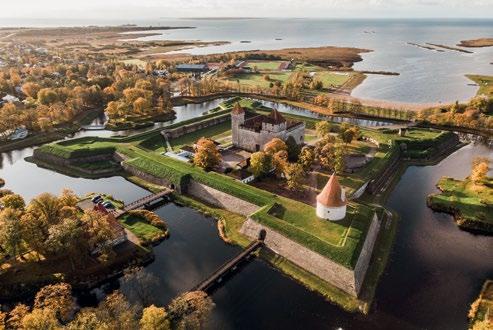
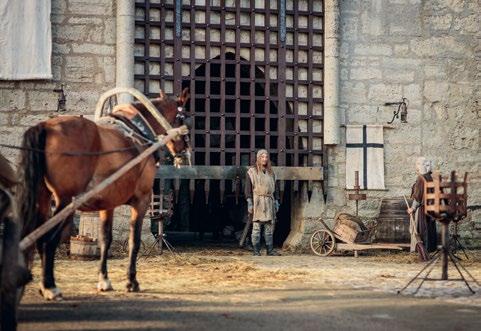
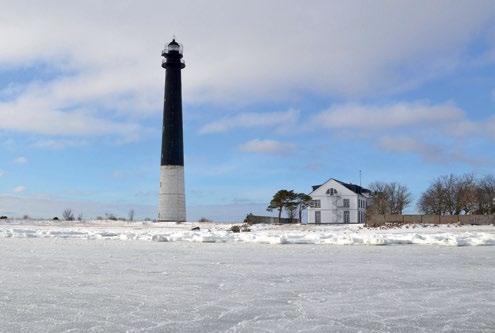
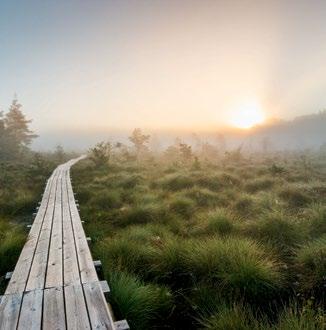
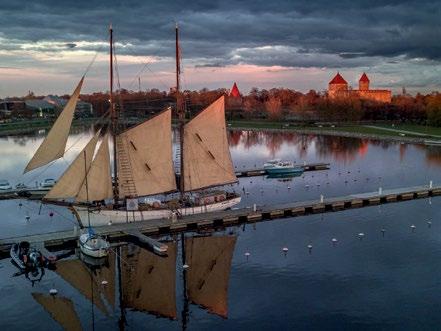
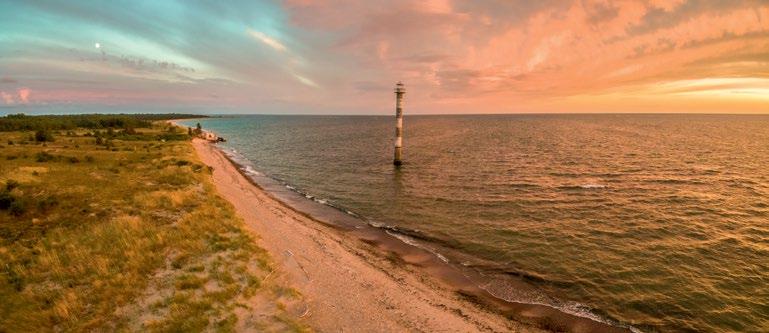

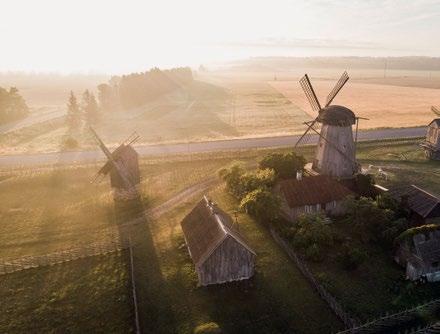


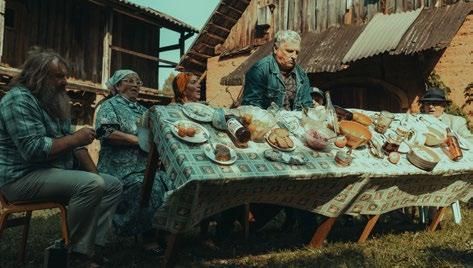
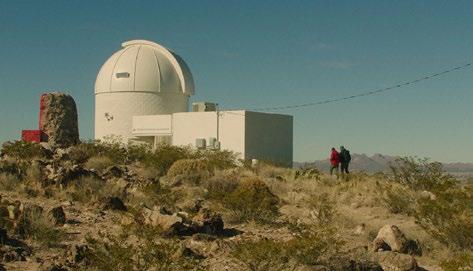
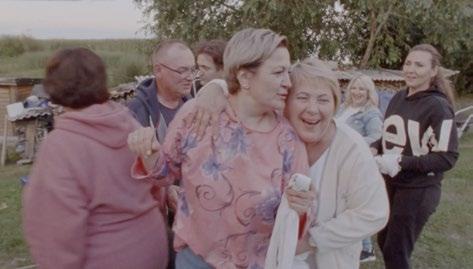
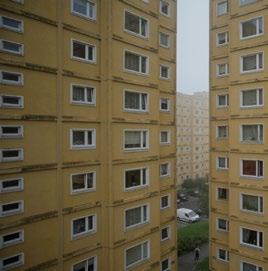
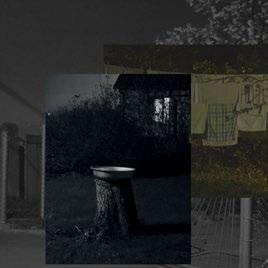
Film as a medium is an efficient way of telling stories, which is why it plays a large part in the programme of the European Capital of Culture 2024 – Estonia’s university town Tartu along with the whole Southern Estonian region.
By Leana Jalukse Photos by Arts of Survival DocumentariesThe programme’s principal concept is Arts of Survival – knowledge, skills, and val ues, which will carry us to the future. Audiovisual works are created in its vari ous strands, thematically divided into four – sustainability, co-creation, uniqueness – the lo cal in dialogue with Europe, and awareness – the tech nological reality and its influences.
The Arts of Survival Documentary pro gramme has been a part of the activities of the European Capital of Culture since its inception, and was one of the key ele ments for securing the title in 2019. Over the course of three years, a string of for eign filmmakers were invited to resi dencies in Southern Estonia. They were not given any artistic restrictions other than treating local topics. The fi
nal output of the programme is a collection of eight short films selected through an open call – four by international filmmakers, four by locals.
Kati Torp, the Artistic Director of Tartu 2024, brought out some personal favourites. The River and A Cat is Maria Aua’s dreamlike portrayal of the city of Tartu and the surrounding countryside through the eyes of a photographer, inspired by the work of painter Imat Suumann. Whereas Hilda Ha. Off the Grid by Eva Kübar puts a global topic on a local landscape, by documenting the daily life of a German woman raising a one-year-old in a tiny cottage with no water or electricity. She is saving the planet in a quiet way as opposed to attending Fridays for Future demonstrations. From among foreign authors, Andrey Paounov found his subject by scouting the scenic Onion Route running along Lake Peipus. Karakat is a self-assembled vehicle made of recycled materials, which was historically used for ice fishing, but is today an epitome of creative ways that people use to cope with the constantly changing environment. The DIY and Mad Max vibe of A Perfect Day for Karakat is contrasted by Andris Gauja’s The Art of Looking with its two very different perspectives. Director Gauja went to the resi-


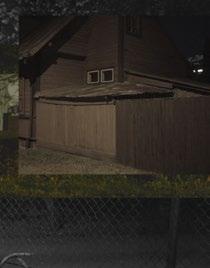
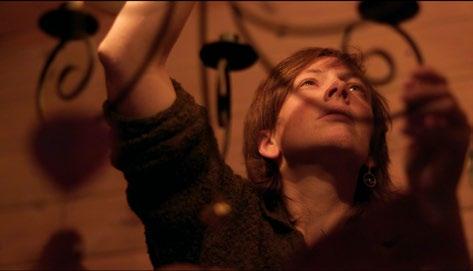
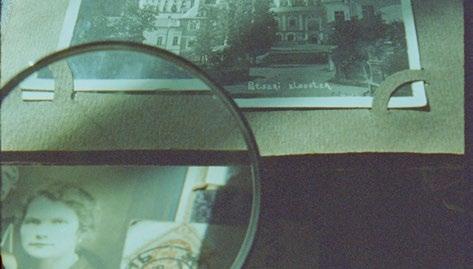
dency with an existing idea of researching both astronomers, who look at their subjects with telescopes, and slime mould researchers, who zoom into their world with microscopes. His expectations were exceeded as similar patterns emerged through both technological filters – amplification, which we have to trust to see the otherwise unattainable realities.
The collection titled The Wild South premiered on May 4 in Tartu and other regional centres. The organisers see the collection as a legacy, which can be further distributed in the future.
In addition to projects initiated by the Tartu 2024 team, various ideas were submitted through three open calls by the artists themselves. The Unstruck Sound (working title) is an interdisciplinary, transgenerational project submitted via the call for international projects taking place in Tartu and Southern Estonia by the renowned artists’ group Blast Theory (a four-time BAFTA nominee with work shown at the Venice Biennale, Tribeca Film Festival, Channel 4, Sundance Film Festival, and the Royal Opera House). Led by Matt Adams and Nick Tandavanitj, the group focuses on interactive art projects that are distributed on both silver screens and in the exhibition halls.
The work explores possible radical responses to the climate emergency with the help of both youngsters and elders from across Southern Estonia with the aim of predicting the environment of Tartu and the surrounding region in 2074. For this, five young people will interview the old about life in 1974 and explore the possibilities for society 50 years in the future. Be it a utopia or a dystopia, the outcome will show how citizens have adapted to the threats and found new forms of resilience – their very own Arts of Survival.
The resulting short science fiction film will be shot at locations throughout the region and showcase stateof-the-art visual effects. Today, the artists have finalised
the screenplay and will proceed to production in collaboration with the Estonian-based Lanzadera Films, helmed by producer Miguel Llansó. The Unstruck Sound will premiere at the Tartu 2024 closing ceremony on November 30.
UTOPIAS AND DYSTOPIAS FROM EASTERN EUROPE
The science fiction theme continues in the Stalking Eastern Europe programme. The retrospective of historical sci-fi films from the previous century is organised by the International Literary Festival Prima Vista: Futures Better and Worse, and curated by Jaak Tomberg, the Associate Professor of Estonian Literature of Tartu University.
The Arts of Survival documentary programme is a collection of eight films – four by international filmmakers, four by locals.
The films selected for the programme look at various utopias and dystopias, i. e. what can go well, what can go badly, and how. The topics range from climate catastrophes - a recurring theme in science fiction, surveillance society, and artificial intelligence. The programme was originally titled 1984/2024 as in Orwell’s 1984, and politics is definitely an issue that can be addressed through these films - the war in Ukraine, the military conflict in Israel, the emergence of Trumpism and the far right, etc.
Kati Torp admits that film is a good medium, through which thoughts and visions drawn on paper emerge especially clearly. The retrospective will therefore organically complement the festival, which will be attended by many literary scientists.
The programme Ukraine. Breakthrough Years was a need-based addition and it was scheduled to coincide with the second anniversary of the war.
The programme was curated by Filipp Kruusvall, who has Ukrainian roots on his mother’s side, and held in the Estonian National Museum. The backbone of the selection was the timeline of the recent history of Ukraine, as the main objective was to explore the broader geopolitical context and shed light on the beginnings of the conflict. The February 2022 attack did not spring from nowhere – Euromaidan already took place in late 2013 and war had waged in Eastern Ukraine for eight years before the full-scale invasion. 11 high-quality documentaries by both national and foreign directors, all depicting significant events and major issues in Ukraine’s contemporary history since the 1980s were screened.
The organisers are currently looking for ways to distribute the programme internationally.
While, on principle, the project team only decided to finance its programme and not develop infrastructure, Kati Torp admits that they hope some of its initiatives will be picked up by the co-organisers and planted on Tartu’s cultural landscape more firmly. Especially, Torp would like to see the continuation of the residencies, which are rather established in other art forms, but not so much for the audiovisual artists.. EF
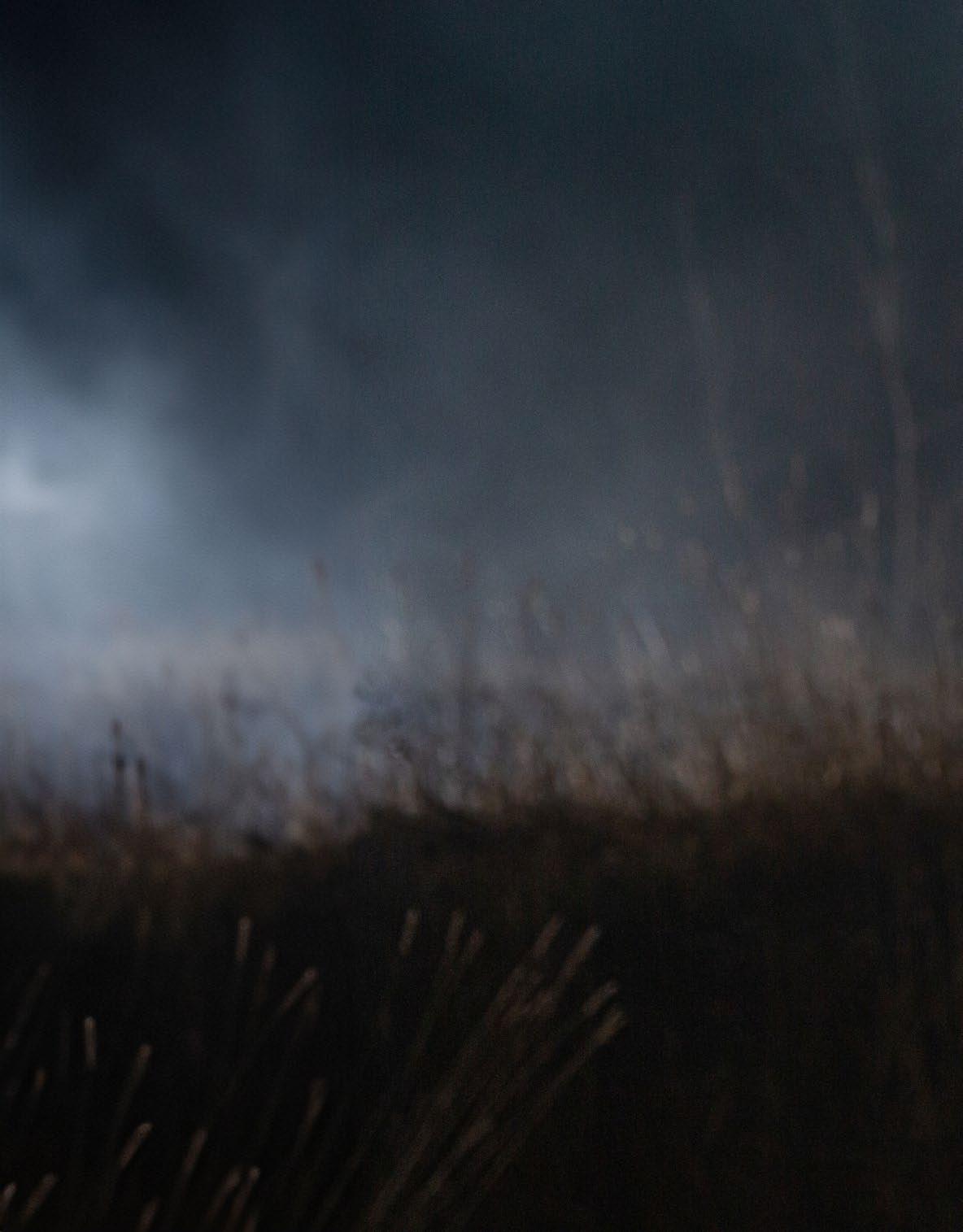
After
a 16 year
break, Alien is back to hit our collective consciousness over the head with a spade.By Tristan Priimägi Photos stills from the film
In 2006, Estonia was swept away by a tidal wave of gopnik subculture, with its X-rated vocabulary, small-minded, small-town hustling, and general ignorance wrapped in utter confidence. Rasmus Merivoo’s 20-minute black caricature of the gopnik dudes, based on Estonian parking lot tire-burners with macho attitudes, was propelled to unprecedented heights. Alien (Tulnukas), the film that almost never came to be – apparently noone in film school supported this movie, or wanted it to be finished – went viral after completion. Or, rather, VIRAL, with over a million views on YouTube, a DVD release, massive cult following, quotes from the film hijacking popular culture, and all sorts of special events still happening on a regular basis, almost 20 years after the release. The film, fully ti-
tled Alien: The Saving of Valdis in 11 Parts (Tulnukas ehk Valdise päästmine 11 osas) portrays the nominal character Valdis (Märt Avandi) who, after getting hit over the head with a spade, loses the subcultural context of his existence and has a hard time understanding any of the activities of his mates. Everything that had seemed normal or standard before, now feels weird. Valdis must find his way in this newly purified life and make sense of it all again, starting from scratch. After 20 minutes, and a record number of highly inventive expletives, Valdis gets abducted by aliens. Because… aliens. Now, after an 18-year break, this cult story finally gets a long-awaited sequel. Alien II, or the Return of Valdis in 17 Parts (Tulnukas II ehk Valdise tagasitulek 17 osas) sees the story taken boldly into the full-length format, and it’s a sort
of narrative reversal of the initial short film. Valdis, back from outer space and alien abduction, has remembered everything about his previous life, and is ready to restore his previous arrangements, and return to his wheeling and dealing days. However, the world in his small hometown Muusalu has really moved on in the meantime. Alien II portrays Estonia in a not-too-distant future, where all the pivotal changes currently happening in society have come to completion: The country is governed by a female president, all cars have gone fully electric, all drugs are legal, and sexual liberty is encouraged in all shapes and forms. His best friends have become cops and some others have gone fully off-grid, wrapping themselves in tinfoil and conspiracy theories. Valdis lands in the middle of this New World Order like an angel
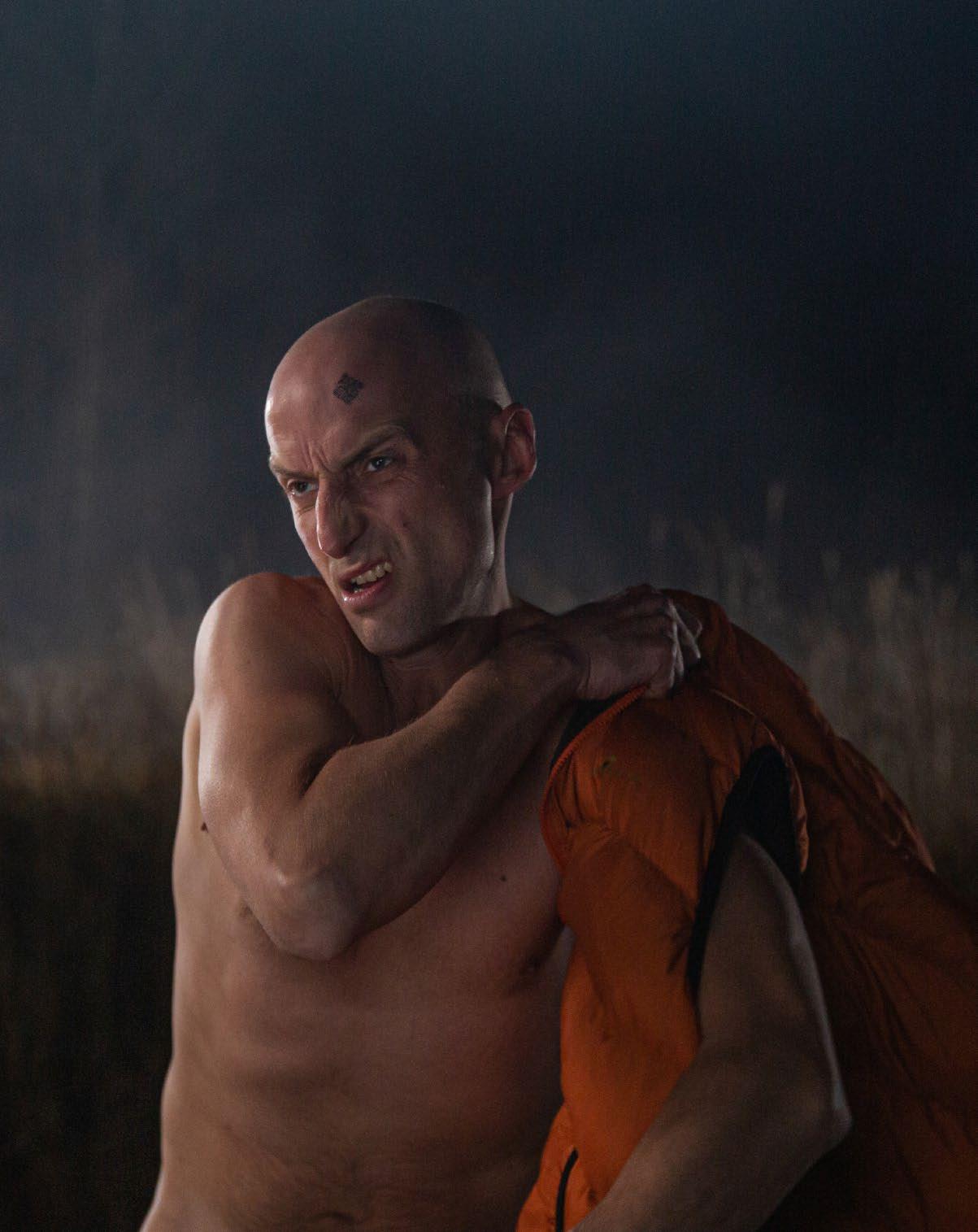
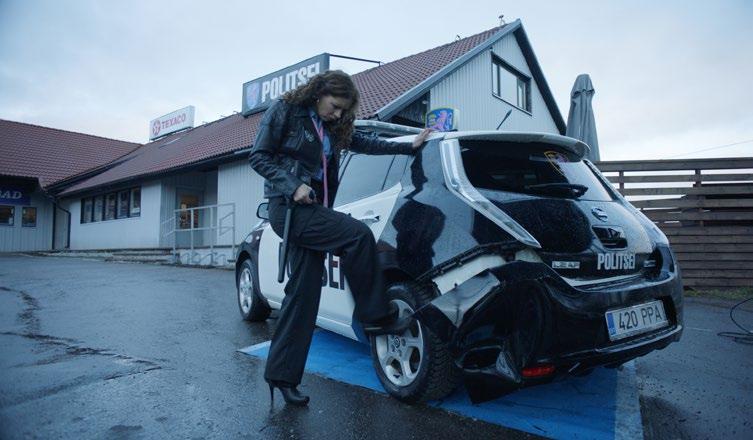
It is a film that is impartial and unbiased, in a sense that it attacks absolutely everything around it, be it left or right, right or wrong.
of vengeance, intending to set things straight, and make Muusalu great again.
Like its predecessor, Alien II is rife with off-colour jokes and vocabulary. It is a film that is impartial and unbiased, in a sense that it attacks absolutely everything around it, be it left or right, right or wrong. Director Rasmus Merivoo has said in an interview that his intent was to make the first half of the film to piss off the conservatives, and the second half is reserved for irritating the liberals. It seems like a nice soundbite, but in fact it seems more likely that everybody would be insulted and annoyed for the whole duration of the movie. There is no hierarchy, no prejudice. It is almost impossible not to be irritated by one aspect of Alien II, or the other.
on the cinema establishment, and the public is only left with an impossible choice: to admit that you are offended might mean you’re obsolete, but to embrace Alien II fully would implicate that you have become tone-deaf. Not that it isn’t planned to work like that. Merivoo is way too smart not to be aware of all the possible implications. It’s like he has succeeded in switching off the taste filter and opted to go straight for the jugular. He is gleefully firing at everyone, but the tongue is always in the cheek, his outbursts might be juvenile, even infantile at
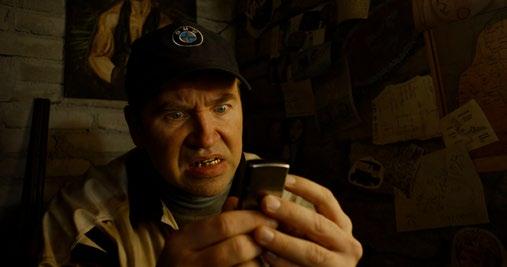
Alien II is produced by Tallifornia, who during these past few years introduced quite a few new ways of filmmaking to the Estonian film industry; trying to find a comfortable niche between private and public funding, benefitting from the former’s dynamic scheduling and independence, and the latter’s financial security and status. Tallifornia has become a company to represent young and upcoming film directors counterpointing the traditional themes, narrative structures, and shooting schedules by representing a more liberal, younger vision of cinema. The qualitative balance is still to be found, but the search to achieve it is constant and ongoing. Paired with Rasmus Merivoo’s heightened DIY sensibilities, the film works like a partisan attack

times, like he’s testing us, but they are hardly malicious. Having fun is too much fun for that.
After only two weeks at cinemas, Alien II has gathered more than 75,000 admissions, after a stronger opening week than Barbie and Oppenheimer combined. Most critics panned the film, saying that the new film misses the zeitgeist, unlike the original short. It is a classic case of the masses voting with their feet vs. the critical feedback that tries to find a way to intellectualise the whole experience. Good luck with that. Alien II communicates with the collective consciousness through the spinal cord, and evokes in us the dormant urge to just wreak havoc. How long before YOU get offended? EF
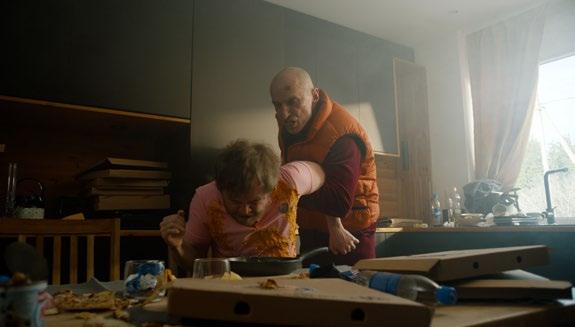

If you want to make your film with Estonian partners, these are the film funds ready to finance your project.By EFI
MAJORITY CO-PRODUCTION
Budget 2024: € 6,400,000
• Financing for an Estonian co-producer the maximum subsidy is € 800,000
• Subsidy of up to 70% of the budget
• 50% of the subsidy must be spent in Estonia
• Two application deadlines: April 30 and December 10, 2024
MINORITY CO-PRODUCTION
Budget 2024: € 600,000
• For producers from all over the world. Participation of an Estonian co-producer is necessary. Bilateral treaty not necessary
• Maximum subsidy for an Estonian co-producer: feature film and feature animation € 200,000; documentary € 60,000
• Subsidy of up to 70% of the Estonian part of the budget
• 100% of the subsidy must be spent in Estonia
• Estonian creative and production related participation in a project should meet the requirements of minority co-production grading table
• Two application deadlines: March 19 and October 15, 2024
• Decision in 40 days
Budget 2024: € 6,000,000
Film Estonia cash rebate is a production incentive supporting the incoming production of feature films, feature documentaries, animation films, animation series, high-end TV-drama and the post-production of all previously mentioned works. An application can be made for international production service or co-production to receive a cash rebate up to 30% on eligible production costs.
• Support intensity – 20%–30% of eligible costs
• Deadlines – open call
• Applicant – company registered in Estonia
• Recipient – foreign company
• Decision – in 30 days
• Auditing and payment – in 40 days
The scheme is open for:
• feature films with a budget of at least € 1 million; minimum local spend € 200,000
• feature documentary with a budget of at least € 200,000; minimum local spend € 70,000
• animation with a budget of at least € 250,000; minimum local spend € 70,000
• animation series with a budget of at least € 500,000; minimum local spend € 70,000 per series
• high-end TV-drama with a budget of at least € 200,000 per single episode; minimum local spend € 70,000 per series
• post-production; minimum local spend € 30,000
Recently supported films include: Tenet (GB/US), Memory of Water (FI), The Burial (GB), Kill the Child (US), Besa 2 (RS)
CONTACT: Nele Paves, Film Commissioner
TARTU FILM FUND
Type of fund: regional, incentive / cash rebate
• Budget 2024: € 150,000
• Support intensity: up to 30%
• Objective: production of an audiovisual work in Tartu and the region of South-Estonia
• Support for the production of feature films, animations, tv-series, documentaries, short films
• Participation of an Estonian production company is necessary
• Two application deadlines: in Spring and in Autumn
Recently supported films: Omerta 6/12 (FI/EE), Erna at War (EE/DK/BE /EE), Dawn of War (EE/FI/LV/LT), Where the Heart Is (EE), Melchior the Apothecary (EE/LV/LT/DE), Smoke Sauna Sisterhood (EE/FR/IS), 8 Views of Lake Biwa (EE/FI)
CONTACT: fund@tartufilmfund.ee tartufilmfund.ee
PÄRNU COUNTY FILM FUND
Type of fund: regional incentive / cash rebate
• Budget 2024: € 100,000
• Support intensity: up to 25%
• Objective: production of an audiovisual work in the Pärnu County (except Kihnu municipality).
• Support for the production of feature films, animations, documentaries, short films
• Participation of an Estonian production company is necessary
• No deadlines
CONTACT:
Association of Local Authorities of Pärnu County pol@pol.parnumaa.ee parnumaa.ee/en/film-fund
Travel fast. With an area of just 45,227 km2 all corners of the country are only a couple of hours away There’s space. Estonia is one of Europe’s least crowded countries It’s green. 52 % of the country is forest,
VIRU FILM FUND
Type of fund: regional, incentive / cash rebate
• Budget 2024: € 170,000
• Support intensity: up to 40%
• Objective: production of an audiovisual work in the Eastern region of Estonia.
• Support for the production of feature films, documentaries, TV-series, short films, music videos
• Participation of an Estonian production company is necessary
• Two application deadlines: in April and in October.
Recently supported films: Melchior the Apothecary (EE/LV/LT/DE), Omerta 6/12 (FI/EE), Eternal Road (FI/SE/EE), Mihkel (IS/NO/EE), Mother (EE), Erik Stoneheart (EE/LU/LT/FI/LV/UA)
CONTACT:
Piia Tamm piia.tamm@ivek.ee vff.ee
Type of fund: regional, incentive / cash rebate
• Budget 2024: € 30,005
• Support intensity: According to the project
• Objective: production of an audiovisual work on the islands of Saare County
making it one of Europe’s greenest countries
Endless summer light. Due to its northern location, Estonia experiences the summertime “White Nights” phenomena, when the sun sets late and the night is dusk at most.
• Support for the production of feature films, animations, tv-series, documentaries, short films and film education
• Participation of an Estonian production company is necessary
• No deadlines
Supported films: Melchior the Apothecary (EE/LV/DE), The Vacationers (EE)
CONTACT:
Saaremaa Development Centre +372 452 0570 / filmifond@sasak.ee minusaaremaa.ee/en/projects/ film-fund-estonian-islands
Public agency that supports culture, including audiovisual art, and sport.
MAJORITY CO-PRODUCTION
Financing for an Estonian co-producer the maximum subsidy is € 200,000.
MINORITY CO- PRODUCTION
• Participation of Estonian co-producer is necessary
• Financing for an Estonian co-producer the maximum subsidy is € 100,000
• There are four application deadlines: February 20, May 20, August 20 and November 20
Lots of islands. 2,222 islands and islets Period-friendly architecture. Medieval old towns, 1000 castles and manors dating back as far as the 13th century. Architecture from Stalinist classicism and soviet modernism.
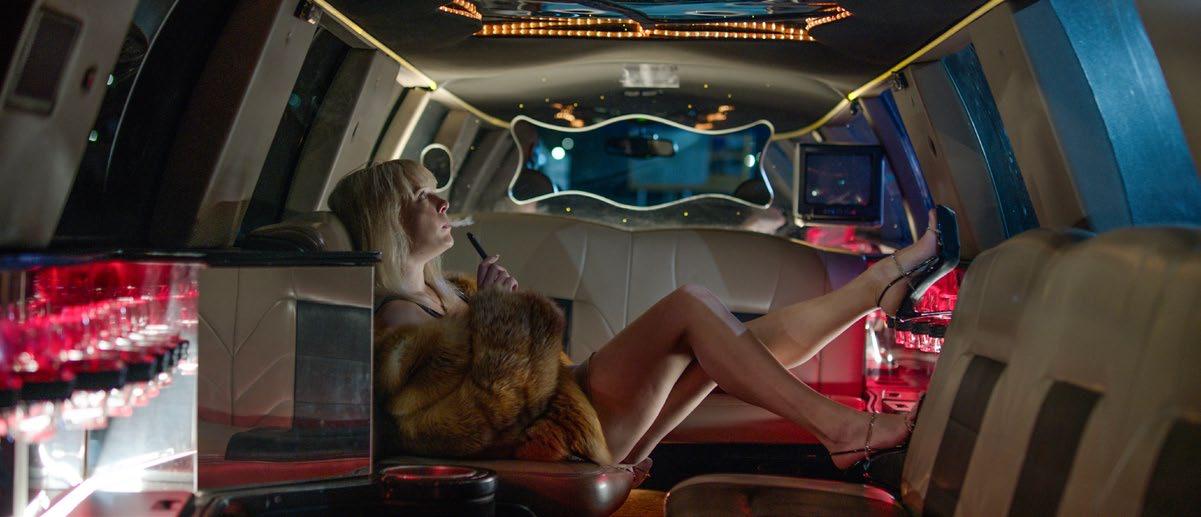
Having pushed pedal to the metal on the local cinema scene with her The Days That Confused seven years ago, Triin Ruumet has now completed her 2nd feature Dark Paradise.
Named after the Lana Del Rey track Dark Paradise, the film begins with the funeral service of oldschool macho-patriarch dad (Ain Mäeots), set to the tune of pop-rocker Hendrik Sal-Saller, followed by a wake. The daughter and son of the deceased, Karmen (Rea Lest) and Viktor (Jörgen Liik), are sitting at opposite ends of a long table. Their performative grief and its garish consequences set certain events in motion. What follows, is something very much in character for Triin Ruumet: in a vulgar yet profound way, and laced with black humour, she begins to map the existential labyrinth of young adults trying to grow up in
The critics have done their job
today’s world, haunted by various existential traps.
As it is the second featurelength film of a young author, we can only acknowledge the ongoing process of finding her own handwriting. In Ruumet’s case, the first steps are rather impressive, because she has managed to maintain the strengths of her debut, and develop further the style that might not have worked so well on Allar and his beamer buddies in the South Estonian woods, in The Days that Confused.
Dark Paradise is an example of a masterful creation of a film universe that allows one to feel completely immersed in the events as a
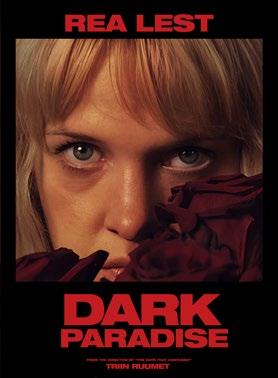
participant, not just a spectator. Karmen’s and Viktor’s paths intertwine through mutual misunderstanding and the concurrent explosive finale, leading us through exquisitely imagined set pieces and situations – from the mansion with its hunting trophies and the jacuzzi, signifying the cowboy capitalism at the end of the Nineties,

to the wooden student hideouts of Tartu, ceremonial vomit rituals in Annelinn tight spots, or knife fights in abandoned collective farm complexes of Estonian small towns.
In detailed settings, the characters are trying to find their place, but get more and more entangled in their confusion, juxtaposed by economically rational and emotionally estranged, well-off others, who need Karmen either for a signature to waive off rights to the inheritance, or practice their psychological superiority on her.
The director’s artistic collaboration with her partners (cinematographer Erik Põllumaa, production designer Matis Mäesalu, costume designer Liis Plato, editor Jaak Ollino Jr., composer Hendrik Kaljujärv, producer Elina Litvinova) has allowed to create an authentic setting where no element is dominant but rather in the service of the whole, projecting the rich inner life of the characters to the screen in a captivating manner. Due to the team’s approach, and the believable inner workings of the characters, buttons are pushed that awaken familiar human emotions probably in everyone who understands that life cannot be just a plateaued comfort journey towards the namaste-paradise. Existence is given meaning by the mistakes in the equation, and the challenges that have to be faced to overcome them.
While The Days that Confused suffered slightly from the hypnotic downward spiral of partying that the characters seemed to be imprisoned by, Dark Paradise links hedonism to the darker undercur-


Both Reimo Sagor and Rea Lest belong among the most prolific Estonian film actors.
Real-life partners Rea Lest and Jörgen Liik were both nominated at the Estonian Film and Television Awards.
rents of the human soul. Who knows, maybe it’s because 27-yearold Allar with his fascination for timber has been substituted for 27-year-old Karmen; whose life gets a boost when she understands that she has to give up her daddy’s Benz to repay his debts. Can the embarkation point for small town youngsters differ between boys and girls at 27? No doubt. Both characters are simple young people who try to avoid making adult choices, even when their teenage best before date is long overdue. That’s where Dark Paradise exceeds its predecessor: Ruumet brings in complex generational issues that probably cannot be properly solved even in one’s lifetime. Not to mention one film.
Dark Paradise is excellent at shedding light on issues that are inherently present, and too uncomfortable to address. Exploring the unspoken themes, it presents an emotional labyrinth of psychological challenges that keeps the characters constantly busy with escape attempts, even if they try to avoid facing the problem at all costs. Like in many good films, the director blackmails its protagonists, creating a situation where there are no other options left besides a step into the unknown.
Rites of passage, like the loss of a loved one and the consequent grief, are blended with ridicule for a parental propensity for lecturing, and a recalculation on the value of life into the debts left behind. The
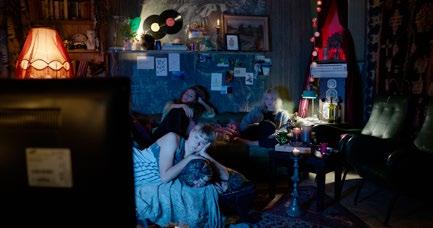

scars of a generation, left by a childhood in a broken home and constant lack of tenderness, are boldly exposed. The same generation vilified by the conservatives of today for having too few children.
Dark Paradise is a film for a society ailing from a seemingly incurable need for compensating – the bike has to be the coolest on the whole street, the party harder than the neighbour’s, and sex louder than the roommate’s. Unashamedly, we are shown the possible balancing mechanisms that can help one cope in 2023, be it Shibari lessons, being handcuffed to a radiator, or tattooing one’s emotional state onto someone’s face. Literally. Perhaps the filmmaker’s choices provoke, and Karmen’s journey baffles, but it seems there is no way of being honest these days without pissing someone off. In Dark Paradise, honesty flows freely like vodka at the dead daddy’s wake. At times it is selfish, often silly and pathetic, yet without any excessive sentimentality or finger pointing. It is a film that gives the watcher the freedom to choose what catacombs of the inner dark paradise to explore. Based on two films, Triin Ruumet’s personal style seems to consist of authentic storytelling, working with top professionals, undressing social standards, and adding some colour to the dark night of the soul. EF

The Invisible Fight is truly beautiful, aesthetically, and philosophically. Colourful visuals, precise framing, choreography polished to the max”, writes Emilia Kõiv.
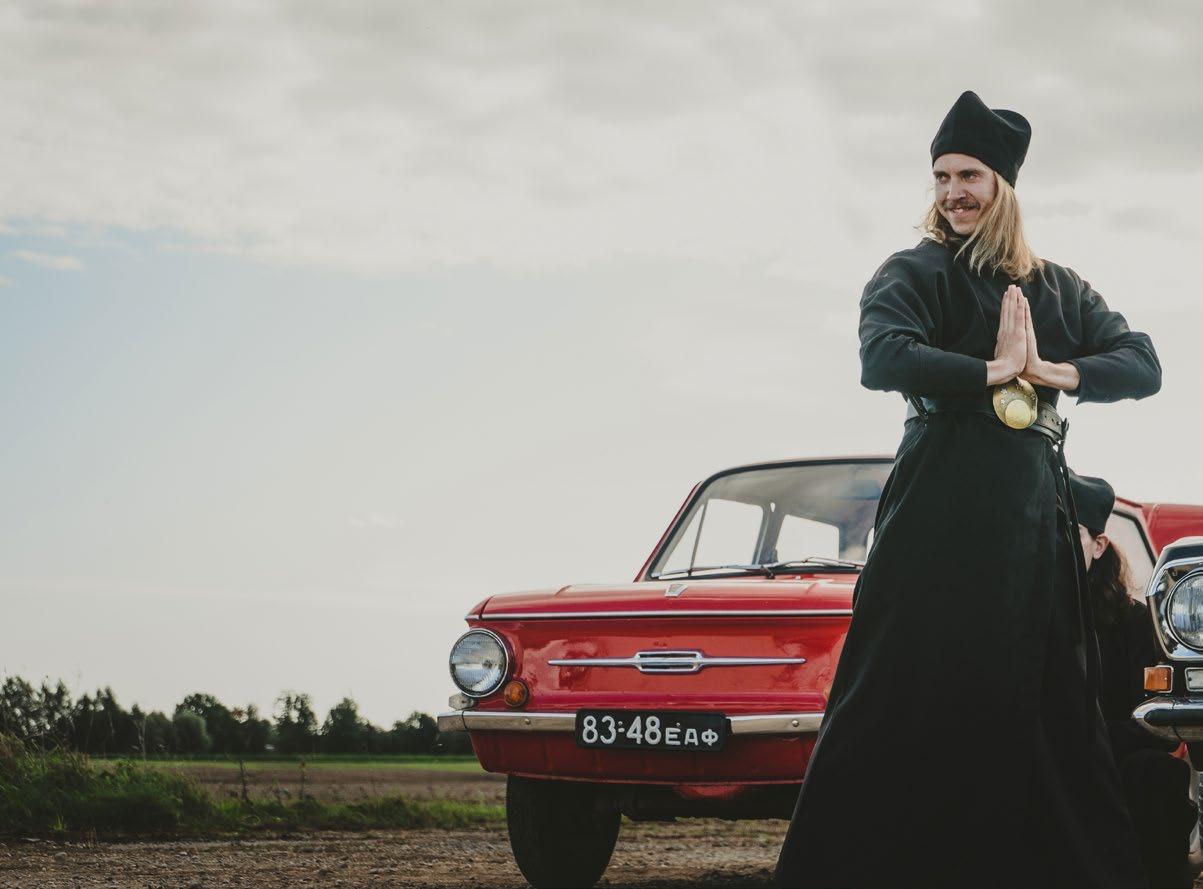
The two main tasks of a critic lie in two contradictory questions: how to write about something one didn’t like at all, and how to write about something one liked immensely?
Both roads are slippery, because excessive scorn, or prais, are both worthless. In the first case, the author writes essentially about themself, and if it’s the latter, the review won’t feel adequate in the end. So, even in case of extreme feelings, one must find that magical balance; to observe the whole thing from the distance. To be humble towards the text. A bit like in martial arts. Kung fu, for instance.
Humility and kung fu are the main subjects of my object of observation today. Why did I start with this tirade on criticism? It’s
The critics have done their job
because The Invisible Fight belongs exactly in that second category: a film that I liked immensely. Rainer Sarnet has done it again. The Invisible Fight is funny but heartfelt; philosophical but merry; peculiar but tasteful; absurd but familiar.
On the surface, it’s a story about Rafael, a young man who, having discovered and fell in love with kung fu in the army, ends up in an orthodox monastery, where they practice a style even cooler than regular martial arts. A style that requires faith, humility and subjugation of the mind, with the promise of invincibility. In the monastery, Rafael quickly develops a rivalry with a young monk called Irinei. In addition, he cannot rid himself of feelings for Rita who has been left behind in the city. The last bit is quite universal –


young men and their struggles with each other and their confused feelings for women. Understandable. But kung fu and monks? Faith that makes you the master of martial arts? What?
The most impressive aspect of The Invisible Fight is the fact that never mind how many questions one might have about the script beforehand, they all just vanish when the film begins. The Invisible Fight goes from zero to one hundred in a few seconds, just like Rafael’s Zaporozhets (everything is possible in the arts!), and it won’t slow down much before the ending titles.
Sarnet is able to stack everything up in such a way that even the most illogical things seem logical.
A whole lot of questions arise that remain unanswered, but that too is part of the film’s peculiar fla-
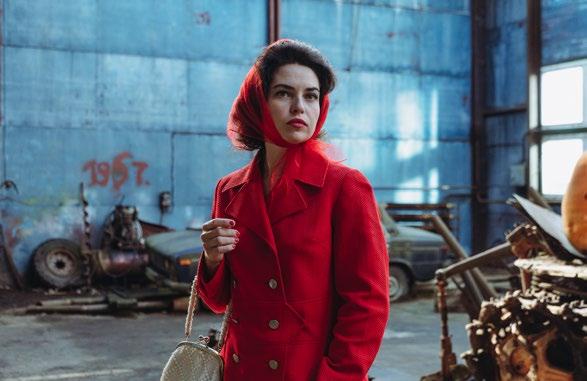
vour. Yes, Rafael pours a tin of fish on Rita’s chair and forces the woman to sit in it. Yes, the “holy madman” begging in front of the church wears an inexplicable chain mail costume throughout the film. Yes, even the kitchen ladies know their kung fu. So what?
Those who have been lucky enough to witness an authentic Seventies kung fu film, know that this world has its own rules that might not quite succumb to reality. The Invisible Fight takes those rules and adds some of its own –the sacred and the orthodox ones. And it’s this combination which makes the film irresistible. The
screening I attended in Viljandi was preceded by a conversation with the lead actor Ursel Tilk. Amongst other things, he was asked how the Orthodox institutions in Estonia have received the film. Have the filmmakers heard any complaints, maybe something about the humour being inappropriate to depict the monastery life. The answer came to me as a surprise at that time: quite the opposite, on a few occasions, members of the Orthodox concession, visibly moved, approached the actors and the team after the screening and thanked them for depicting man’s journey to God so beautifully.
 Ursel Tilk in his first lead in a feature film.
Ester Kuntu as the alluring Rita.
Ursel Tilk in his first lead in a feature film.
Ester Kuntu as the alluring Rita.

When the end titles came on the screen, I understood where this emotion might have come from. The Invisible Fight is truly beautiful, aesthetically, and philosophically. Colourful visuals, precise framing, choreography polished to the max. The frames flicker on the screen, with occasional defects, as if the film was decades old, but the risky effect hasn’t been overused and the period intentions of the visuals don’t look cheap. Jaanus Vahtra’s costume design deserves a special mention. The very being of the characters has been inscribed in their attire. On the other hand, a healthy element of chaos is present here too, to evoke a smile with a casual question mark signifying a question left unanswered.
One of the film’s best scenes already happens during the first few minutes, at a party where Rafael and Rita first meet. All the nuances mentioned are present here, with a special emphasis on choreography. The extras perform a slightly swing-like, utterly silly, dance with such devotion that it becomes hard to follow the main theme of the scene. It could be a separate short film presenting various dance couples, one being more pseudo-retro than the next. But, in fact, a tender, breezy, and hypnotic activity takes place in the centre. Rafael and Rita fall in love.
The Invisible Fight, directed by Rainer Sarnet, Homeless Bob Production, 2023.
Cast: Ursel Tilk, Ester Kuntu, Kaarel Pogga, Indrek Sammul, Rain Simmul, Maria Avdjuško, Tiina Tauraite, Mari Abel, etc.
Until Rita’s husband turns up and everything goes kung fu, that is.
The fight scenes are amazingly choreographed as well. Not much to do with real kung fu, I presume, but rather concentrating on the visual effect, and that is the most important thing. Like everything else in this film, the fight scenes are simultaneously gorgeous – swift and precise – and totally absurd. At one point, Rafael uses the infamous tickling technique, for example. The only concurrent problem is that it can cause dizziness in some viewers.
The editing is so fast at times, especially in the fight scenes, that combined with unexpected camera angles, it can result in vertigo. The speed with which the film whirls by, is another reason to rewatch it several times. The acting offers new nuggets to discover every time too.
Knowing nothing about the casting beforehand, it was a pleasure to recognize Indrek Sammul
and Rain Simmul at some point. And it took some time, especially with Sammul. We could list all the participating actors here, but the young trio of Rafael, Rita and Irinei – Ursel Tilk, Ester Kuntu and Kaarel Pogga – are certainly the trump cards here. Their personal charm and mutual chemistry offer most of the film’s greatest moments, be it laugh-out-loud funny, or sincerely thoughtful. Rafael and Rita might be a bit clear-cut as characters – courageous but stupid non-hero and his loved one –but Irinei is full of tension and contradiction. Is he good or evil? A pretender or just inexperienced and green in his new monk’s robe?
Describing The Invisible Fight, the makers have come up with the term “Kung fu gospel”. And although it doesn’t really sound much like gospel, music has an important part to play here. The mix of heavy metal and Orthodox psalms juxtaposed in a way that perfectly describes the harmony between different parts of the film. Kung fu, Black Sabbath, cartoonish special effects, and a colourful cast on one side, Orthodox church, beautiful Slavic chants, and the fundamental perspective of the meaning of love and faith on the other.
Such is the amalgam of The Invisible Fight, Variety saw its potential as a cult film, both domestically and internationally. Cult film, not a blockbuster, because the vast majority of cinemagoers will most likely consider it too weird. But God forbid Rainer Sarnet started making films to please the masses. May his fight remain like it is now: enjoyably strange, certainly wild, and, in all honesty, anything but invisible. EF
The Invisible Fight is truly beautiful, aesthetically, and philosophically. Colourful visuals, precise framing, choreography polished to the max.

SUPPORT INTENSITY IS UP TO 25%
CONTACT:
S U P P O R T O F T H E P R O D U C T I O N O F
F E A T U R E F I L M S , A N I M A T I O N S ,
D O C U M E N T A R I E S A N D S H O R T F I L M S
P A R T I C I P A T I O N O F A N E S T O N I A N
P R O D U C T I O N C O M P A N Y I S N E C E S S A R Y NO DEADLINES PARNUMAA.EE/EN/FILM-FUND

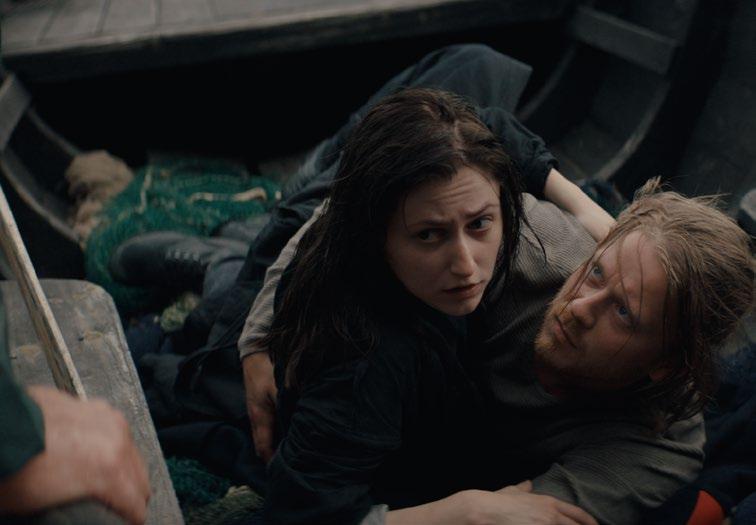
In the shimmering shores of Europe’s otherworldly edge, two teenage girls, Hanake and her best friend are discussing their first love interest while gazing out at yachts sailing to Kyoto. They whisper prayers and poems, the language of their longings. But the magic is fading in their isolated fishing village as they come to terms with a recent disaster, with some indulging in acts of erotic art, some in spiritual spells. It becomes clear that intimacy alone won’t help them process their loss.
In a deeply visceral tale, acclaimed Estonian director Marko Raat explores themes of love, illuminating the lives of a community who still believe that they are connected to the universe.
DIRECTOR MARKO RAAT
is an Estonian writer-director, active in the fields of arthouse fiction film and documentaries since 1999. He has a vast background in theatre directing, TV productions and in fine art. His latest feature length documentary Funeral Diaries premied at Dok.Fest Munich and was the opening film at DocPoint Tallinn. His short film A Chairman’s Tale had its debut at the 56th International Art Exhibition of la Biennale di Venezia. His feature length fiction film, The Snow Queen (2010), was developed within SOURCES2, KVIFF WIP and premiered at Montréal World Film Festival. His latest feature film 8 Views of Lake Biwa premiered at IFFR in 2024. Marko is currently working on his next documentary project, I’m a Bird Now
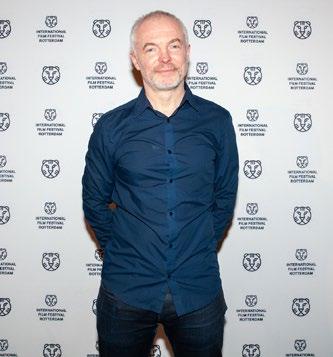
Original title: Biwa järve 8 nägu
Genre: coming of age, drama, avant-garde
Language: Estonian
Director: Marko Raat
Screenwriter: Marko Raat
Cinematographer: Sten-Johan Lill E.S.C.
Production Designer: Kristina Lõuk
Editor: Jaak Ollino Jr
Composer: Jakob Juhkam
Sound: Karri Niinivaara
Main cast: Elina Masing, Tiina Tauraite, Jan Uuspõld, Hendrik Toompere
Producers: Ivo Felt, Dora Nedeczky
Co-producers: Mark Lwoff, Misha Jaari
Produced by: Allfilm (EE), Bufo (FI)
World premiere: International Film Festival Rotterdam, January 2024
Festivals: D’A Film Festival de Barcelona
126 min / DCP / 1.85:1 / 5.1
CONTACT
Allfilm
Ivo Felt +372 517 6393 ivo@allfilm.ee allfilm.ee/work/biwa
SALES
Film Republic
Xavier Henry-Rashid xavier@filmrepublic.biz filmrepublic.biz


In 1933, a young woman leaves her rural home to chase her dream of becoming a writer in the city. She takes a job as a maid for a middle-aged printing house owner, who quickly starts pursuing her romantically. They marry, but his passionate declarations of love soon turn cold. As political tensions rise in the country, their love story unfolds in a divided society, revealing toxic behaviors and power games that start innocently but lead to dire consequences.
DIRECTOR HELEN TAKKIN
is an established short format director from Estonia. She’s worked with top commercial clients worldwide, won awards, and embraces diverse genres to craft meaningful heart-warming stories. Life
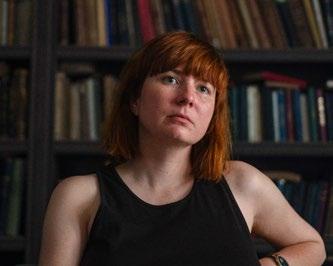
and Love is her first full length feature film. Selected filmography: How We Wake Up (short film, 2020), Descent (short film, 2020), Talk to Her (short film, 2019), Elo (short film, 2015)
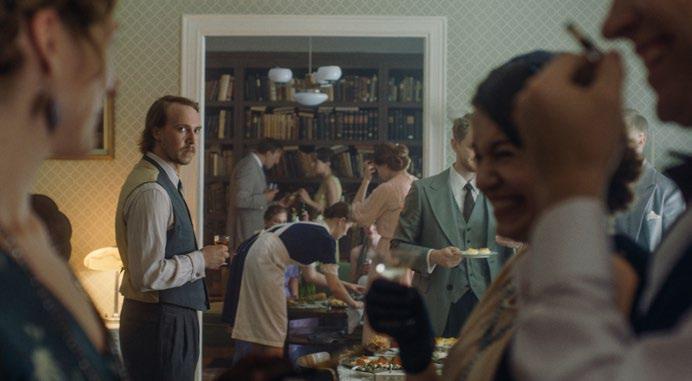
Original title: Elu ja armastus
Genre: drama
Language: Estonian
Director: Helen Takkin
Screenwriters: Martin Algus, Helen Takkin
Cinematographer: Alvar Kõue E.S.C.
Production Designer: Kamilla Kase
Editor: Sander-Kalle Somma
Music: Mick Pedaja
Sound design: Horret Kuus
Main cast: Karolin Jürise, Mait Malmsten, Loviise Kapper, Ursel Tilk
Producers: Kristian Taska, Adeele
Tähemaa, Tanel Tatter, Veiko Esken
Produced by: Taska Film, Apollo Film
Productions
Domestic release: February 2024
118 min / DCP / 2.39:1 / 5.1
CONTACT
Taska Film
Adeele Tähemaa +372 5392 6525
adeeletahemaa@gmail.com
taska.ee
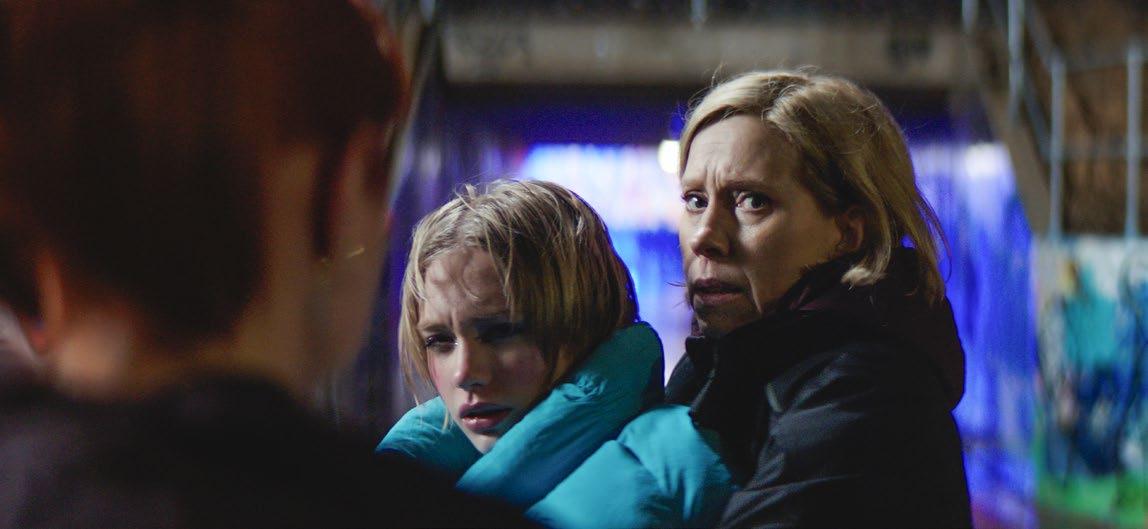
Helena is a paramedic, a professional caretaker. However, in her private life she seems to be unable to properly care for her family and remains unaware that she has emotionally abandoned her daughter Stefi a long time ago.
This autumn, the smart but selfdestructive 15-year-old Stefi turns into every mother’s nightmare. She stops going to school, doesn’t come home at night and gets involved with a violent youth gang. Helena spends her days in fear and her nights waiting and searching for her daughter.
When Stefi ends up in the hospital due to a severe overdose, Helena prepares a desperate, even insane plan. She intends to secretly imprison Stefi in the family’s old cottage and keep her there until the situation gets better. But things don’t go as planned. An unexpected chain of events throws Helena into a state of shock. There – trapped at the delicate boundary between reality and madness, expectations and hopes, her motherly love gets an entirely new meaning.
DIRECTOR LIINA TRIŠKINA-VANHATALO
studied humanities in Estonian Institute of Humanities (University of Tallinn) and started her film studies in 1998 at the European Film College in Denmark, followed by Film and Audiovisual School of Catalonia (ESCAC) in Barcelona. Since then, she has worked on tens of documentaries, as director and editor. She has also taught editing in Baltic Film, Media

and Arts School. Parallel to documentaries she started to work as a script-continuity for fiction features. Working closely with fiction scripts she ended up writing her own first script Bog in 2013 (based on Andrei Ivanov’s novel Ash). In 2016 she completed her second screenplay; a social drama Take It or Leave It that she also directed as her debut feature film. The film premiered in October 2018 in Warsaw IFF and was also selected as Estonian submission for Academy Award (Best International Feature Film) and was a nominee for best screenplay at Estonian Film and Television awards 2019. Lioness is her second full length feature film.
Original title: Emalõvi
Genre: psychological thriller
Language: Estonian
Director: Liina Triškina-Vanhatalo
Screenwriter: Liina Triškina-Vanhatalo
Cinematographer: Erik Põllumaa E.S.C.
Production Designer: Laura Dishlere
Editor: Moonika Põdersalu
Composer: Nils Kacirek
Sound: Seppo Vanhatalo
Main cast: Katariina Unt, Teele Piibemann
Producer: Ivo Felt
Co-producers: Sebastian Weyland, Guntis Trekteris
Produced by: Allfilm (EE), Heimathafen Film (DE), Ego Media (LV)
To be released: 2024
100 min / DCP / 2.39:1 / 5.1
Allfilm
Ivo Felt +372 517 6393
ivo@allfilm.ee allfilm.ee
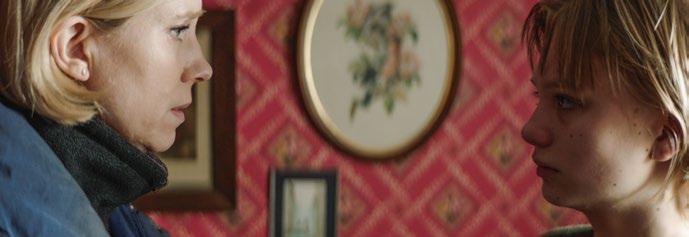

Aurora, the daughter of a religious leader, enters into a secret extramarital affair that challenges her life arrangements. She tries to please everyone, but when it’s time for a lavish wedding anniversary celebration, an uninvited guest arrives. Secrets begin to reveal themselves at the wrong time and in the wrong place.
How to find yourself and find your way back home when all the bridges have been burned?
DIRECTOR RAIN TOLK
is an actor, screenwriter and director. In 2007, he starred in Autumn Ball (dir. Veiko Õunpuu) that was the first Estonian film to reach the competition programme of the Venice Film Festival and also won the main prize in the Orizzonti programme. Together with Andres Maimik, Tolk has directed three feature-length feature films – 186 Kilometres (2007), Farts of Fury (2011) and Douchebags (2012). He has also made several documentaries.
DIRECTOR ANDRES MAIMIK
is a documentary, feature and commercial film director, screenwriter and essayist, born in 1970 in Tallinn. He is partner at the company Kuukulgur Film. Maimik has taught documentary filmmaking at the Estonian Academy of Arts and Tallinn University. In his works the comedy mixed with the tragedy on the contemporary human condition has attracted younger audiences to his works. He has co-directed several feature films, including 186
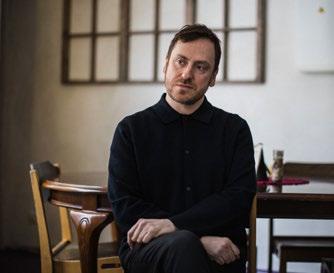
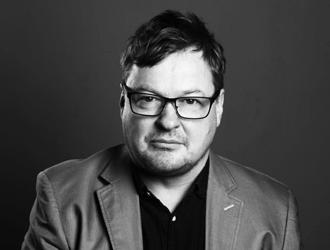
Kilometres (2007), Farts of Fury (2011), Douchebags (2012), Cherry Tobacco (2014) and The Man Who Looks Like Me (2017).
Original title: Aurora
Genre: dramedy
Language: Estonian
Directors: Rain Tolk, Andres Maimik
Screenwriters: Rain Tolk, Andres Maimik
Cinematographer: Heiko Sikka E.S.C.
Production Designer: Anneli Arusaar
Editor: Patrik Antonjuk
Composer: Sten Sheripov
Sound: Horret Kuus
Main cast: Maarja Johanna Mägi, Ott Kartau, Jörgen Liik, Kersti Heinloo, Indrek Taalmaa, Sten Zupping, Rea Lest-Liik, Karin Rask, Margus Jaanovits, Marit Meri
Producer: Madis Tüür
Produced by: Kuukulgur Film
To be released: 2024
100 min / DCP / 16:9 / 5.1
CONTACT
Kuukulgur Film
Madis Tüür +372 5691 1224
madis@kuukulgur.ee kuukulgur.ee
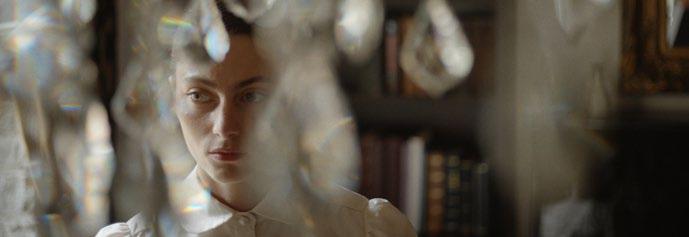

Rolling Papers is a film that follows Estonian youth as they figure out life in their twenties, dealing with uncertainties and searching for purpose.
comes from Tallinn, Estonia. He has been making short films since he was in elementary school. In 2022, he graduated from the Estonian Academy of Arts, earning a degree in photography. His first feature Tree of Eternal Love (2022) was invited to Just Film FF, Cottbus, Helsinki IFF and many others. Rolling Papers is Meel’s second feature film.



Original title: Pikad paberid
Genre: coming-of-age, comedy, drama
Language: Estonian
Director: Meel Paliale
Screenwriter: Meel Paliale
Story by: Meel Paliale & Urmet Piiling
Cinematographer: Markus Mikk
Production Designer: Jasmin Kulagina
Editor: Meel Paliale
Sound: Joonas Taimla
Main cast: Mihkel Kuusk, Karl Birnbaum, Maria Helena Seppik, Edgar Vunsh
Producers: Rain Rannu, Tõnu Hiielaid, Urmet Piiling
Produced by: Tallifornia
To be released: 2024
90 min / DCP / 2.39:1 / 5.1
Tallifornia
Tõnu Hiielaid tinamount@tallifornia.com tallifornia.com

Jüri is an unemployed young man with esoteric interests. He shares his childhood apartment with his overprotective mother Ilmi and dreams of true love. Ilmi dreams of travelling to Europe, setting aside every penny she can save while supporting her son. When Wolfgang, a mysterious Austrian wearing breeches and a feathered cap moves in next door, Jüri and Ilmi are drawn into strange events. Jüri meets Gertrud, the woman of his dreams, and the line between reality and fantasy gets even more blurry.

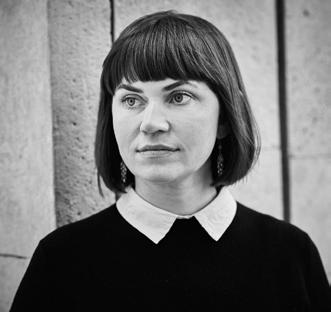
The Black Hole interweaves three urban stories into a bittersweet and absurdly comical parable about our fraught times.
DIRECTOR MOONIKA SIIMETS
is an internationally acclaimed Estonian director and scriptwriter. She graduated from Tallinn University Baltic Film, Media and Arts School and attended Judith Weston’s scriptwriting and directing master classes in LA. Her filmography includes award-winning documentaries, TV series, short films and feature films such as Is It You? (2013 Stockholm FF), The Last Romeo (2013 Tel Aviv ISFF), The Little Comrade (Busan IFF 2018, Busan Bank Award, Lübeck 2018, Camerimage 2018, Tallinn Black Nights Film Festival 2018, Palm Springs 2019), Two Hours to Happiness (2022, DocPoint). The Black Hole is her second feature film.
Original title: Must auk
Genre: comedy, fantasy, romance
Language: Estonian
Director: Moonika Siimets
Screenwriter: Moonika Siimets
Cinematographer: Ivar Taim E.S.C.
Production Designers: Kari Kankaanpää, Getter Vahar
Editor: Joona Louhivuori
Composer: Ann Reimann
Sound: Matis Rei
Main cast: Ursel Tilk, Rea Lest-Liik, Eva Koldits, Liina Tennosaar
Producer: Riina Sildos
Co-producers: Emilia Haukka, Jussi Rantamäki
Produced by: Amrion Production (EE), Aamu Film Company (FI)
To be released: 2024
98 min / DCP / 2.39:1 / 5.1
CONTACT
Amrion Production
Riina Sildos +372 504 8985
info@amrion.ee armion.ee
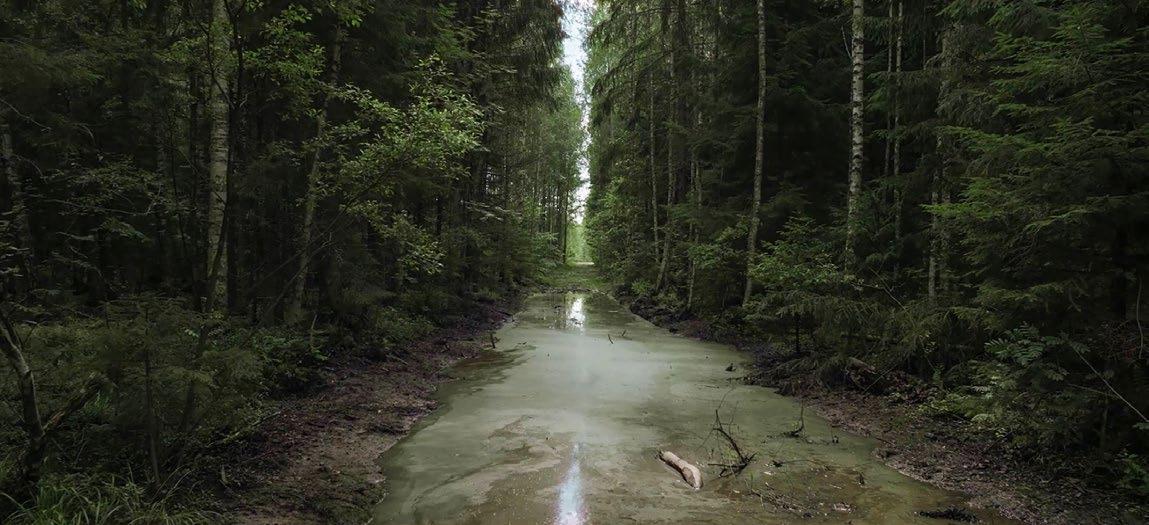
Vertical Money is a nature catastrophe film that made scandalous news even before its release in Estonia. Shot in more than 60 different places in Estonia the film opens the viewer to the current state of Estonian forests and shows how political decisions have affected the use of the common property. The film also offers solutions to move out of the deadlock of the debate and directs attention to the information that has been buried under the messages of controlled communication in the information noise of the forest war. The same kind of war that’s being held across the globe.
DIRECTOR MARTTI HELDE
is a highly valued director for his daring ideas and innovative approach to the film language. His debut feature In the Crosswind premiered at the Toronto IFF in 2014, followed by more than 80 festivals, numerous critics’ and audience awards, as well as theatrical release in several countries. Helde’s second feature Scandinavian Silence made on micro budget premiered at the Shanghai and Karlovy Vary IFF in 2019 winning the Europa Cinemas Label prize. Since then Martti Helde has been working on the upcoming feature documentary Vertical Money, short documentary Human Being about Bobby Sagger, as well as been a creative director for the Estonian Pavilion at the World Expo Dubai 2020. In early development is also Helde’s new feature drama Silverwhite
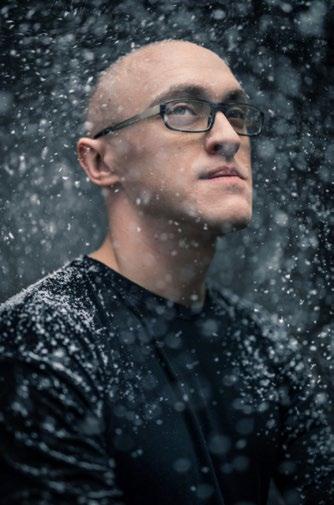
Original title: Vara küps
Theme: history, environment, nature, politics
Language: Estonian
Director: Martti Helde
Screenwriters: Martti Helde, Mattias Veermets, Pilleriin Raudam
Cinematographer: Mattias Veermets
Editor: Jaak Ollino Jr.
Composer: Sander Mölder
Sound: Janne Laine
Producer: Elina Litvinova
Produced by: Three Brothers
Domestic release: January 2024
86 min / DCP / 2.39:1 / 5.1
CONTACT
Three Brothers Elina Litvinova +372 5691 3377 elina@threebrothers.ee

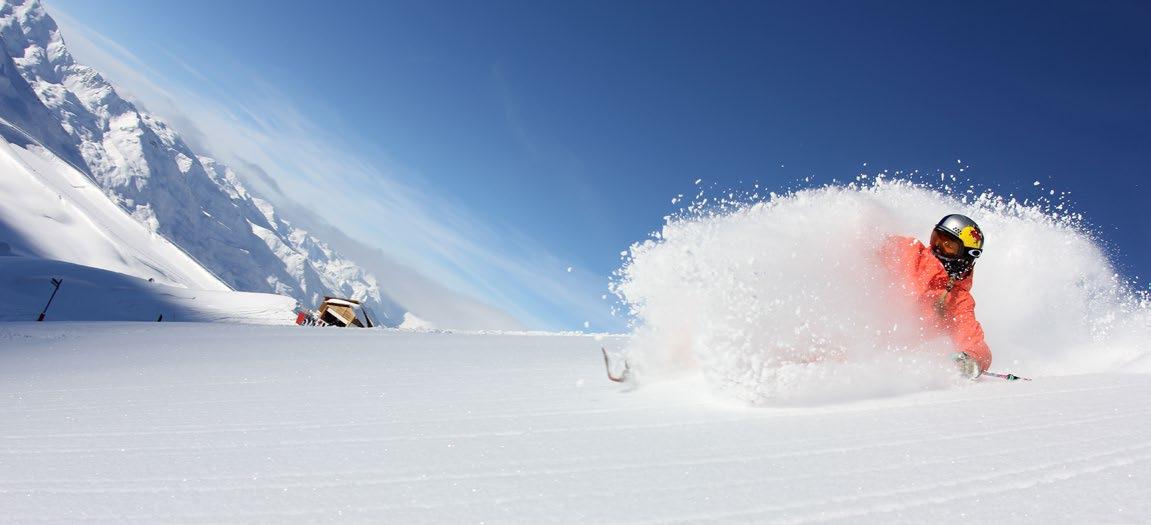
In this gripping tale of resilience, Kelly Sildaru rises as a record-breaking freestyle champion despite hailing from a mountain-less country. A devastating injury shatters her Olympic dreams, but her father, also her coach, pushes her to recover and return to the slopes. Navigating mental abuse and manipulation, she makes her most successful season. Breaking free, seizing control of her life, and rediscovering her love for the sport become her toughest challenges yet.
DIRECTOR LEANA JALUKSE
is the writer of award-winning Mother (2016, IP at Tribeca, Best Feature at Kitzbühel, Best Estonian Feature at Tallinn Black Nights, Estonia’s national entry for the Oscars, Best Screenplay nominee at Estonian Film and TV Awards), Fire Lily (2018, IP at Mannheim-Heidelberg), Deserted (2021, WP at Busan), and two short

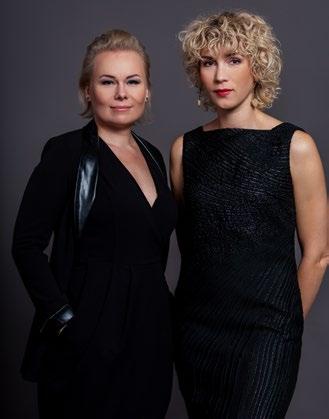
films. She is currently working on a number of series projects. Leana is a member of the Estonian Screenwriters’ Guild and the Writers’ Guild of Great Britain.
DIRECTOR HELEN LÕHMUS
is Estonian producer, director and production designer. Starting her career in local television in 2004 and moving to international projects in 2011, starting with Walt Disney high school drama After School where she served as the production and costume designer. Lõhmus was a producer and production designer for Lao-France-Estonia co-production of Dearest Sister. The film won numerous awards and was the Academy Award candidate for Laos in 2017.
Original title: Kelly – kellegi
teise unistus
Theme: sports documentary
Languages: Estonian, English
Directors: Helen Lõhmus, Leana Jalukse
Screenwriter: Leana Jalukse
Cinematographers: Mart Ratasepp
E.S.C., William Mermoud
Editor: Mirjam Jegorov
Composer: Sten Sheripov
Sound: Dmitry Natalevich
Producers: Helen Lõhmus, Sten-Kristian Saluveer
Co-producer: David Lacote
Produced by: Oree Films (EE), PVS Company (FR)
World Premiere: Hot Docs 2024
90 min / DCP / 2.00:1 / 5.1
CONTACT
Oree Films
Helen Lõhmus +372 5348 0281
helen@oreefilms.com oreefilms.com
SALES
Autlook Filmsales
Andrea Hock
andrea@autlookfilms.com autlookfilms.com
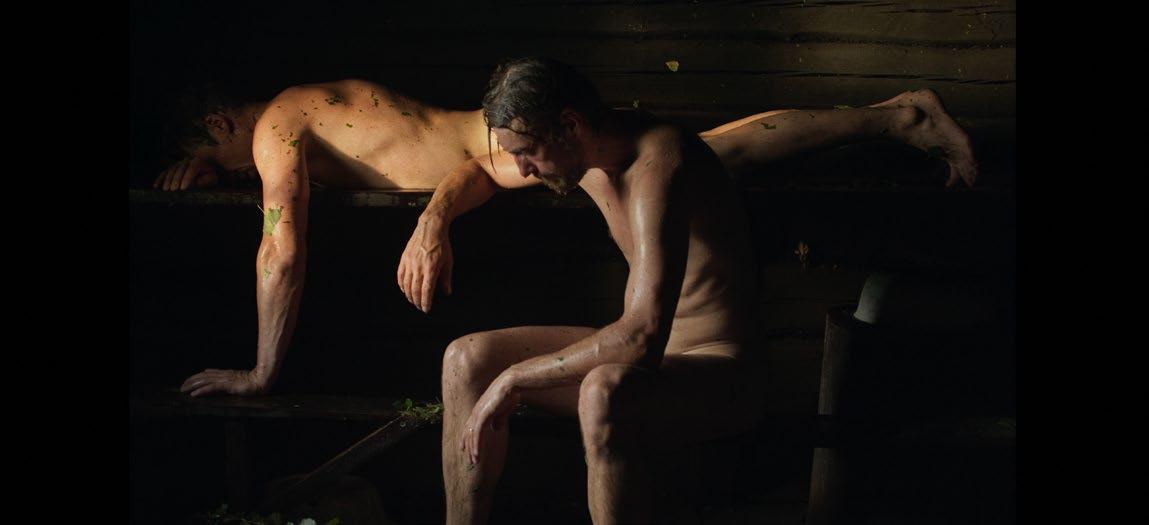
Sauna Day invites you into the world of Southern Estonian men who go to the dark-intimate space of a smoke sauna after a hard day’s work. Beneath their tough exteriors lies a desire for connection, veiled in secrecy.
DIRECTOR ANNA HINTS
is an Estonian film director with a background in contemporary art and folk music. Anna’s debut feature documentary Smoke Sauna Sisterhood won the Directing Award at Sundance Film Festival and European Film Award for Best Documentary in 2023. It was the Estonian National Entry at 96th Academy Awards, has been sold to 33 territories and nominated to numerous awards winning so far 32. Anna belongs to music group EETER that collaborated with composer Eðvarð Egilsson for Smoke Sauna Sisterhood
DIRECTOR TUSHAR PRAKASH was born in New Delhi and is a graduate of the National Polish Film School in Łodz.
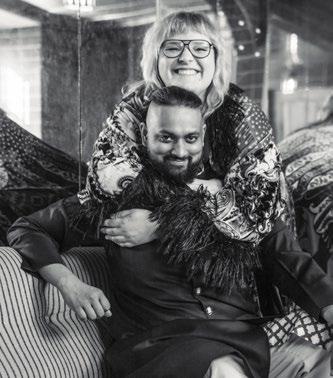
His work includes editing Anna Hints’ Smoke Sauna Sisterhood, which won the Directing Award at Sundance Film Festival and the European Film Award for Best Documentary. The film has won numerous awards, including being nominated for the LUX European Audience Film Award and the Critics’ Choice Documentary Award.

Original title: Sannapäiv
Genre: drama
Languages: Estonian, Võro
Directors: Anna Hints, Tushar Prakash
Screenwriters: Anna Hints, Tushar Prakash
Cinematographer: Ants Tammik E.S.C.
Production Designer: Inga Vares
Editor: Emeri Abel
Sound Designer: Tanel Kadalipp
Main cast: Agur Seim, Rasmus Kaljujärv
Producers: Johanna Maria Paulson, Evelin Penttilä
Produced by: Stellar Film
To be released: 2024
World premiere: La Semaine de la Critique / Cannes Critics’ Week, May 2024
13 min / DCP / 3:2 / 5.1
CONTACT
Stellar Film
Johanna Maria Paulson +372 5332 7860
johanna@stellar.ee
stellar.ee


The film tells a story of deep emotions, skilled manipulation, unfulfilled hopes, and glamorous cruelty.
Detective Renzo monitors the activities of Gabriella, Eddy, and Francesca through security cameras in his office. They are preparing, using intricate conspiracy tactics, to commit a terrorist act.
Is it possible to prevent a catastrophe when cheek is already against cheek?
has worked as an art director and director of animated films since 1976. Has been active as a caricaturist and illustrator since the end of the 1960’s. As a freelancer graphic artist, he has had over 30 solo exhibitions in various European countries. Pärn has made 19 animated films (including an animated feature) as director, scriptwriter and art director. He has received more than 80 awards from top film festivals around the world. Pärn has received eight lifetime achievement awards.
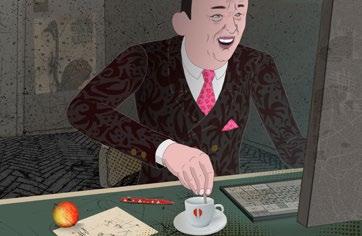
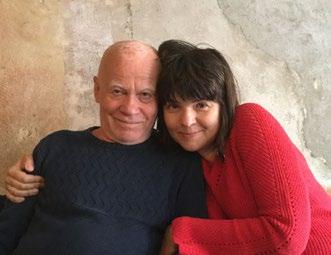
graduated from the graphic arts department at the Belarusian State Academy of Arts in 2000. Worked as an art director and animator in the animation department at Belarusfilm Studio in 1996–2003. Completed a course in film directing at the La Poudrière animation school in France from 2003 to 2005. Lives and works in Estonia since 2006. She has made 6 animated films together with Priit Pärn as co-director and co-art director at Eesti Joonisfilm Studio.

Original title: Luna Rossa
Language: no dialogue
Directors: Priit Pärn, Olga Pärn
Screenwriter: Priit Pärn
Artists: Priit Pärn, Olga Pärn
Layout artist: Priit Pärn
Actors: Tanel Saar, Karolin Jürise, Ago Soots
Direction of Artists: Priit Pärn
Animators: Priit Pärn, Aili Allas, Tarmo
Vaarmets, Vesse Veering, Remi Juillet
Motion Capture operator,
3D technical animator: Vesse Veering
Motion Capture assistant: Mattias Mälk
Backgrounds artists: Priit Pärn, Olga Pärn
3D Backgrounds artist: Vesse Veering
Editors: Priit Pärn, Olga Pärn
Composer: Antonio Vian, Gerhard Winkler
Sound Designer: Olivier Calvert
Producers: Kalev Tamm, Emmanuel-Alain
Raynal, Pierre Baussaron
Technique: MoCap, 3D and 2D traditional animation
Produced by: Eesti Joonisfilm (EE), Miyu Productions (FR)
To be released: 2024
33 min / DCP / 1.85:1 / 5.1
CONTACT
Eesti Joonisfilm
Kalev Tamm +372 677 4228
info@joonisfilm.ee
joonisfilm.ee
facebook.com/Joonisfilm
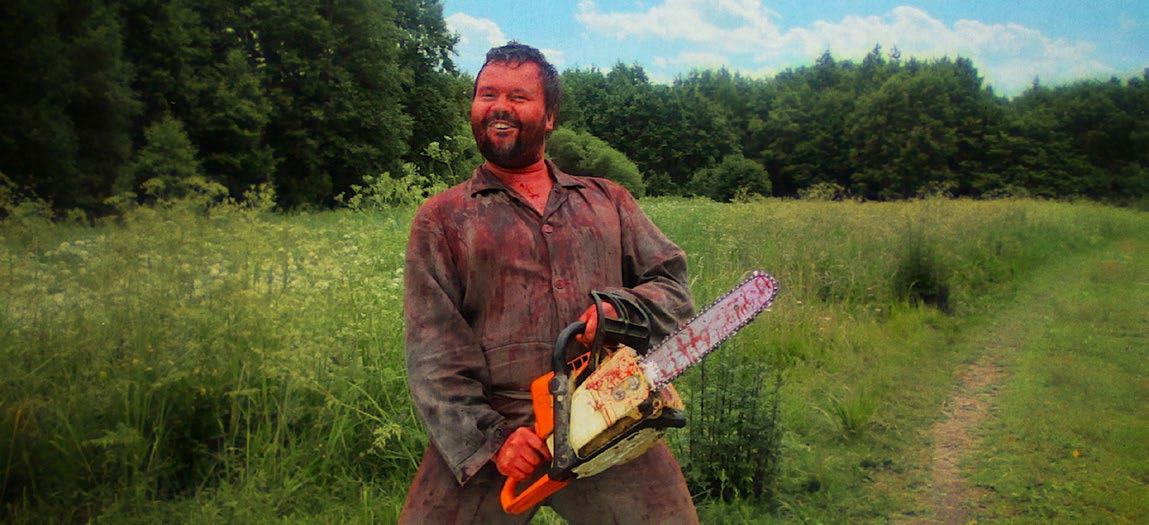
Adventures await when new lovers are separated by a chainsaw killer.“
After a modest 10 years in postproduction, we can finally present to you Chainsaws Were Singing – an absolutely bonkers romantic horrorcomedy-action musical from Estonia!
A shamelessly naughty film that makes every possible use out of chainsaws (except for cutting wood of course), packing as much entertainingly exploitative craziness into a single movie as physically possible.
Fun inventive kills? Check. Romance? Check. A chainsaw solo? Check. Spontaneously exploding cars, splattery shootouts, cute animal attacks or using a laughing baby to double-punch pervy twincest twins in the face? Of course. Throw in some nerdy horror movie references and unexpectedly high value musical numbers – entertained you shall be!
Monty Python meets The Texas Chainsaw Massacre meets... Les Misérables
DIRECTOR SANDER MARAN
began making short films in high school with friends and attended the Baltic Film and Media School for a while. He dropped

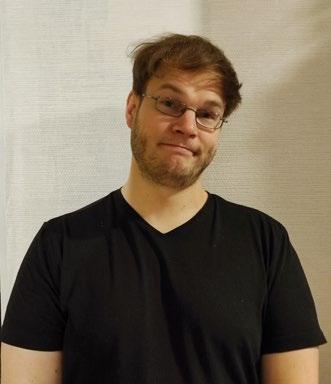
out in 2012 to finish his short film Curiosity Kills in which a radioactive rat attacks an unsuspecting family. The project was successful among international genre film festivals and so he and creative partner Jan Andresson went rogue and started making short films outside of film school. That led to Maran’s debut feature film Chainsaws Were Singing, a crazy genre epic that was shot guerilla-style in 2013 with co-producers Kaur Maran, Jan Andresson and Karl-Joosep Ilves. The film spent a whopping 10 years in postproduction due to its genre rich content and lack of funding and was finally finished in 2024. Aside from Curiosity Kills (2012), Maran’s previous short films include Framed by a Kid (2012), Rubik’s Cube Terror (2012) and Turbosledge (2013).
Original title: Mootorsaed laulsid
Genre: comedy, romance, horror, musical, action, fantasy
Language: Estonian
Director: Sander Maran
Screenwriter: Sander Maran
Cinematographer: Sander Maran
Production Designer: Kadri Kuusler
Editor: Sander Maran
Composer: Sander Maran
Sound: Sander Maran, Jan Andresson, Gert Mäll, Rando Arand
Main cast: Karl-Joosep Ilves, Laura
Niils, Martin Ruus, Janno Puusepp, Rita Rätsepp
Producer: Kaur Maran
Co-producers: Sander Maran, Jan
Andresson, Karl-Joosep Ilves
Produced by: Marani Bros
World premiere: Haapsalu Horror & Fantasy FF (opening film), April 2024
117 min / DCP / 2.39:1 / 5.1
CONTACT
Marani Bros
Sander Maran / Kaur Maran
+372 51927075
maranibros@gmail.com
chainsawsweresinging.com











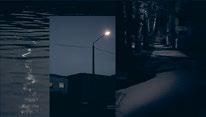
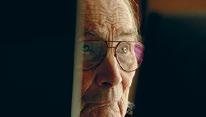

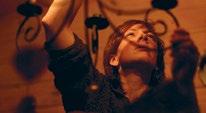











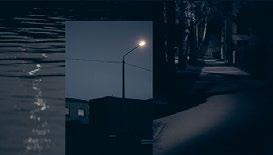


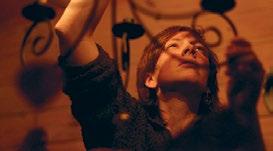
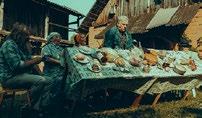
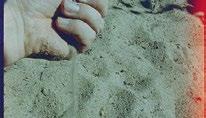
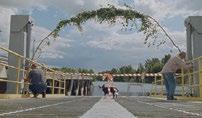
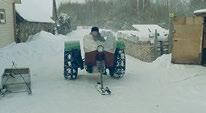
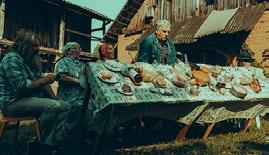



CUT
CUT YOUR TIME
CUT
CUT
30% cash rebate on local expenses
All